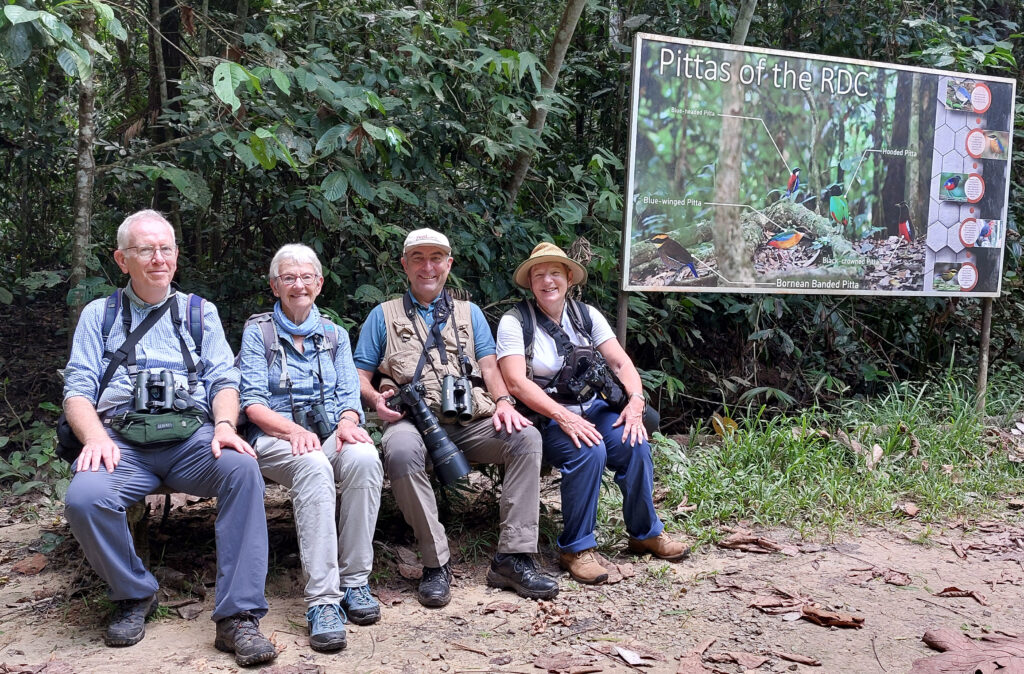
After two flights totaling just over 15 and a half hours, here we are in Kota Kinabalu on the northwest coast of Borneo, just under 6° north of the equator and 7004 miles from Heathrow airport, with heavy rain bouncing off the tarmac! Here, we meet our local guide Adrian and transfer to the nearby very posh Hyatt Centric Hotel in the centre of town. Apparently, there is a typhoon off Vietnam and the prolonged heavy rain is “not normal”, and so abnormal weather seems to be the norm wherever we go these days!
This morning, Adrian meets us at 4.50am and we drive for about 90 minutes up into the Crocker Range near Tambunan at an altitude of around 4920 feet where our first birds, just after first light at 6.15am are a real odd couple; Grey Wagtail and the endemic Chestnut-hooded Laughingthrush! Around 6.45am, we park at the end of a narrow winding track up in swirling mist where early birds include White-throated Fantail, Grey-chinned Minivet, Indigo and Little Pied Flycatchers and the yellow sarawacensis race of Mountain Leaf Warbler, plus the endemic Golden-naped Barbet, Bornean Leafbird, Pale-faced Bulbul, Mountain Black-eye, and more Chestnut-hooded Laughingthrushes feeding on the ground alongside numerous Bornean Black-banded Squirrels. Also here, we find several large Clearwing Moths with a wingspan almost as wide as a man’s hand!


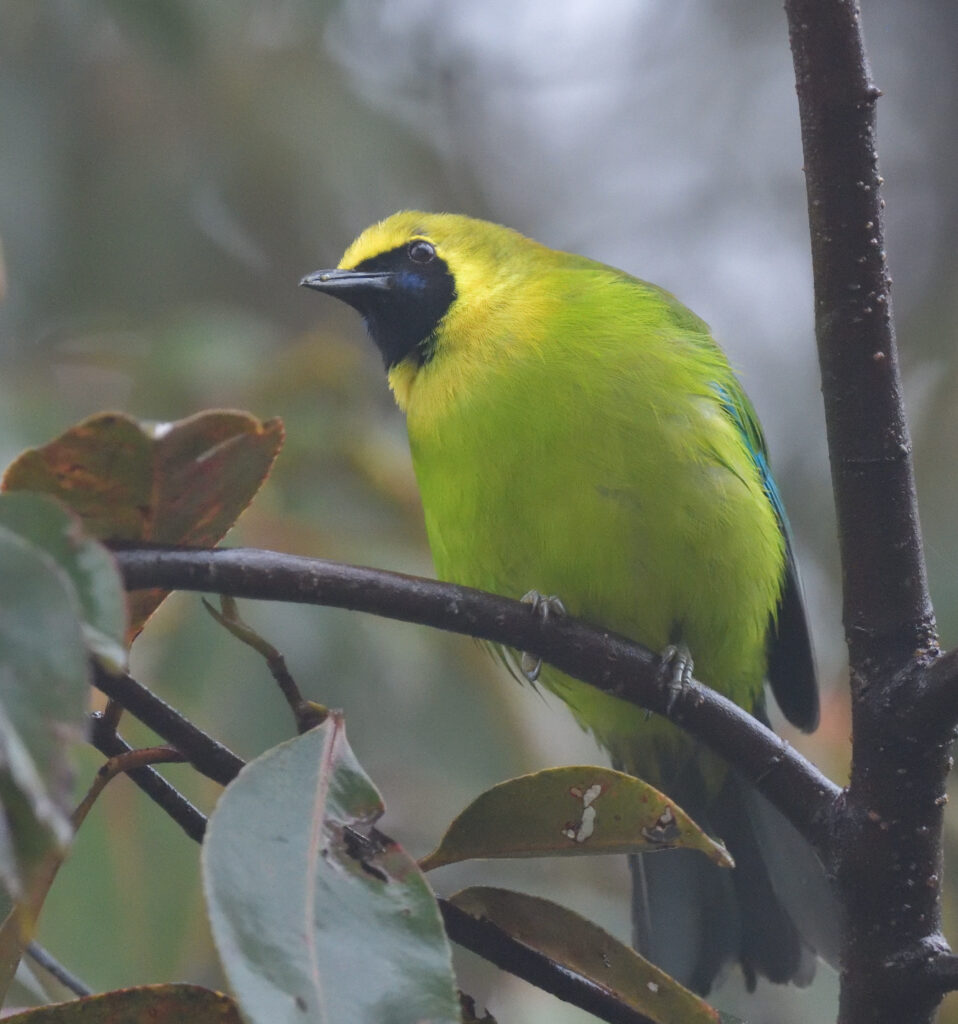
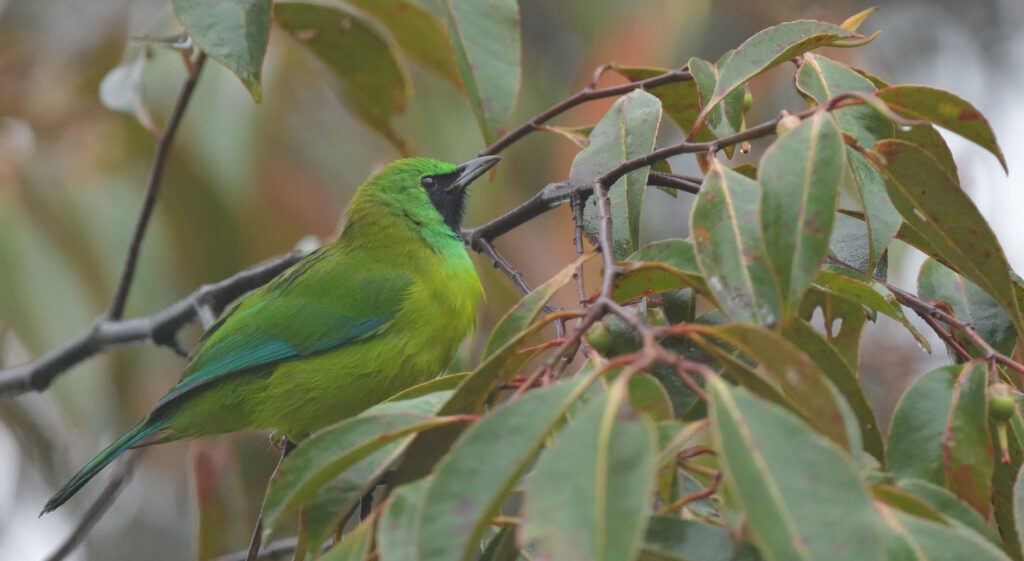
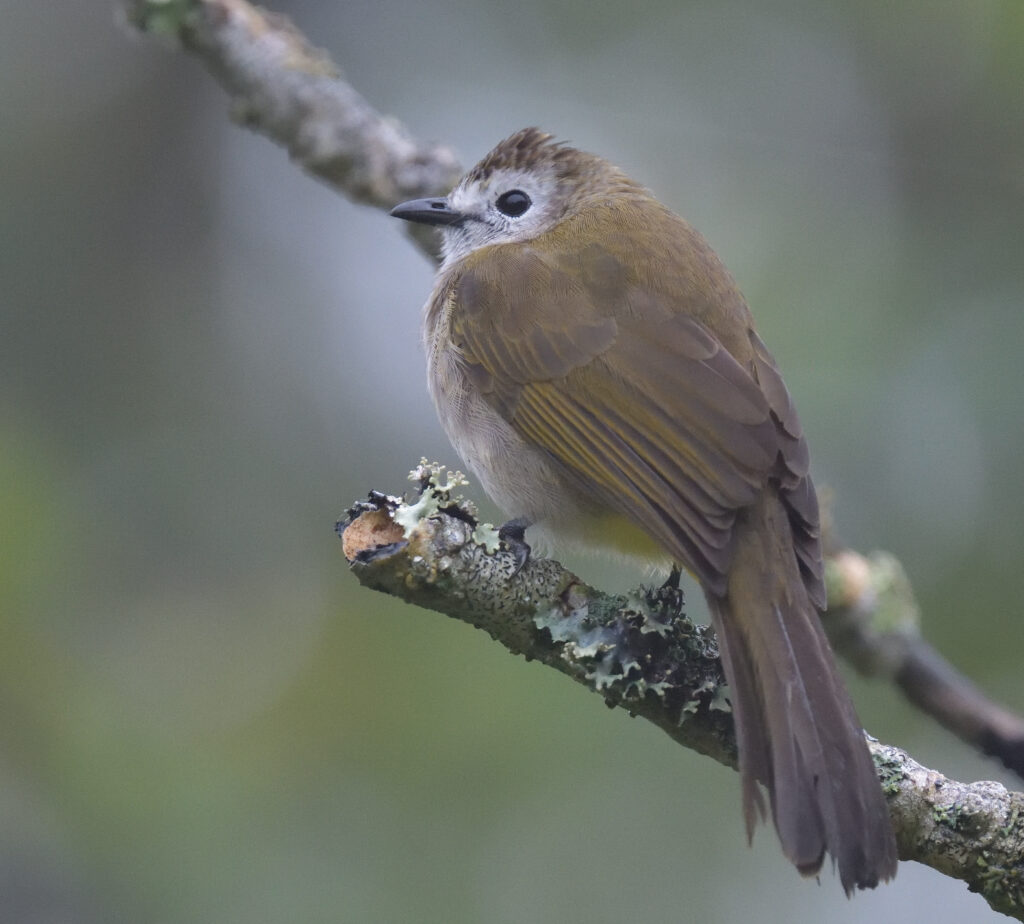

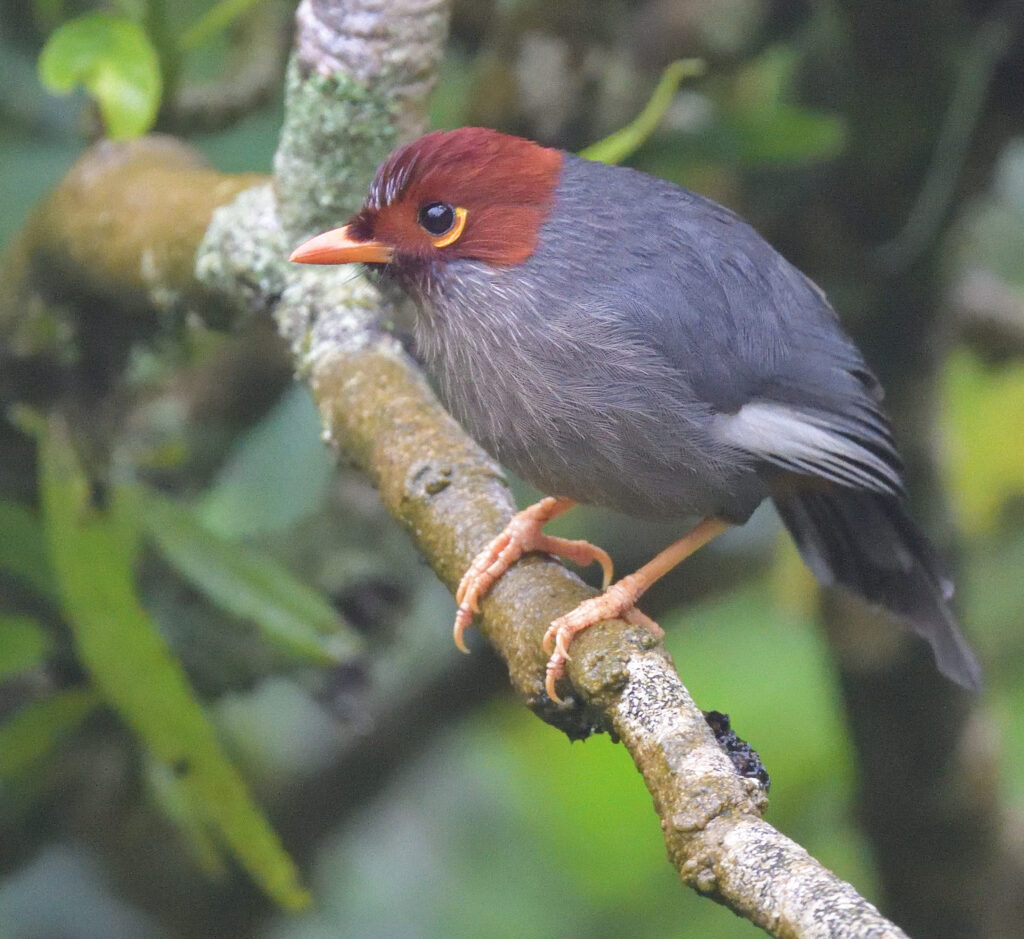
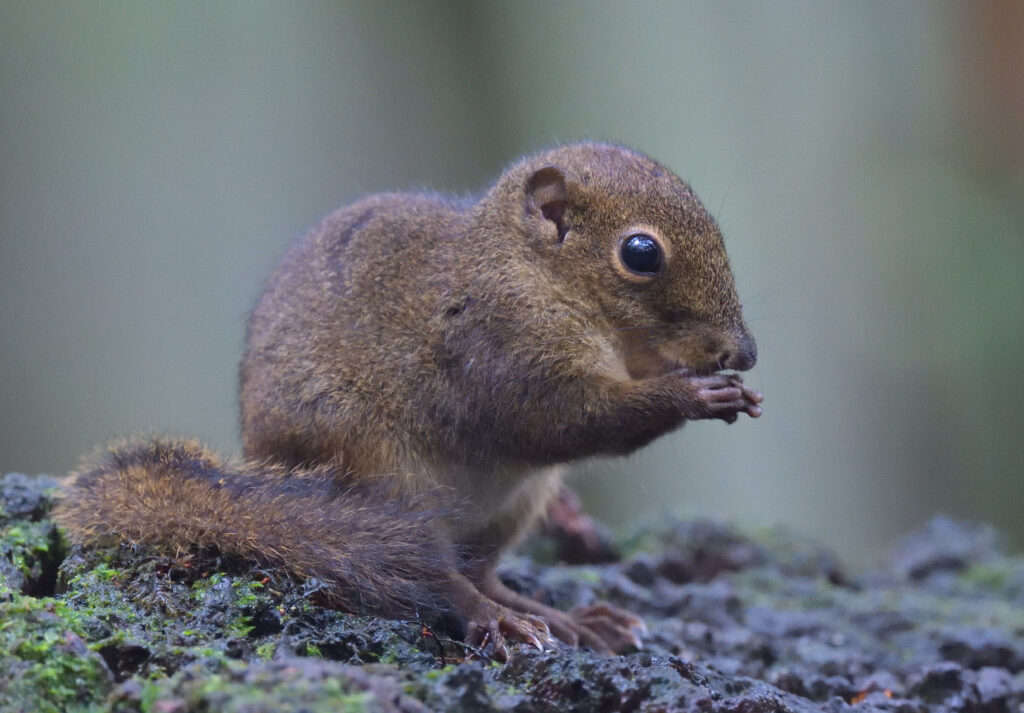
From here, a short muddy path leads to a makeshift screen where two endemic species of shy and elusive partridges have learned that food is readily available when called. The first to arrive are very rotund Crimson-headed Partridges, and once they have had their fill and disappear back into the forest, Red-breasted Hill Partridges arrive to polish off the remaining grains of corn. During the stakeout here, we also spot Snowy-browed Flycatcher and the endemic Eyebrowed Jungle Flycatcher.
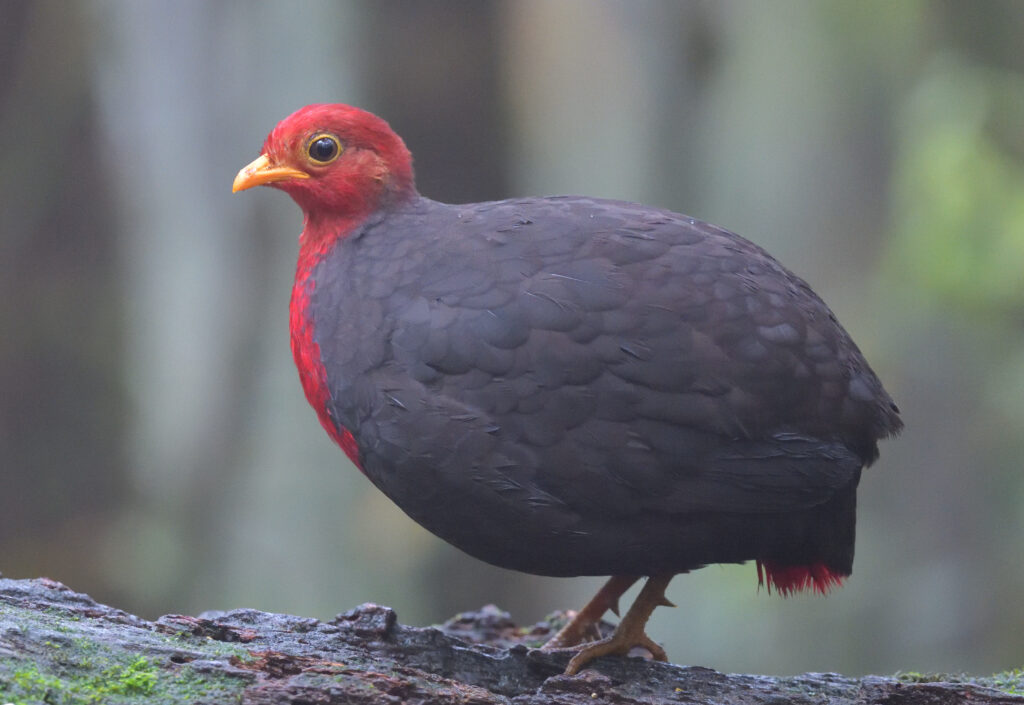
After a picnic breakfast back at the vehicle, we drive down to the Rafflesia Information Centre at around 3940 feet above sea level, where we find a very vociferous Dark Hawk Cuckoo and then the endemic Bornean Treepie, Mountain Barbet, Chestnut-crested Yuhina and a stunning male Whitehead’s Broadbill as well as Black-capped White-eye, Ochraceous and Cinereous Bulbuls and Black-and-crimson Oriole, while another stop lower down the road produces White-browed Shrike Babbler and a black-crested Bornean Bulbul, making a total of 13 endemic species seen today!
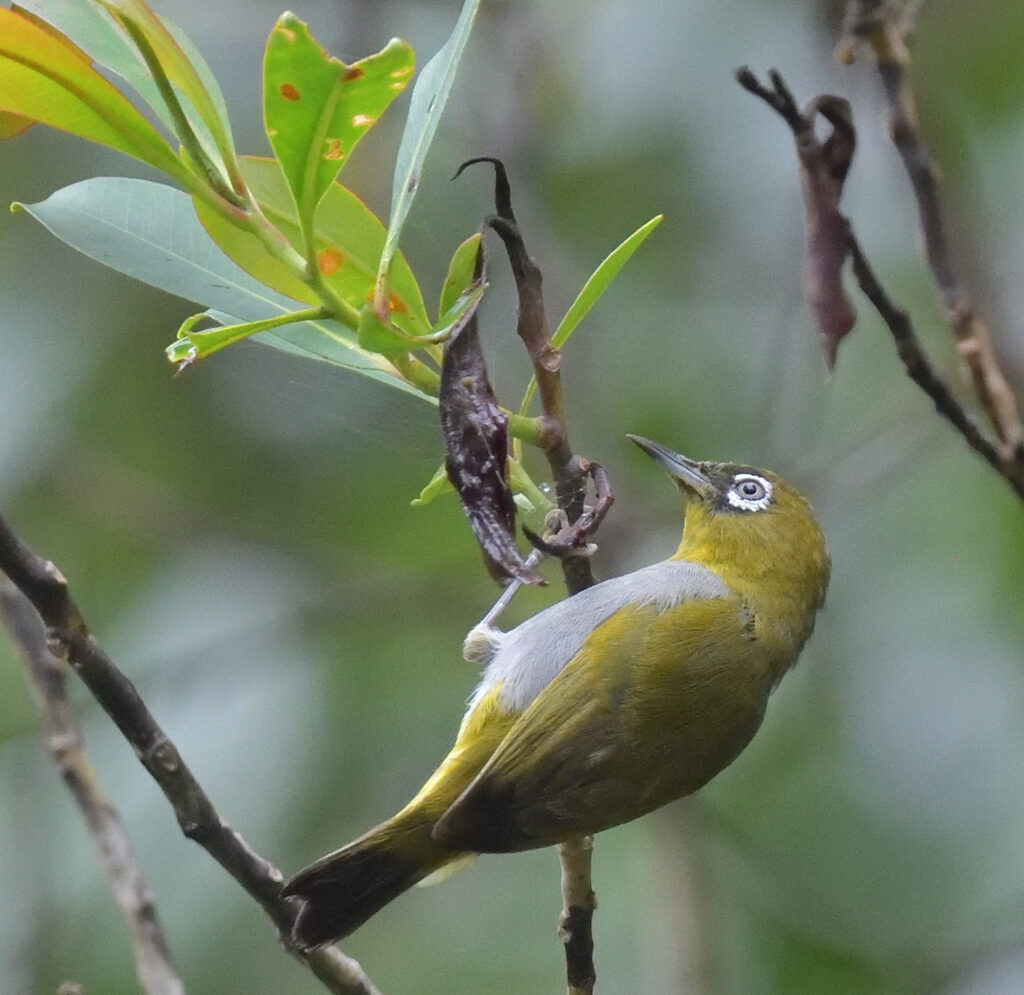
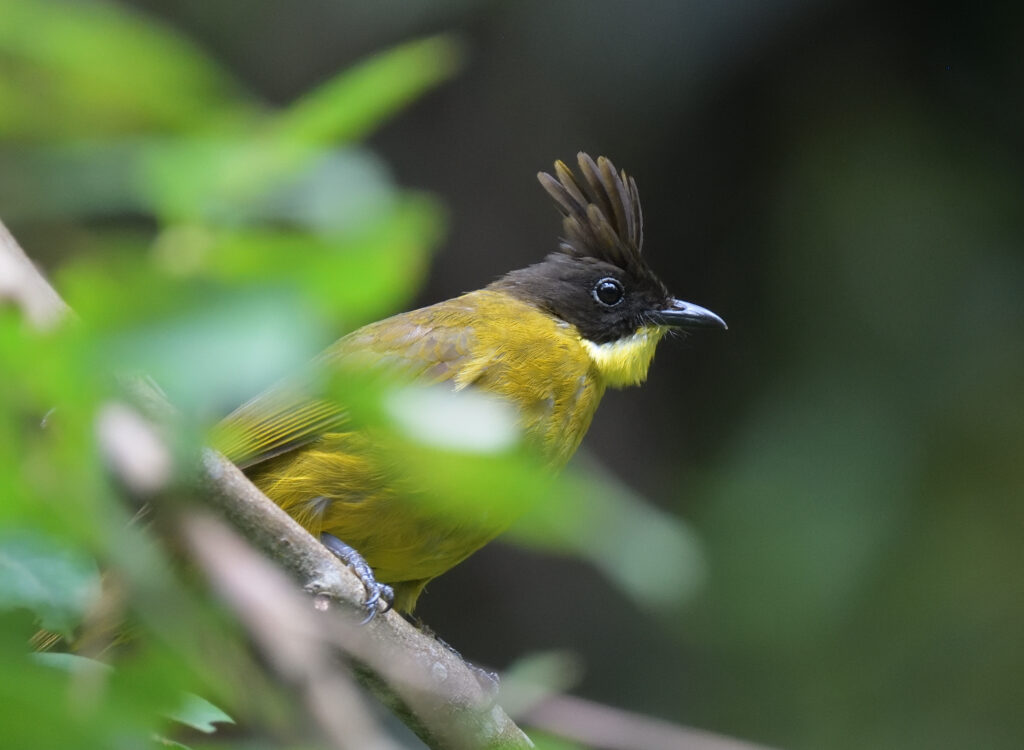
After lunch at a roadside café, with a colony of Glossy Swiftlets building straw-cupped nests under the eaves, we drive to Poring to see a superb specimen of Rafflesia keithii, freshly opened the night before, and lasting less than a week while taking up to five years to produce one of the world’s largest flowers with a diameter of 30 inches! From here, journey’s end is the Zen Garden in Kundasang on the breezy lower slopes of Mount Kinabalu.
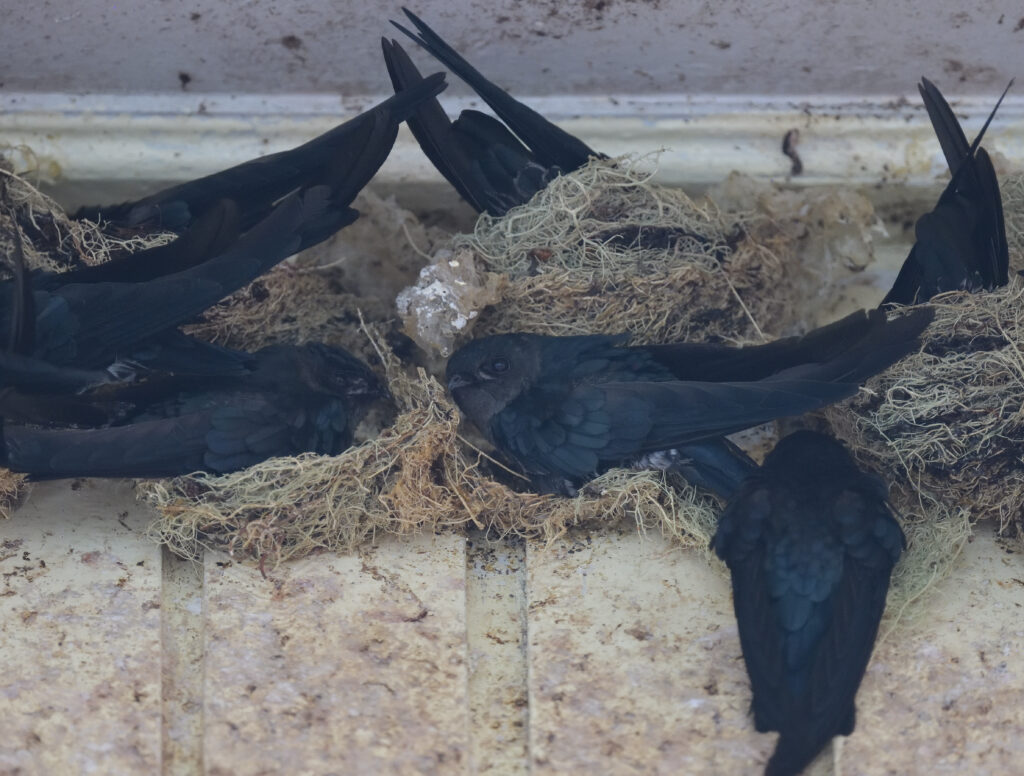

This morning, we set off at 5.45am on a short drive to the main entrance into Kinabalu State Park, where the weather is still breezy, with swirling mist and not conducive to birding though we still manage to see good birds between the showers like Hair-crested Drongo, Checker-throated Woodpecker, Sunda Cuckooshrike, Temminck’s Babbler and Yellow-breasted Warbler as well as plenty of Bornean Treepies and a Whiteheads’ Broadbill peering from its pendulous nest, plus four more new island endemics; Bornean Forktail, Flowerpecker, Whistler and Stubtail, which at just 3.93 inches, is the smallest bird in Borneo and showing really well on a nearby low bare twig. After brunch in the park restaurant, we return to the hotel for some free time back at base.
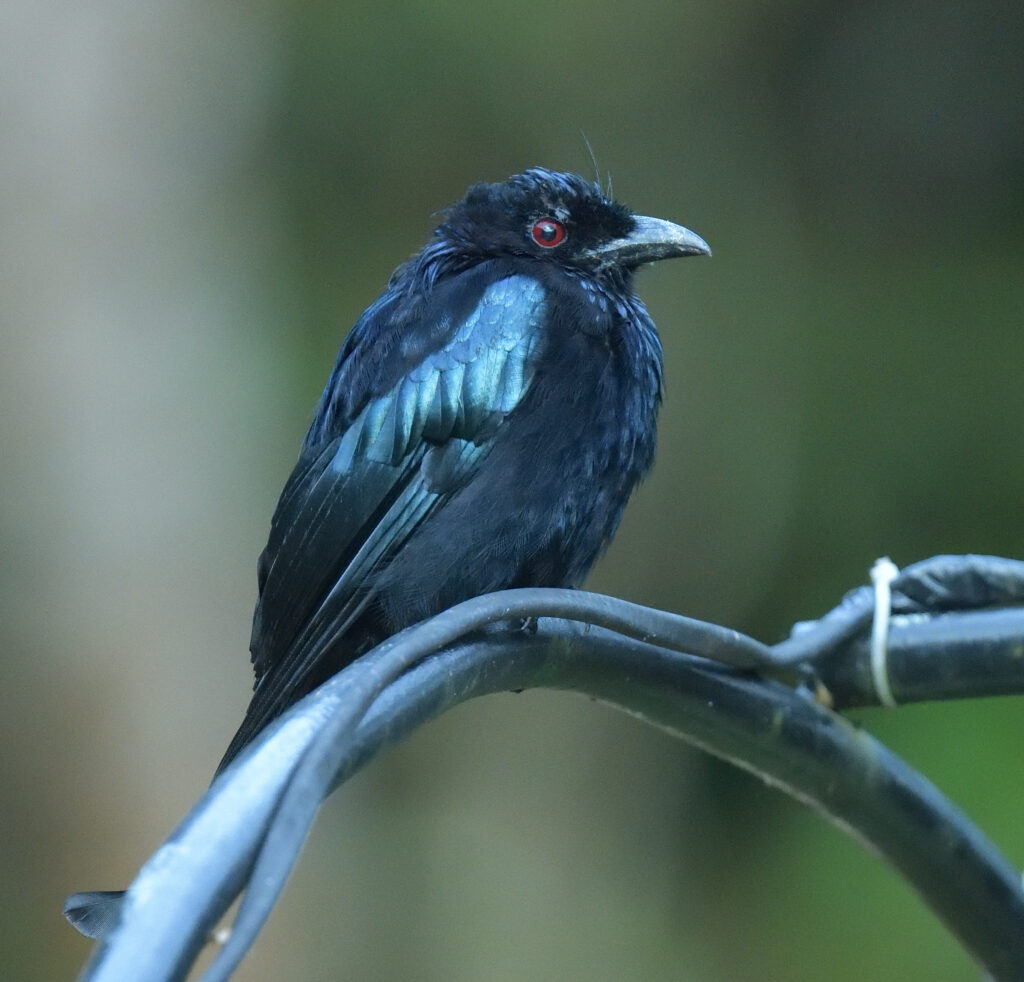

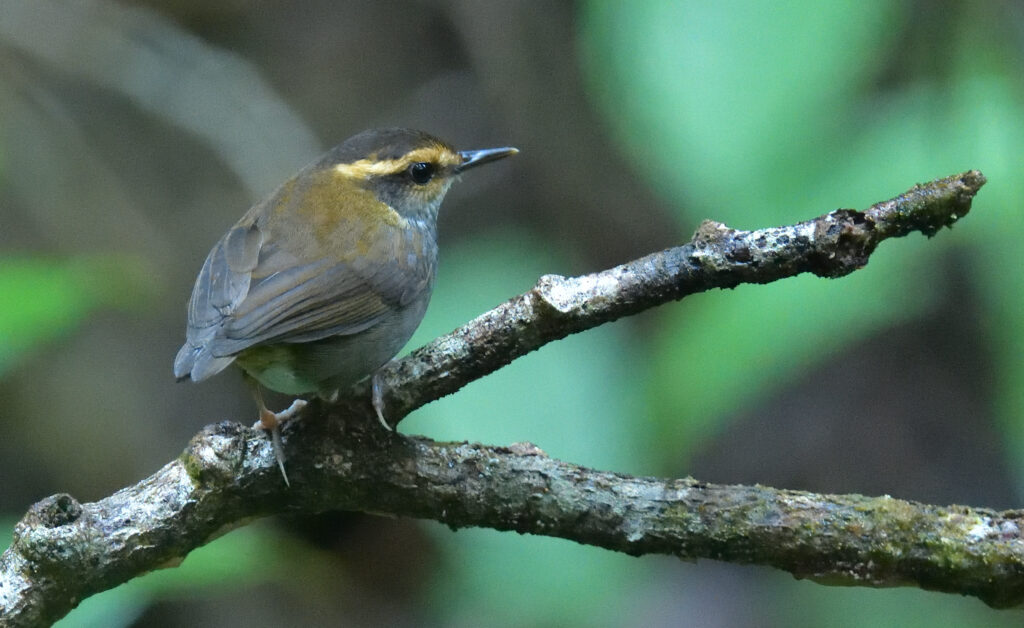
At 3.30pm, we return to Kinabalu State Park, where a walk along the narrow tar road which ends at an altitude of 6122 feet produces sightings of a group of Grey-throated Babblers and a pair of Ashy Drongos, as well as Bornean Mountain Ground Squirrels and an impressive Pale Giant Squirrel, looking like a North American Grey Squirrel but at least twice the size! Best of all, at the very end of the road we come across a rare Island Thrush (aka Mountain Blackbird) which Adrian hasn’t seen for ten years and yet it is so confiding, we get to within twenty feet of it! On the drive back down the road we also get good views of another Bornean Forktail and a Bornean Whistling Thrush, making a total of 20 island endemics amongst a tally of 45 different birds so far.
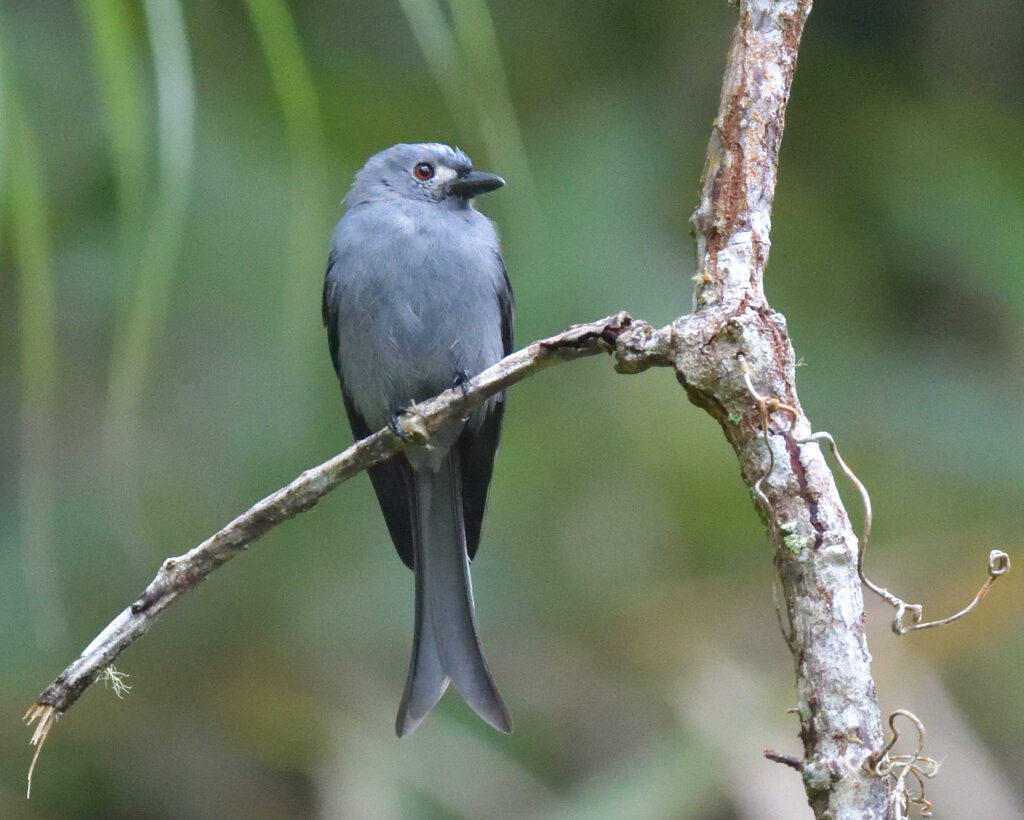
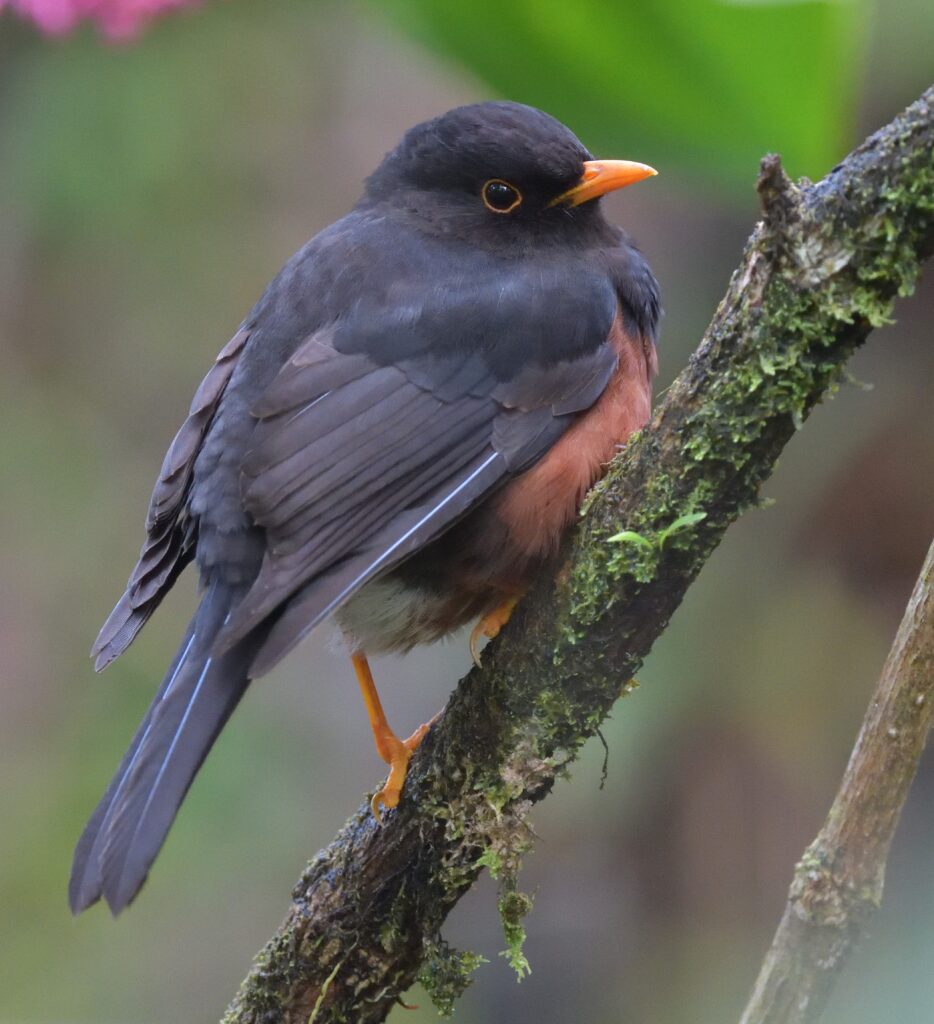
This morning, the weather is as tempestuous as ever, but at least it’s dry as we set off at 5.30am on the short drive back to Kinabalu State Park, hoping to start with the very scarce and shy Everett’s Trush which is an early bird that catches worms and is endemic to this highland region. Driving slowly up the narrow road inside the park at first light around 6am, Adrian suddenly shouts “Everett’s Thrush!”, and there it is, a dark blur through the windscreen at the edge of the road. We all pile out of the van and quietly walk up the road towards where the bird was, as it has now disappeared around a bend in the road. Once round the bend, we relocate the bird foraging amongst the leaf litter at the roadside, whereupon everyone gets a good look at this little-known rarity, including scope views! Wow, what a start to the day. From the same spot, we also get very close views of another Indigo Flycatcher. Mission accomplished, we now stroll back down the road, hoping to find another highly sought endemic, the spectacular Whithead’s Trogon. But, not far along the road we find a pair of Whitehead’s Broadbills, showing really well in the scope at close range while busy preening, and then Adrian suddenly hears the call of a Kinabalu Serpent Eagle and there it is, soaring overhead, just after 7am, which is a record according to Adrian! Minutes later, we find a pair of Whitehead’s Trogons really close to the road and enjoy amazing views of these striking birds while they pose in the scope. Meanwhile, the nearby Whitehead’s Broadbills call loudly as if to vie with the trogons for our attention! What a fantastic scenario.
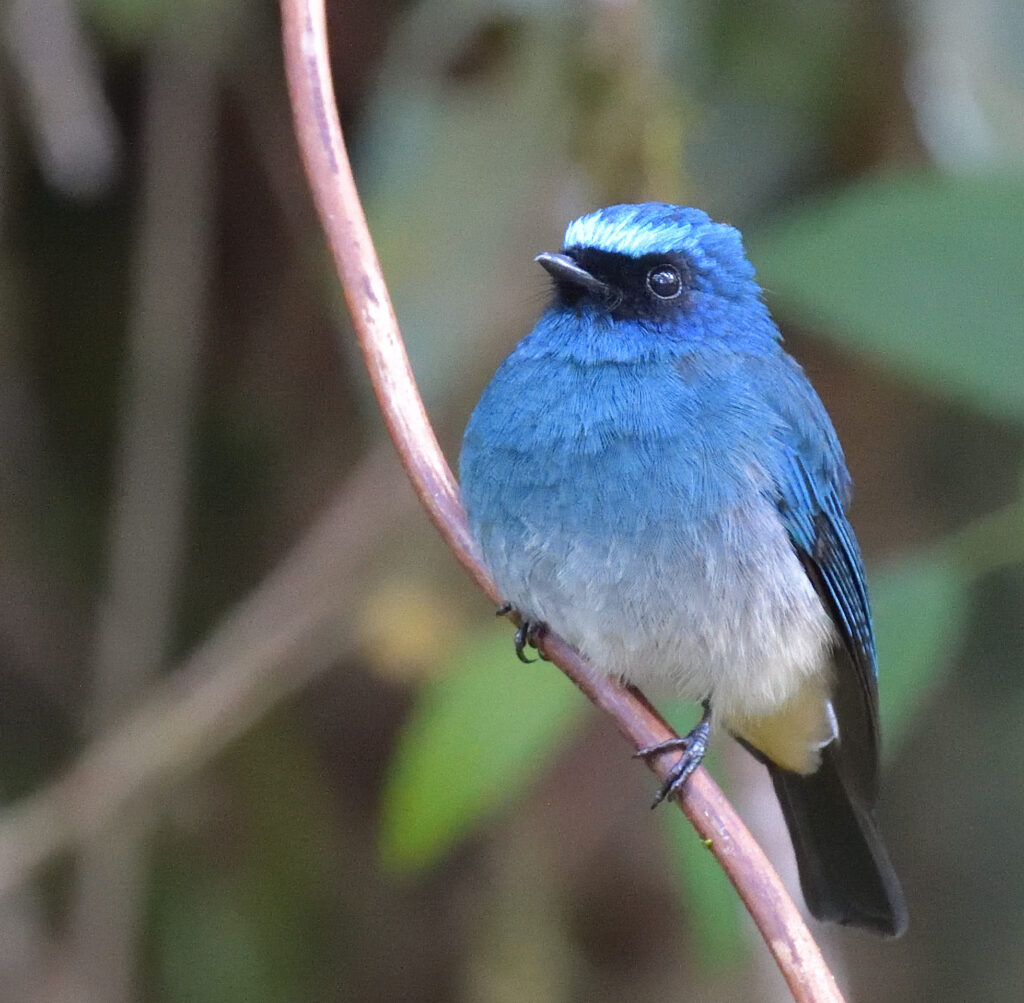
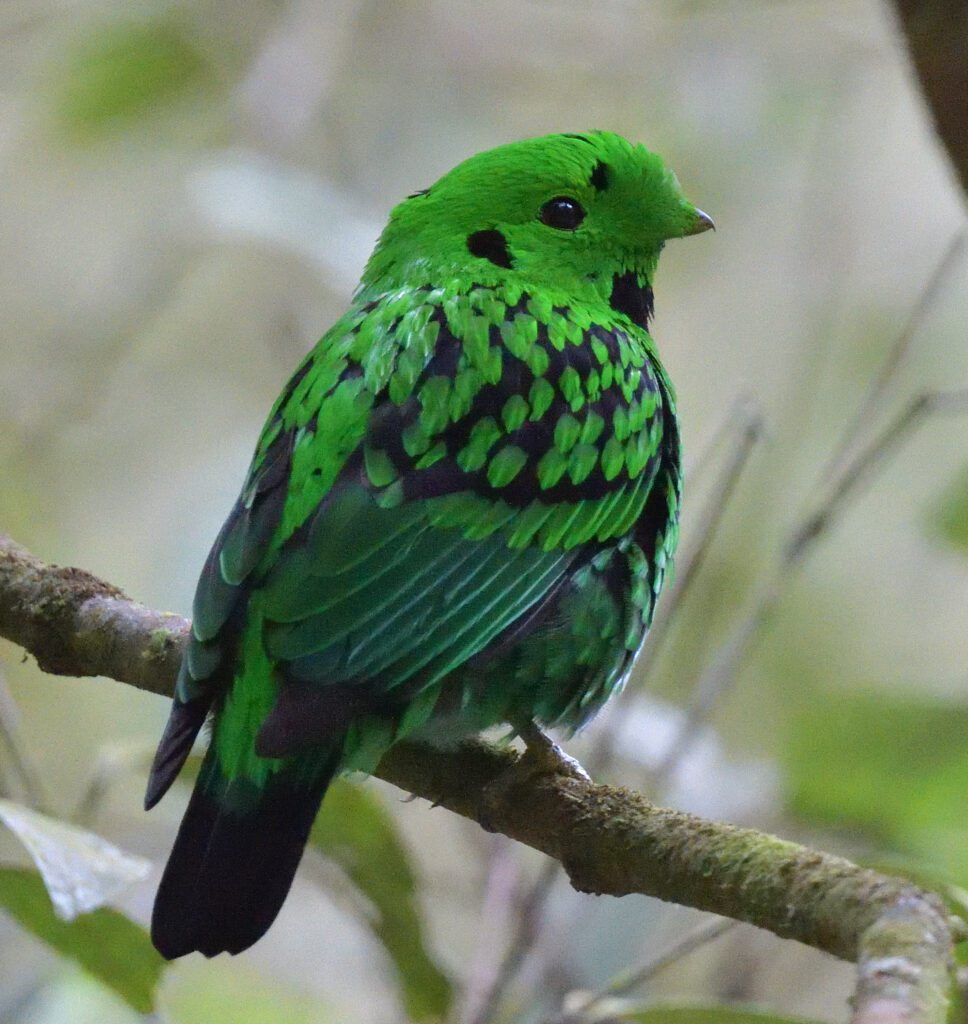
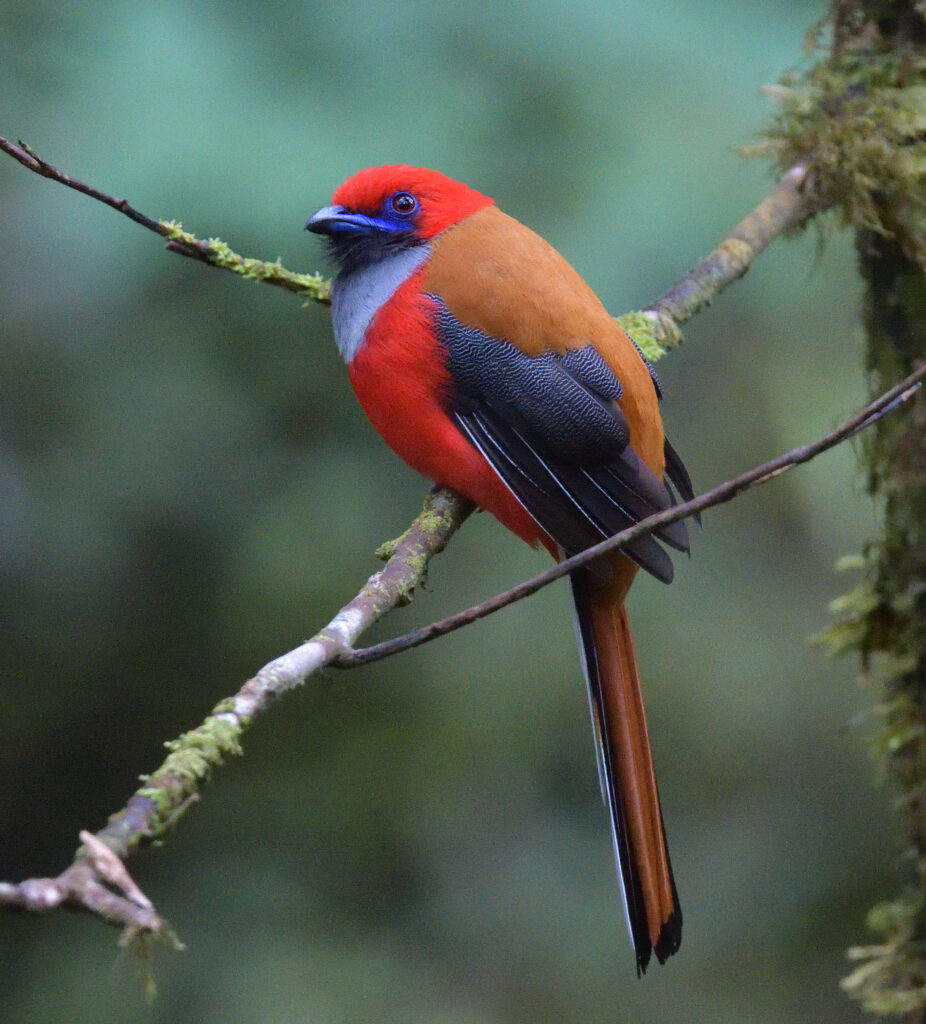
Moving on, we now follow the Silau-Silau Trail, hoping to see the elusive White-browed Shortwing. Not far along the trail alongside a small burbling stream, we find a pair of these shortwings. The male is all slate blue, apart from a white supercilium, while the female is chestnut brown with a blue-grey nape and mantle. From here, we return to the park HQ lower down the road where we find a pair of Bornean Flowerpeckers feeding a couple of fledglings, and the male is particularly obliging for a photo-shoot. A stunning large Golden Birdwing butterfly also shows well here.
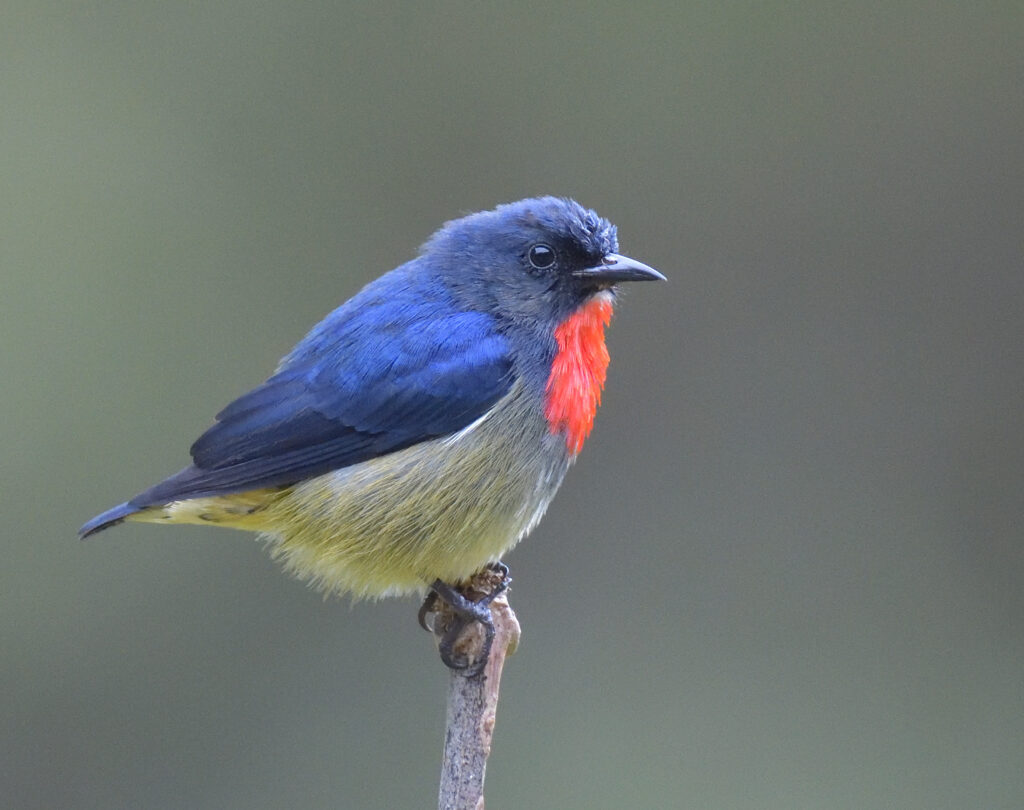
After brunch in the restaurant at 10am, we set off back up the road to follow the Mempening Trail, where our next target is the endemic Mountain Wren Babbler. Adrian comes up trumps again and eventually we all get good views of yet another rare and highly sought species, as this intricately patterned bird shows really well while singing away right next to the trail! That was a very productive morning.
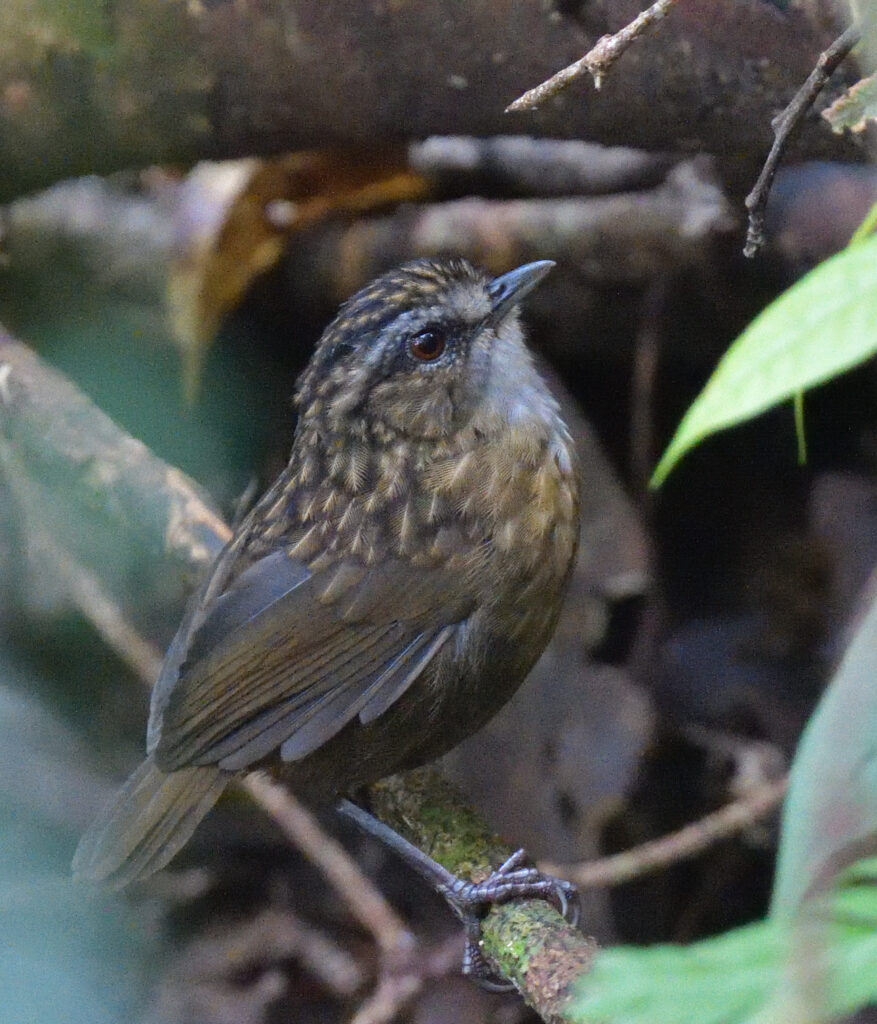
This afternoon, we begin at 3.30pm with very close views of Bornean Pygmy White-eyes from Gareth’s balcony! Returning to Kinabalu State Park, the wind is a challenge for finding birds, but in the more sheltered stretches of forest, we find new birds like Mountain Imperial Pigeon, Sunda Laughingthrush and a stunningly bright Bornean Green Magpie, making a tally of 26 island endemics amongst a total of 56 different birds so far. Strolling on, a sleek Malay Weasel crosses the road ahead of us, looking like a large bushy-tailed ginger ferret.
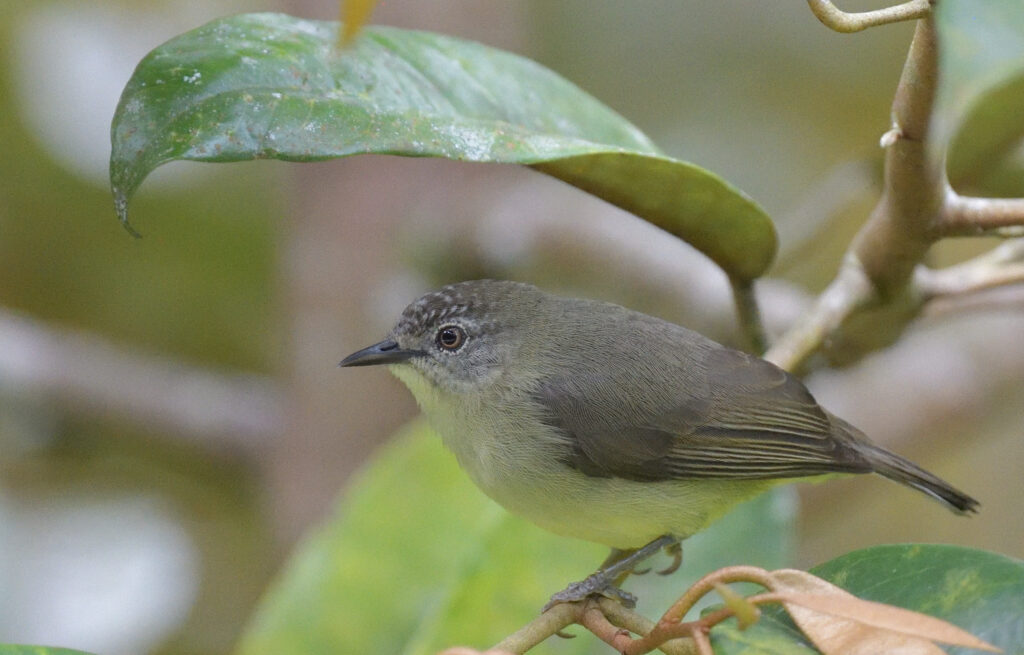
We have a final morning visit to Kinabulu State Park, where the typhoon has mixed up a cocktail of wind, rain and mist and the only thing missing is ice. Driving up the usual road, we find not one but two Everett’s Thrushes foraging at the roadside just a few yards ahead of us, giving even better views than the previous day, and at one stage there is also an Island Thrush feeding alongside them. Given the unsettled conditions there is little point continuing, so we return down the road to the area around the park HQ and stakeout the edge of the forest from the shelter of Rajah Lodge, where we enjoy hot drinks while watching birds like Mountain Imperial Pigeon, Bornean Treepie, Indigo Flycatcher, Bornean Whistling Thrush, Glossy Swiftlet, Temminck’s Sunbird, Yellow-breasted Warbler and the greyish kinabaluensis race of Mountain Leaf Warbler.
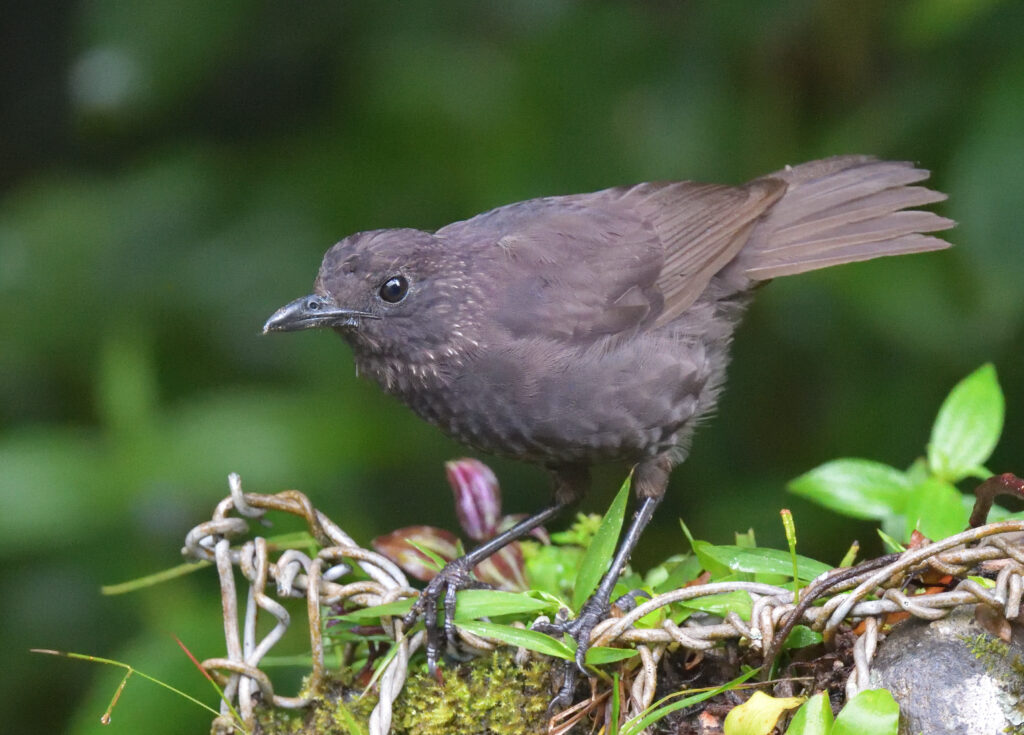
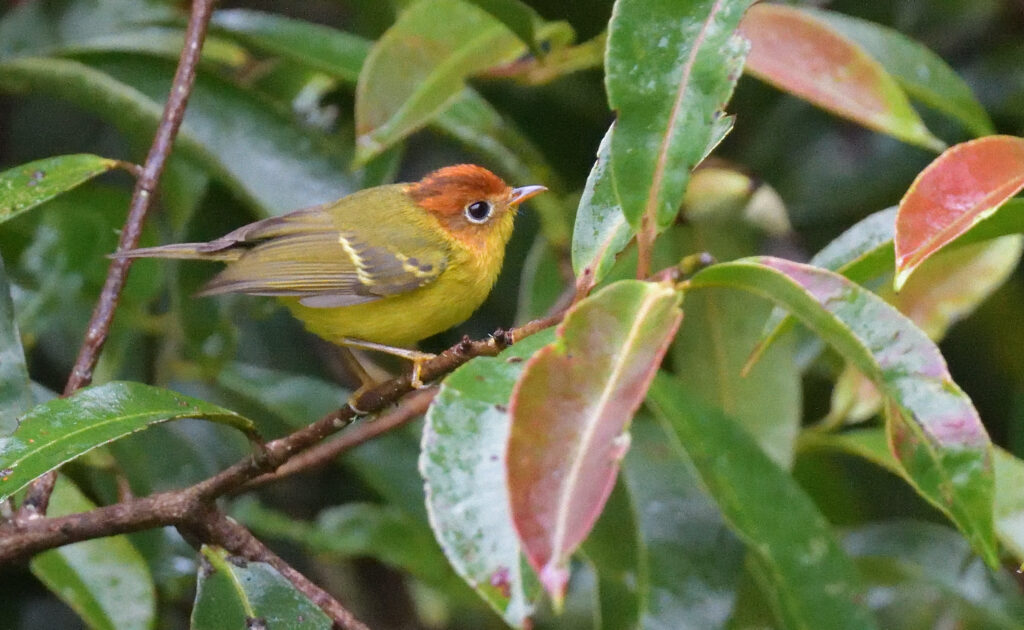
From here, it’s a long drive east to the Sepilok Rainforest Resort, where the ‘garden birds’ include Crested Serpent Eagle, Spotted Dove, Sunda Pygmy Woodpecker, Dollarbird, Javan Myna, Yellow-vented Bulbul and Eurasian Tree Sparrow! At dusk, we drive to the nearby Rainforest Discovery Centre, with our new guide Jay, for a walk in search of the ‘night shift’, which begins with the emergence of Red Giant Flying Squirrels from holes high up in the very tall tree trunks. Once out, they scurry up the bare tree trunks and then put on a breathtaking display as they glide effortlessly for hundreds of feet from one tree to another, thanks to flaps of skin between their outstretched limbs! Evolution really is amazing. Next, our guide shows us a scorpion, glowing green in the light of his ultra-violet torch and then a not so slow Philippine Slow Loris, which is an arboreal primate about the size of a small cat. The next sighting is a far smaller primate, about the size of a large potato, known as a Western Tarsier, with an alien-like stare from bulging eyes, sitting motionless in a bush at eye level, with an even tinier baby clinging to its chest. How on earth do the guides find these small mammals in such a dense dark jungle? Moving on, our next find is a tarantula, about the size of a man’s hand, sitting in a hole in a bank of soil beside the path, and then our guide points out a Rufous-backed Kingfisher roosting on a bare branch. Almost back at the car park, we find a sleek green Bornean Keeled Pit Viper, about 18 inches long, coiled just a few inches above the ground and apparently quite venomous! What an intriguing outing that was.
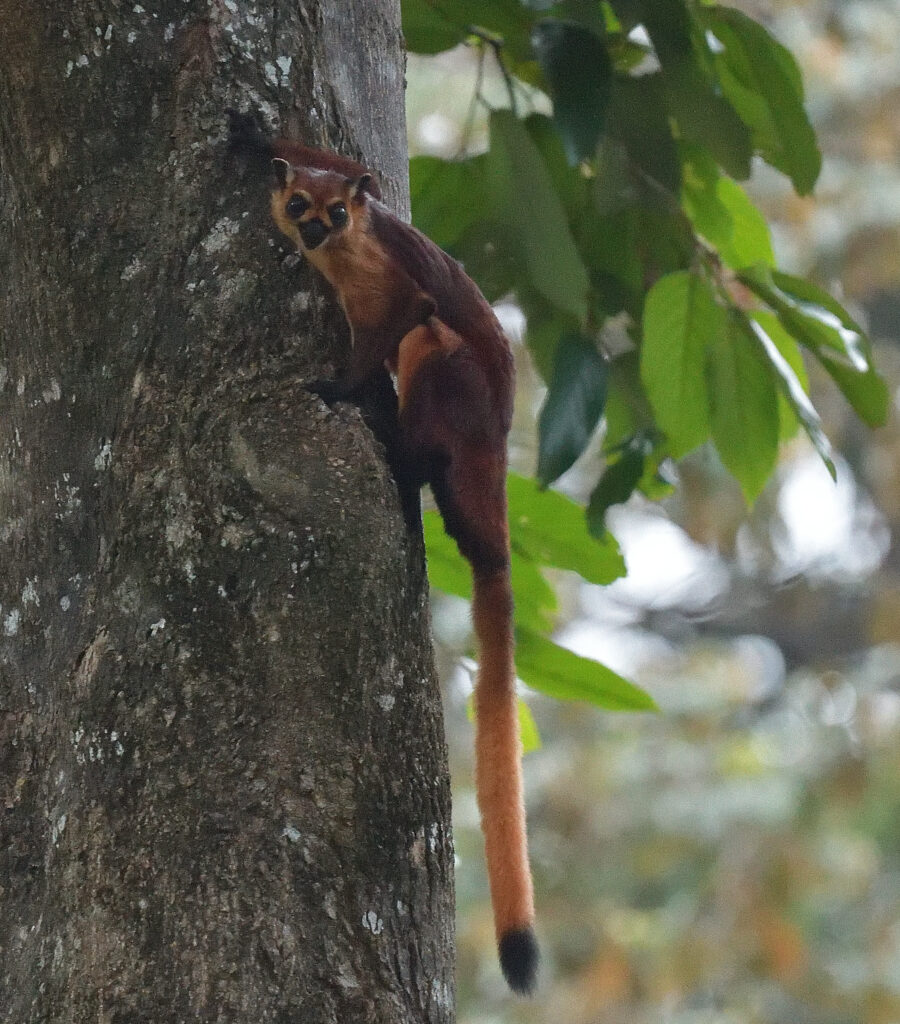
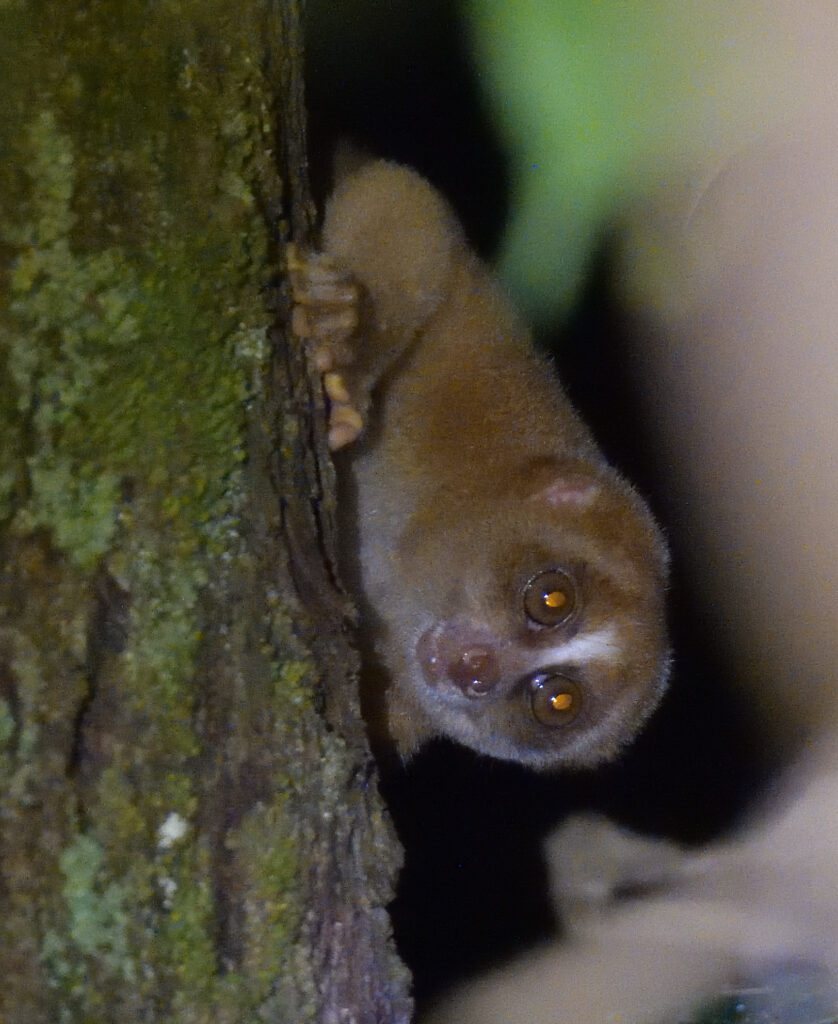
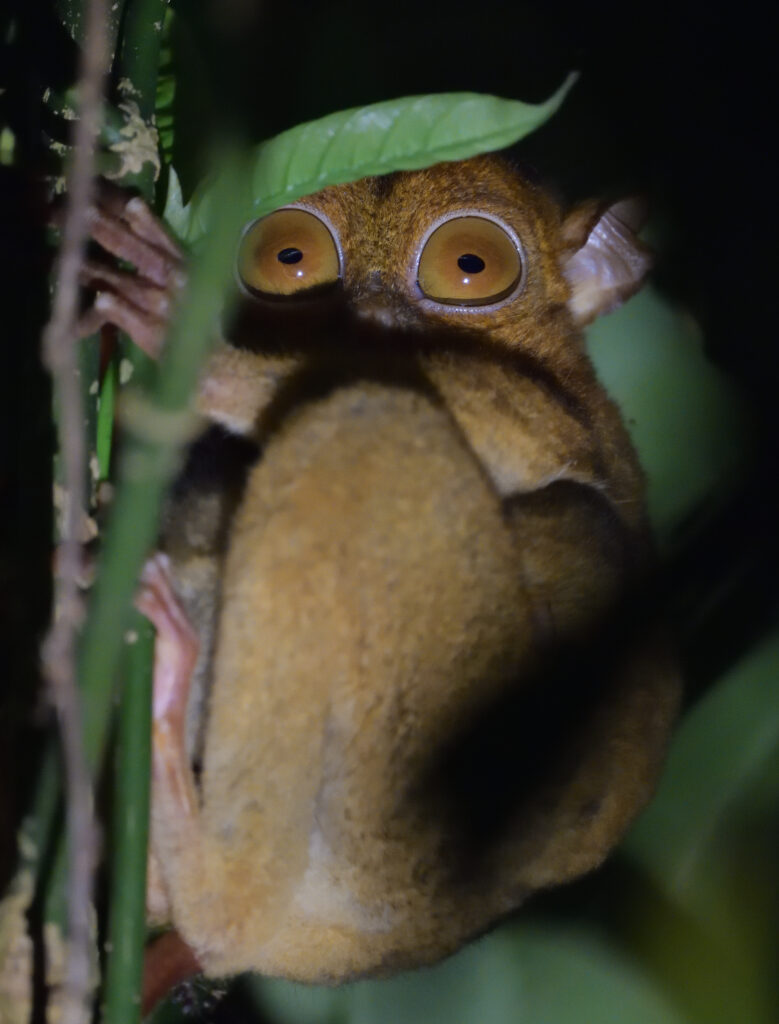
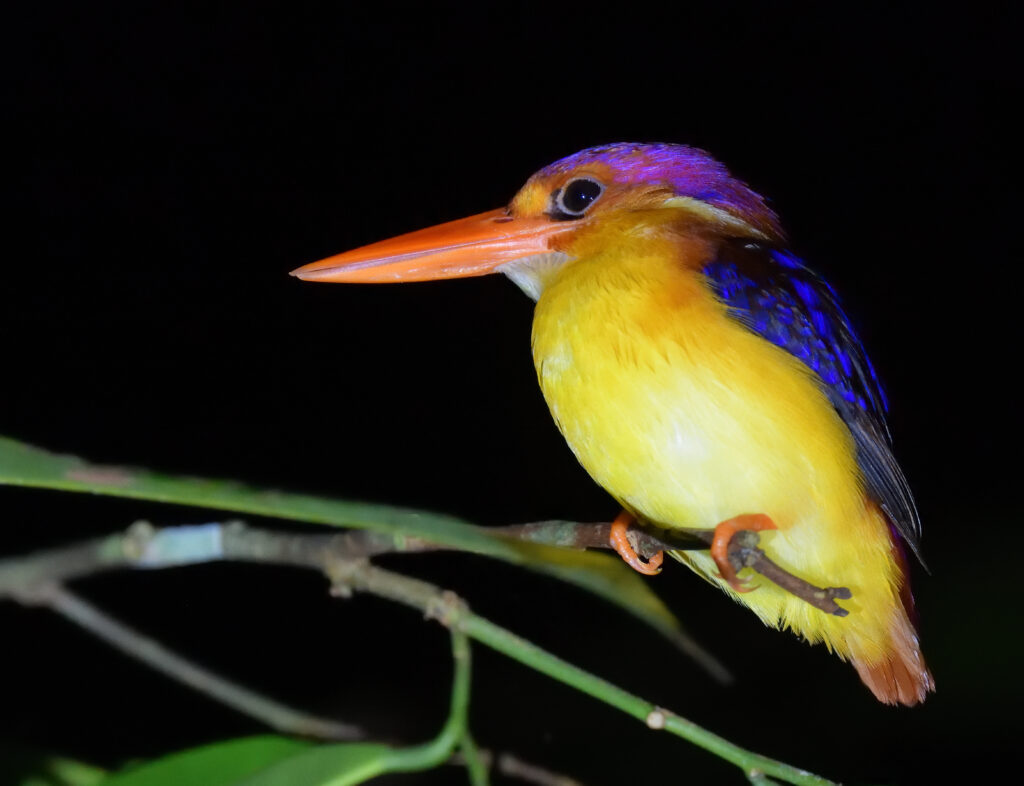
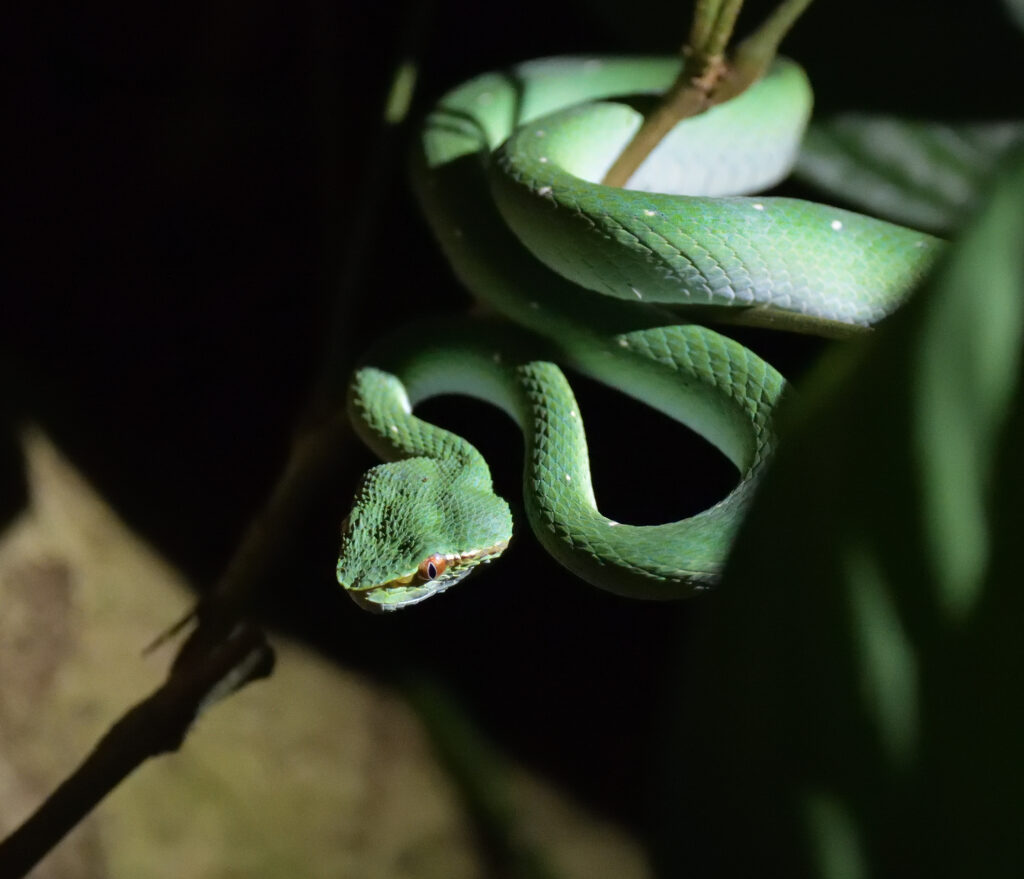
This morning, we set off at 6am on the very short drive back to the Rainforest Discovery Centre, which is alive with a chorus of noisy cicadas. Here, we soon spot noisy Asian Black Hornbills and then a few minutes later, a pair of even more impressive Rhinoceros Hornbills flies past, showing their long decurved ivory bills bearing a large crescent-shaped red casque. Wow! Then we spot a Red-eyed Bulbul perched on the handrail of the ‘skywalk’, the longest canopy walkway in Sabah province, which is 2034 feet long and 82 feet above the ground. From here, we also enjoy great views of the stunning and well-named Red-bearded Bee-eater with an unfeasibly deep growling call! Further along the walkway our guide hears the call of another stunning tropical bird and then out pops a posing beady-eyed Black-and-yellow Broadbill, which is a star among stars! Climbing 147 steps, we reach the top of a lookout tower, 90 feet above the forest floor, with eye level views of an untidy nest of sticks containing the downy white chick of a Wallace’s Hawk Eagle.
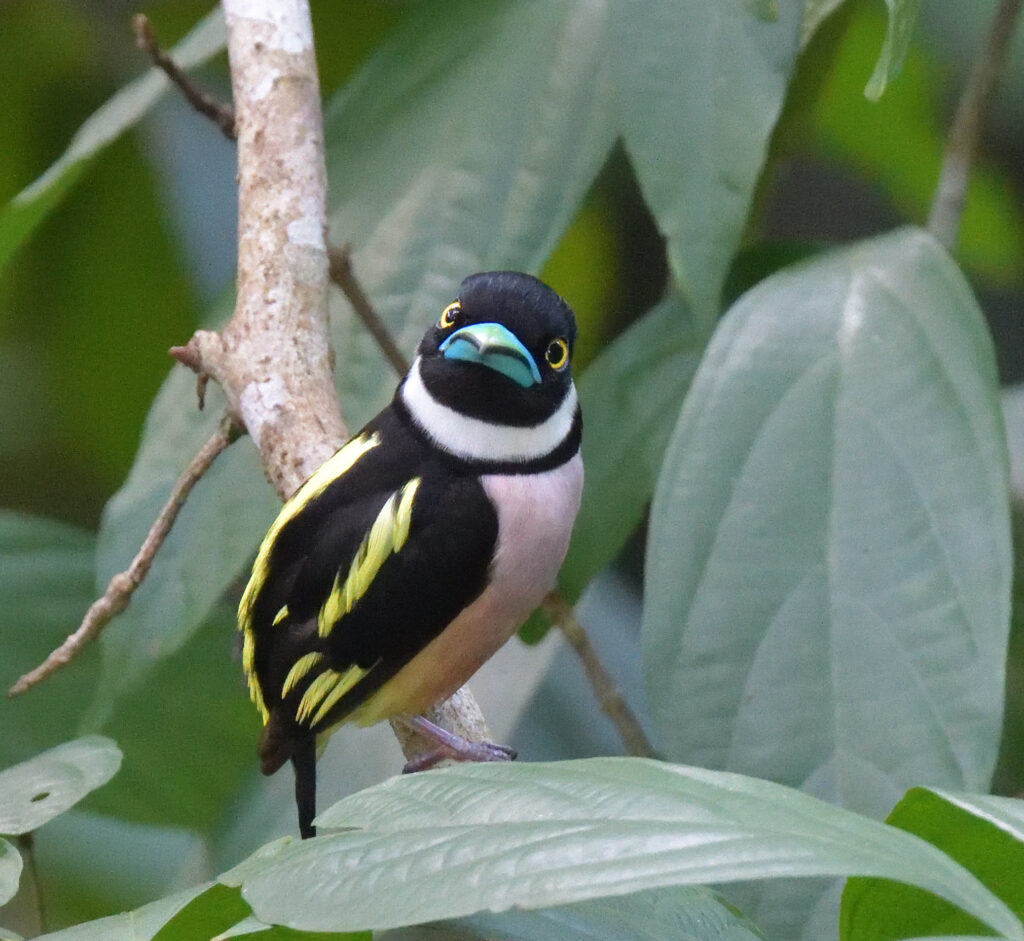
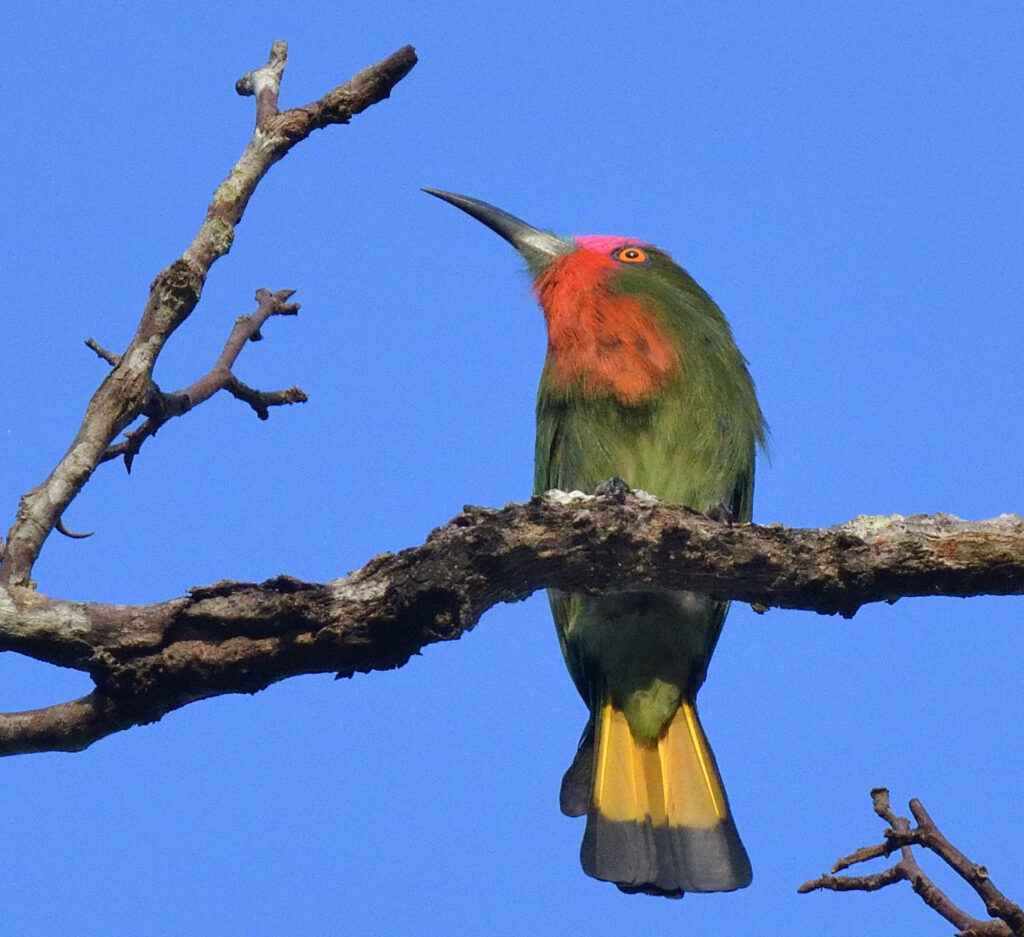
Back on the ground, we find Pied Fantail, Ashy Tailorbird and a Chestnut-winged Babbler pumping its chest as it calls. Along the next trail, we find a tiny Pygmy Squirrel, moving with quick jerky movements up and down tree branches, while a Greater Racquet-tailed Drongo poses motionless on a nearby branch. Along the same trail, we also find Buff-rumped Woodpecker, a humungous Giant Forest Ant, more than an inch long, and a large black Prevost’s Squirrel, making seven different species of squirrel so far.
After breakfast back at the hotel, we return to the jungle and find the endemic Dusky Munia in a clearing at the edge of the forest, and then a very obliging, and also endemic Bornean Necklaced Partridge, happy to pose for photos from any angle! Further sightings include Grey-headed Babbler, Purple-naped Sunbird, Rufous-tailed Tailorbird and a striking Orange-backed Woodpecker. Emerging from the forest we add Grey-rumped Treeswift and Blue-throated Bee-eater to the ever-growing trip list.

After lunch, we begin with a visit to the Bornean Sun Bear Conservation Centre, where we enjoy great views of Little Spiderhunter and Yellow-vented Flowerpecker on the way in. The centre does a great job looking after ‘rescued’ bears until they can hopefully be released back into the wild, but it is so sad to think that these lovely little bears can be so horribly persecuted simply to supply the ridiculous trade in Chinese medicines or even to make trinkets like bear claw necklaces! From here, it is a very short walk to the Sepilok Orangutan Rehabilitation Centre, which does an equally important job, teaching rescued and orphaned Orangutans how to look after themselves back in the wild. The centre is not enclosed and so the Orangutans are free to come and go as they please, with wild visitors often dropping in for a free meal. The boardwalk into the forest here leads to a wooden feeding platform with horizontal ropes radiating from it where we find a couple of young Orangutans hanging around on the ropes with such dexterity that they can even hang solely by their feet! At 3pm each afternoon, a pile of fruit and vegetables is tipped onto the platform, and today, the two youngsters are joined by a mother and baby and then an awesome big male appears from high in the forest and swings effortlessly along one of the ropes onto the platform to join the feast which is silent and very orderly with no squabbling. The male is far larger than the nursing mother, with long hairy arms and large flanges of skin encircling his face. What a magnificent creature.


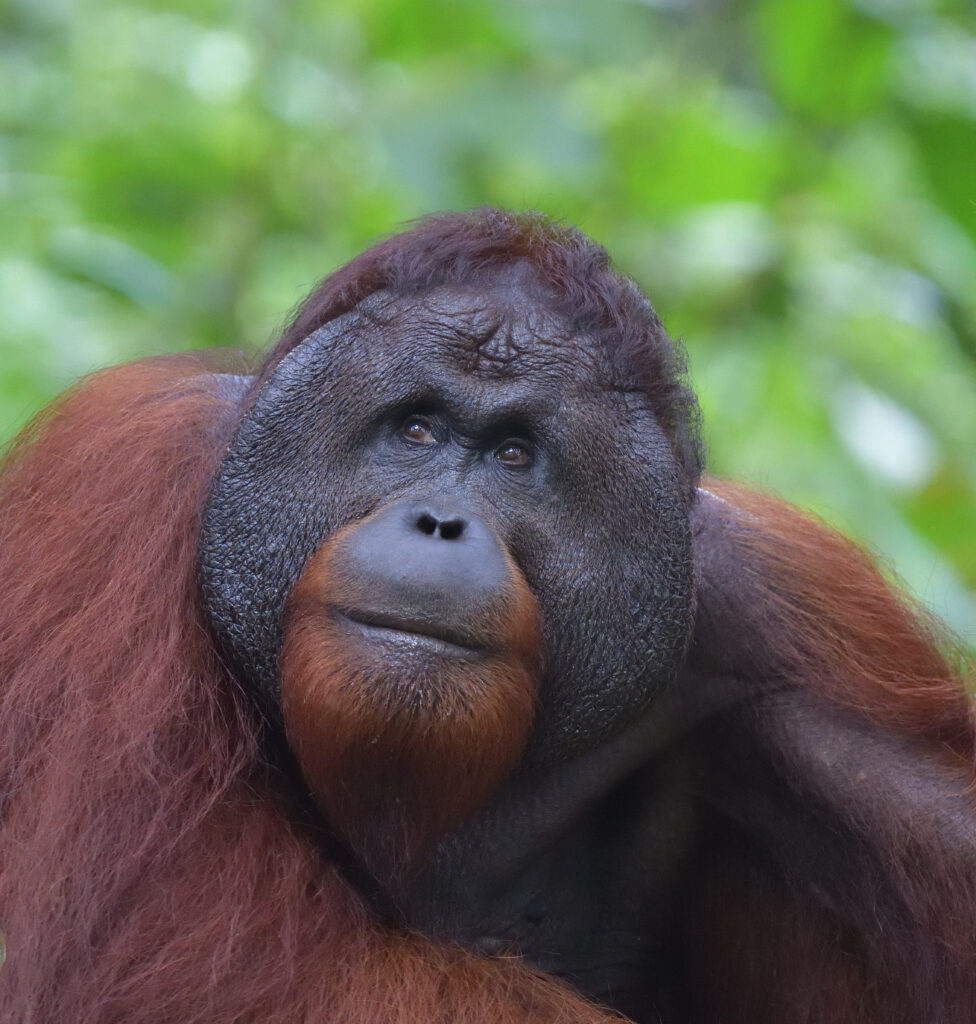
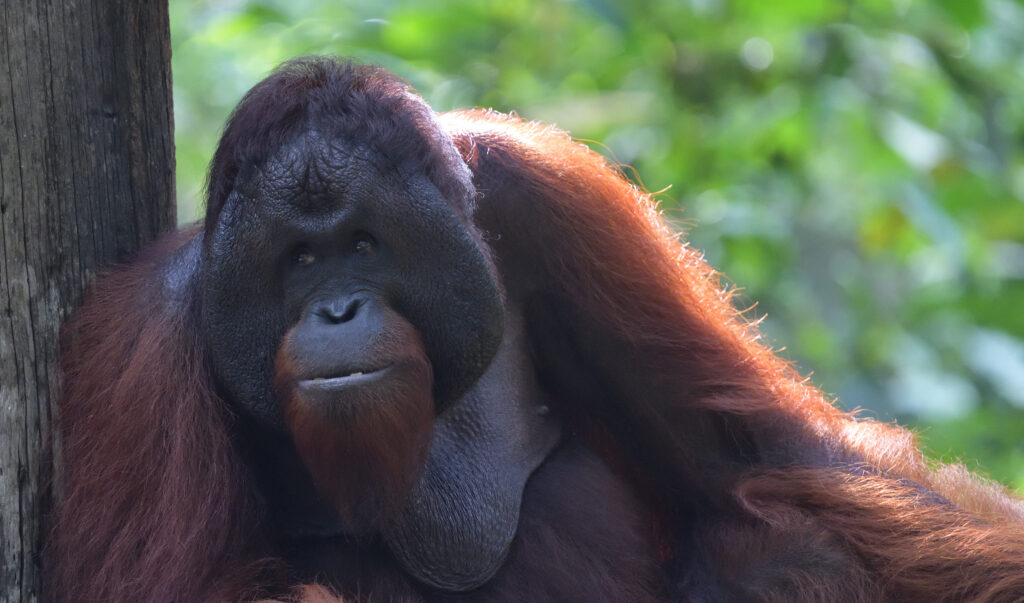
Returning along the boardwalk, we meet a group of menacing looking Pig-tailed Macaques and then find several Brown-throated Sunbirds in the trees outside the centre.

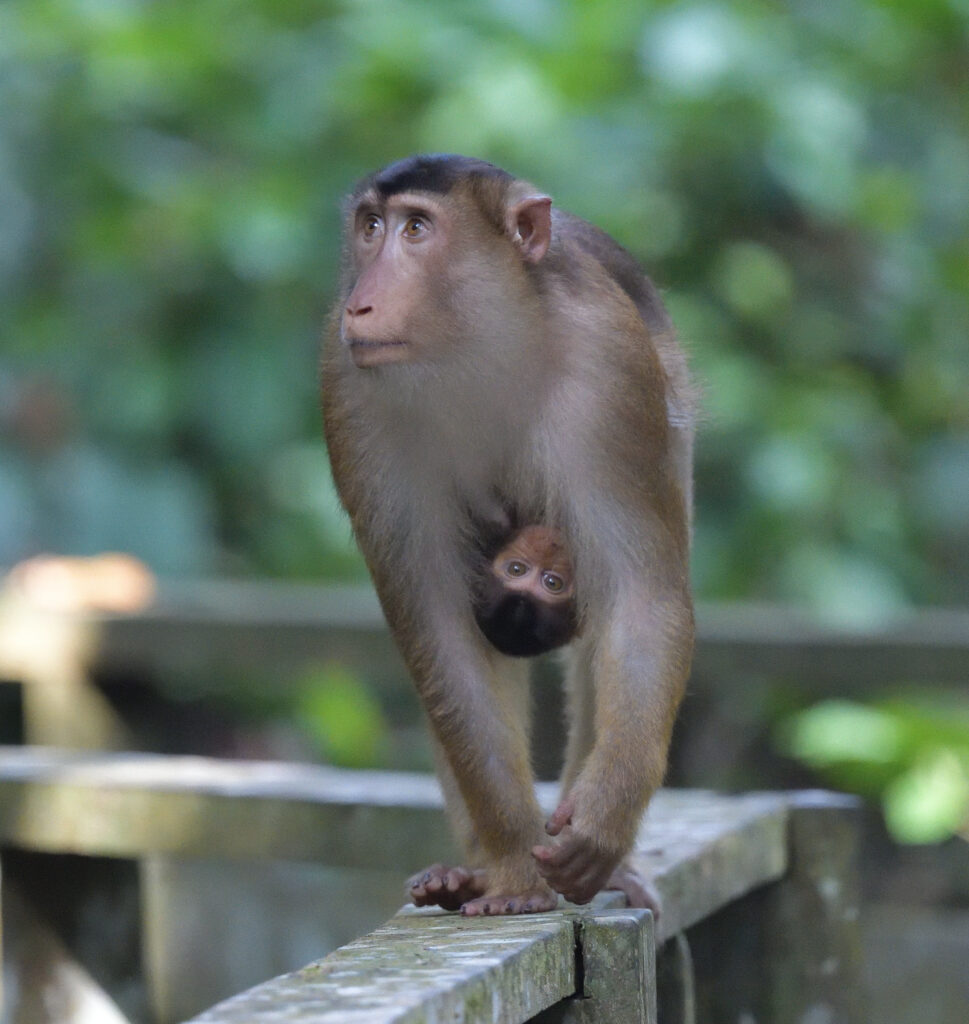
This morning at 6am, we have one last visit to the Rainforest Discovery Centre, where the little green viper is still coiled on a twig just inside the entrance. Other early sightings here include Asian Black Hornbills, Common Hill Mynas, a Brown Barbet, a pair of Diard’s Trogons, more Pig-tailed Macaques and a Bornean Gibbon, which moves through the trees with amazing agility. Next, we find a group of Bornean Black Magpies and then a very smart male Red-naped Trogon. A few minutes later a Black-capped Babbler dashes across the track while a Rufous-winged Philentoma (insect lover) sallies for flying insects like a flycatcher. Moving on, we bump into our ‘old friend’, the Bornean Necklaced Partridge, which is so tame it comes and pecks our ankles and outstretched hands and then follows us along the trail for some distance, still pecking as we go! Further sightings include a Red Langur, a female Violet Cuckoo, a Grey-bellied Bulbul, another female Lesser Green Leafbird and another sparkling male Brown-throated Sunbird.
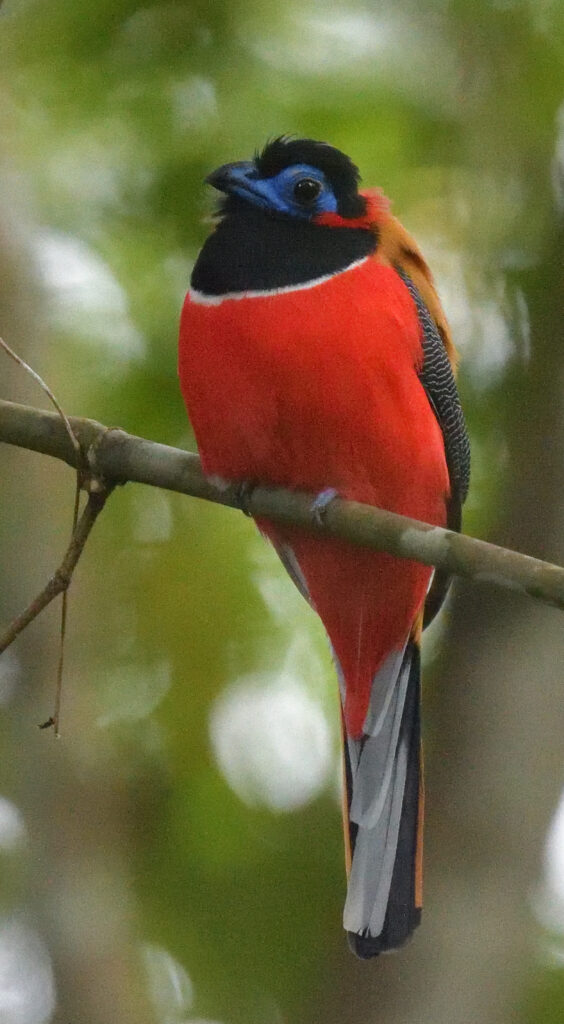
After a late breakfast back at the hotel, we drive into Sandakan town for an early lunch before departing on a 57 mile high speed boat trip along the Kinabatangan River, passing numerous Great and Little Egrets and two large saltwater Crocodiles along the way. After two and a half hours, our destination for the next three nights is the award winning riverside Sukau Lodge where we arrive in time for a late afternoon cruise in a much smaller and more sedate motorised boat. Heading upstream from the lodge, we soon find an incredibly deep blue Blue-eared Kingfisher and then three rare Storm’s Storks fly overhead, across the river and then back again! Further upstream, we spot several Oriental Darters and a large Lesser Adjutant Stork sitting in the top of a tree beside the river, while Brahminy Kites and a juvenile White-bellied Sea Eagle fly by. Next, we enter a narrow channel which opens out into a large oxbow lake, where several Oriental Pied Hornbills and Slender-billed Crows fly across the lake, while a Grey-headed Fish Eagle sits watching the action. We also spot a Stork-billed Kingfisher, the largest in Borneo, and a golden morph Silvered Leaf Monkey sitting alone in a tree, but the star attraction here is a group of bizarre looking Proboscis Monkeys, which are only found in Borneo, busy munching away on leaves in the trees alongside the lake, making a total of eight primates seen on this trip so far.
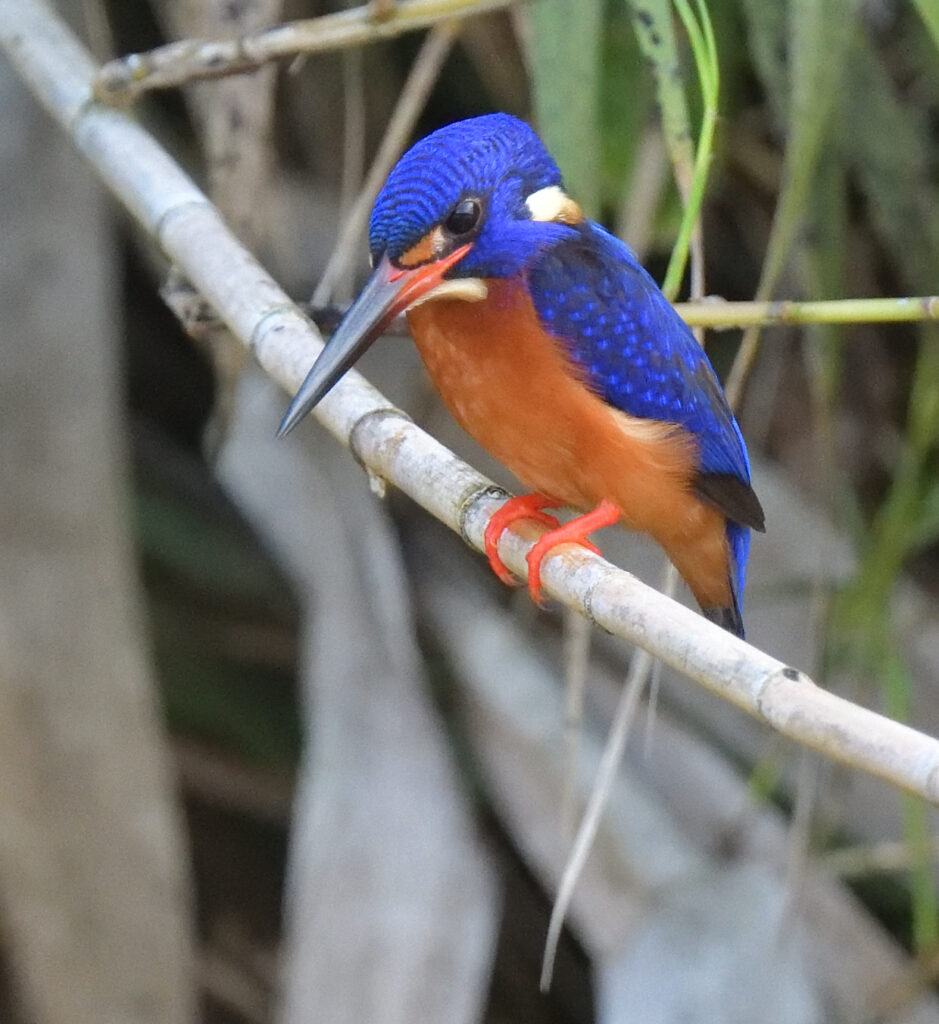
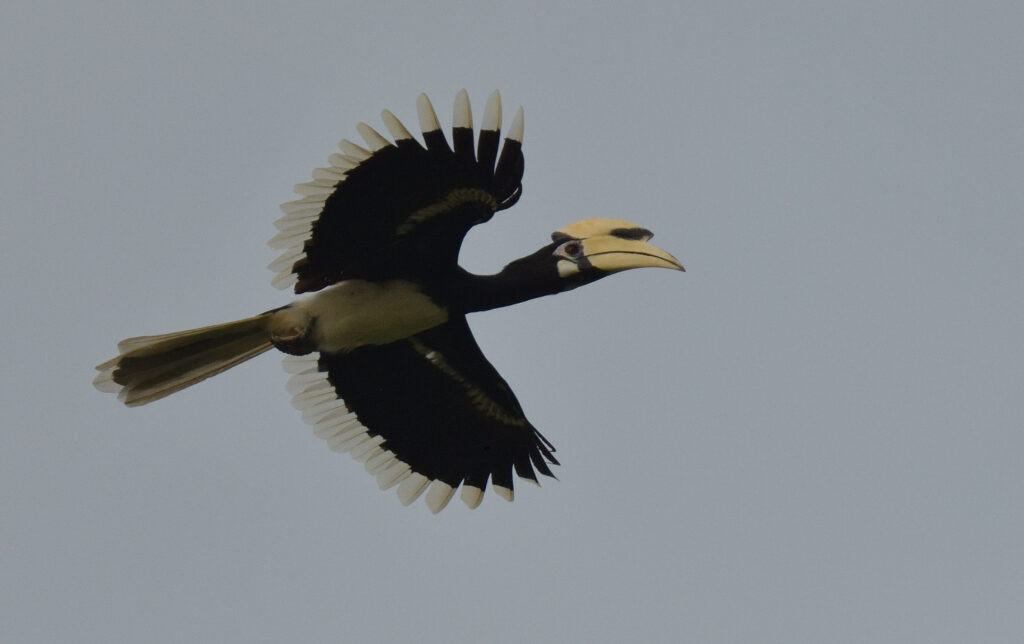
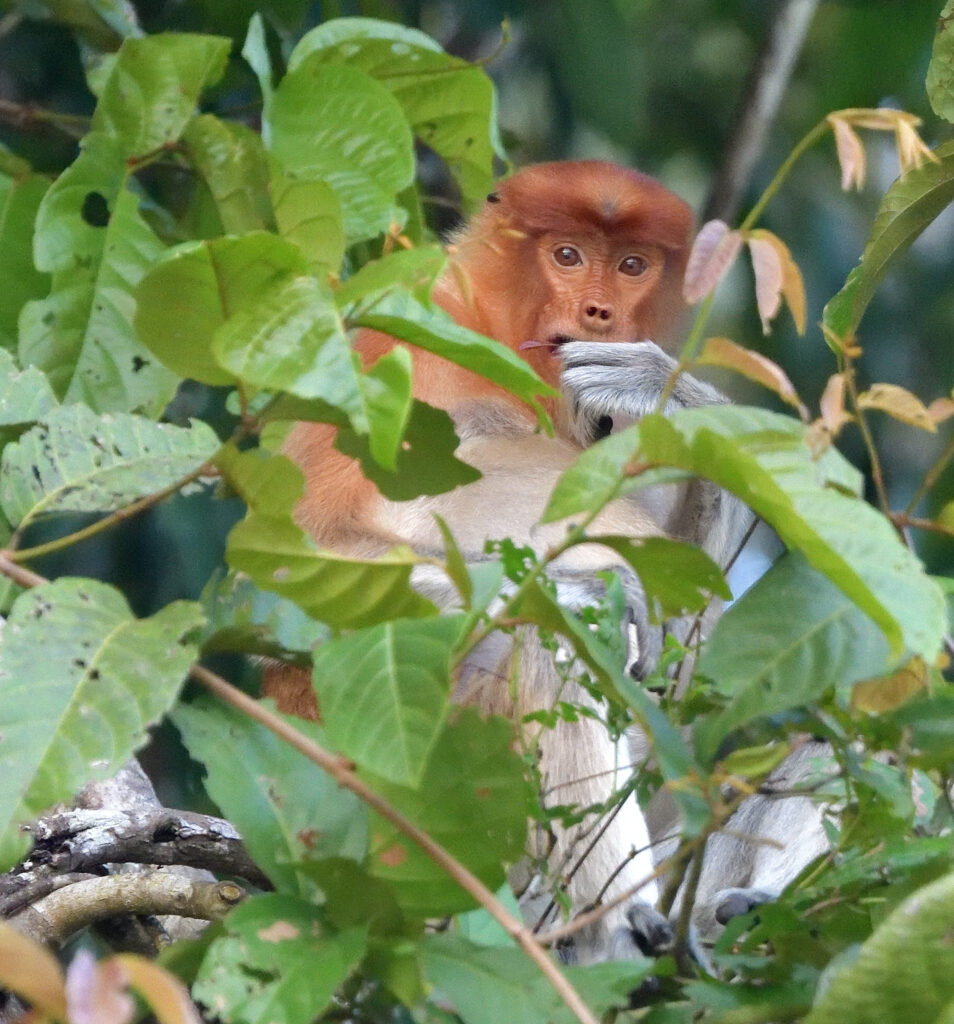
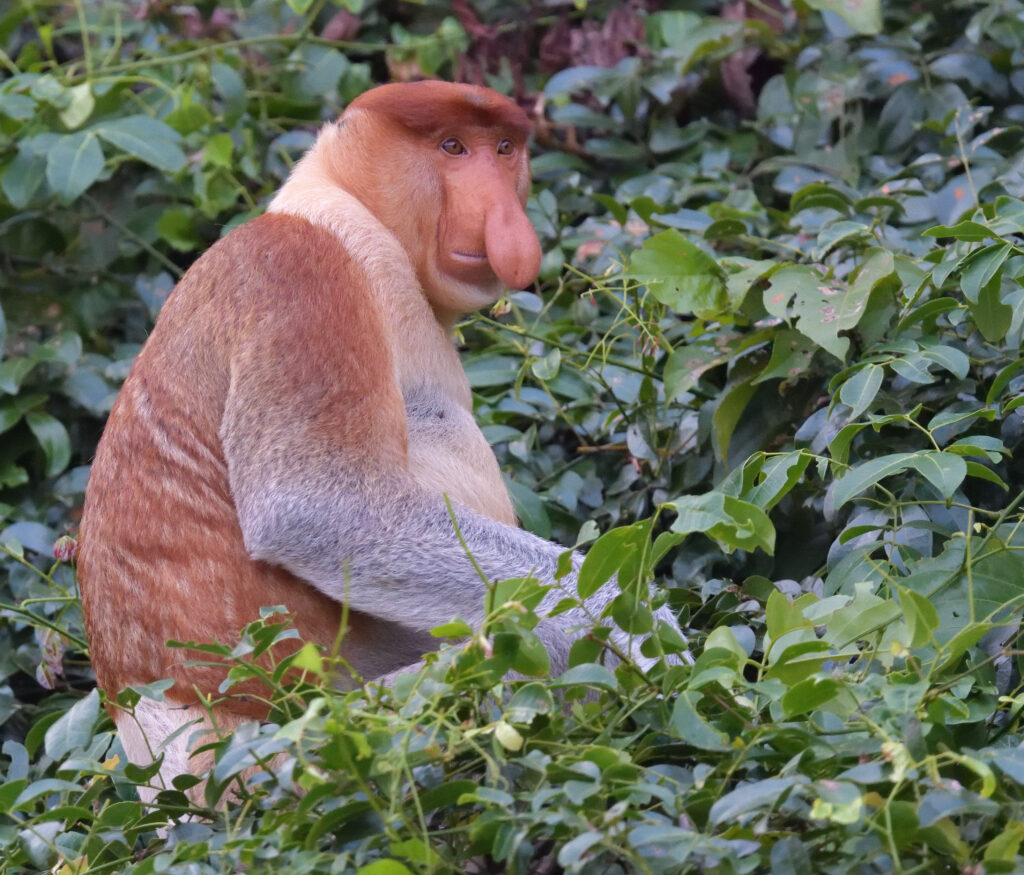
On the return to the lodge for dinner the sky reddens dramatically as the sun quickly sinks below the horizon.
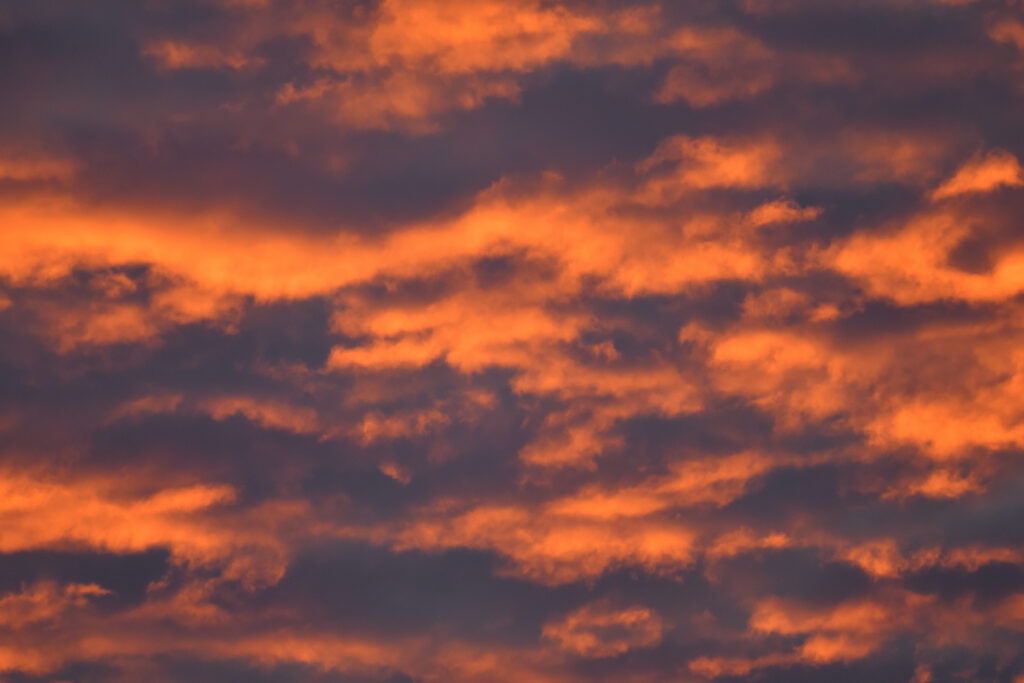
This morning, we begin at 6am with a pre-breakfast boat ride upstream and find Straw-headed Bulbuls on the opposite side of the river from the lodge, along with noisy Long-tailed Macaques, a large Wreathed Hornbill flying across the river and another Stork-billed Kingfisher. Next, we enter another narrow side channel and find a few Proboscis Monkeys, as well as Buff-necked Woodpecker and Malaysian Blue Flycatcher which are both new for the trip. Next, we spot Grey-headed Fish Eagle and more new birds like Green Iora, a stunning male Scarlet-backed Flowerpecker, a pair of Black-and-red Broadbills and a male Crested Fireback. On the way back to the lodge for breakfast we also find a twelve foot long Saltwater Crocodile.
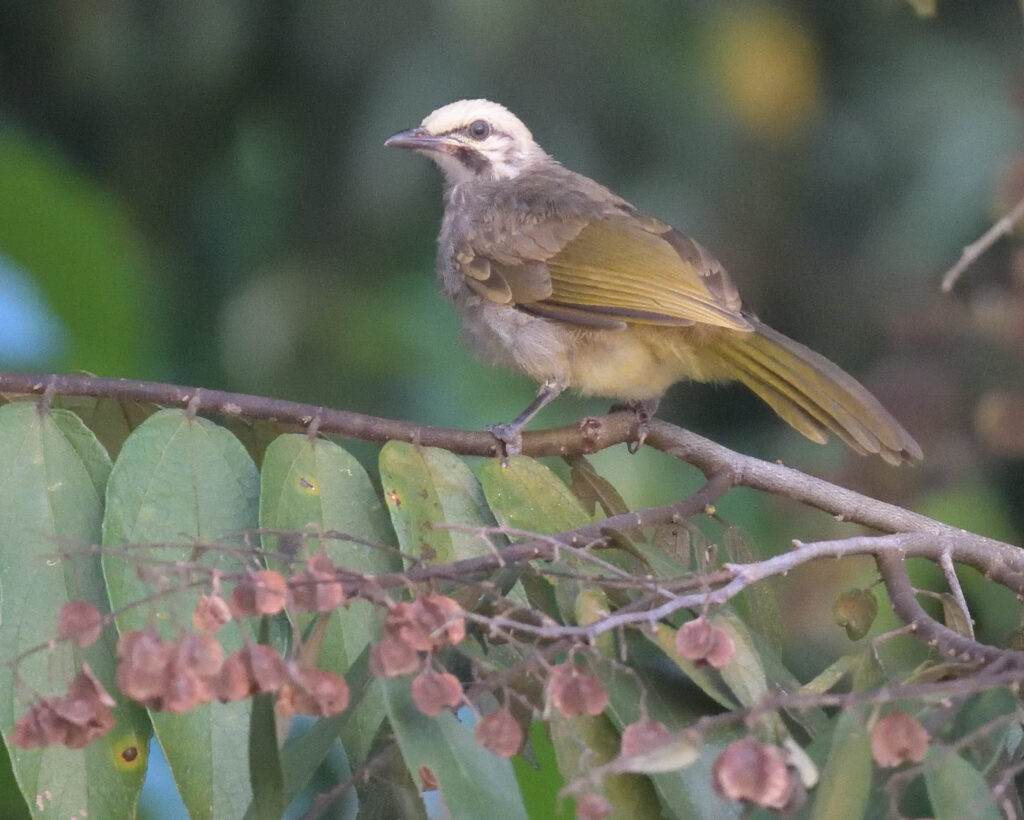
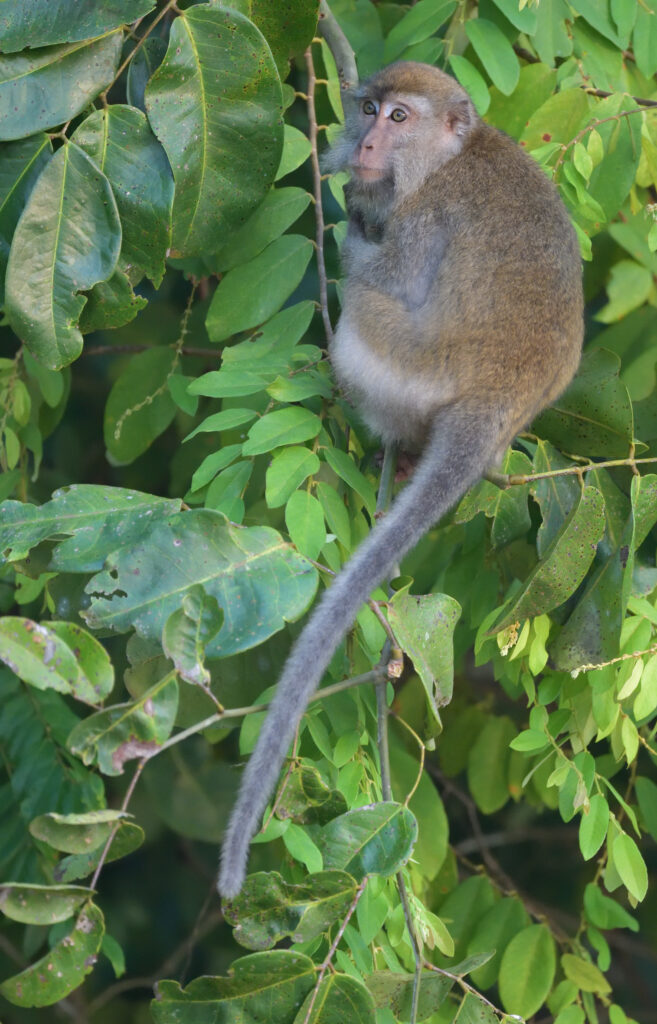
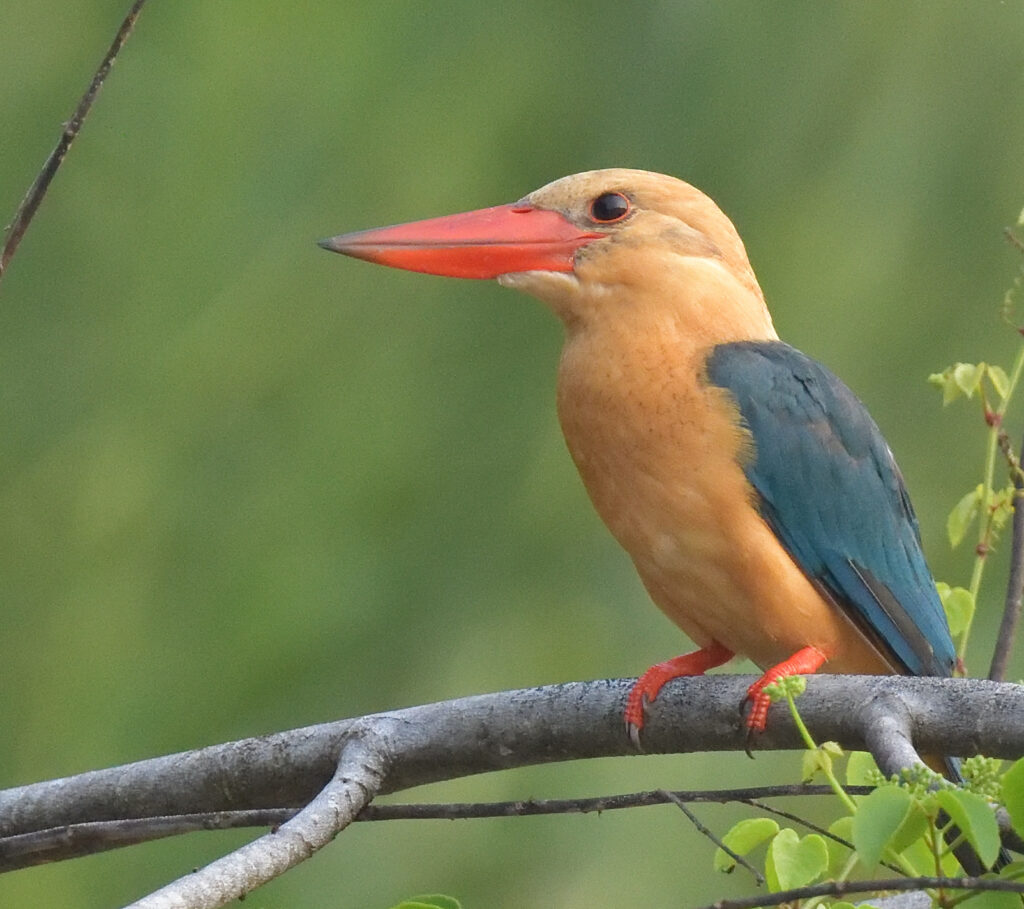

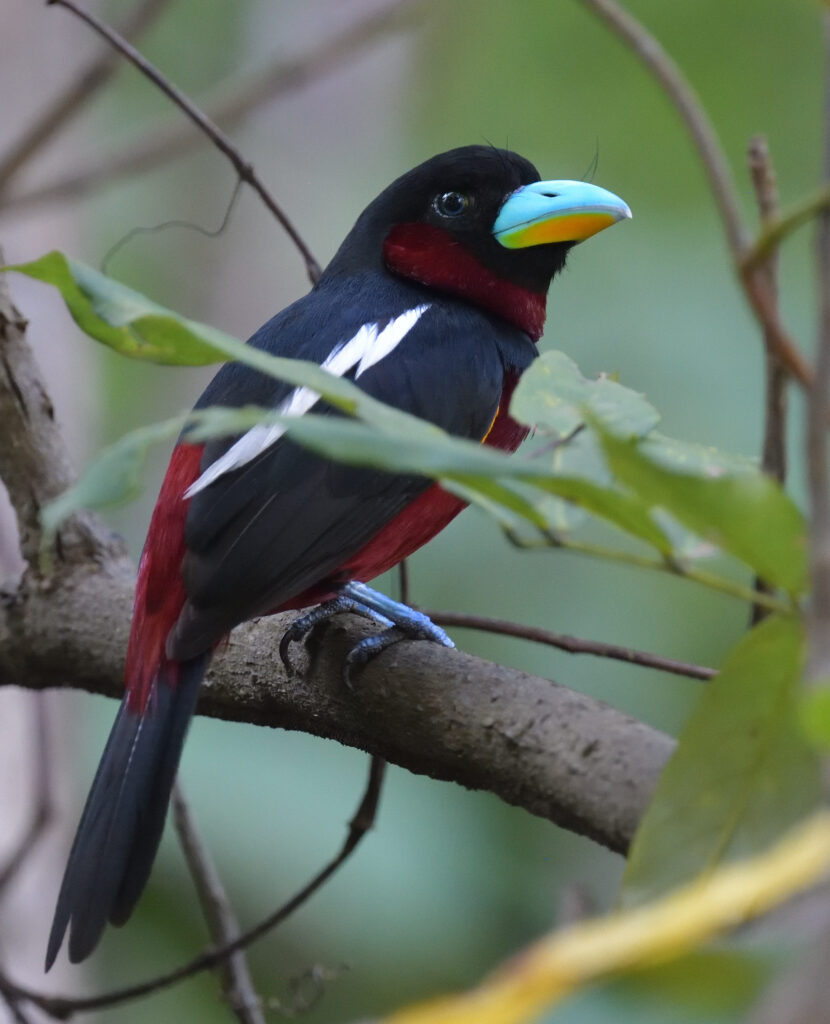

After breakfast, we set off downstream and find a not so small male Bornean Pygmy Elephant on the riverbank just five minutes from the lodge! Turning off into another narrow channel, we find another Grey-headed Fish Eagle perched in a tree overhanging the water, and another troop of Long-tailed Macaques, plus Purple Heron, Common Sandpiper and another Blue-eared Kingfisher. Next, we encounter three elephants swimming along the channel with just their heads above the surface, before they climb out to join others in their group in the riverside shrubbery. While watching these elephants, we also notice an enormous Water Monitor Lizard, probably eight feet in length and certainly the biggest lizard I have ever seen! On the way back to the lodge we spot a Dollarbird sitting on a treetop and among all the many Little and a few Great Egrets, we notice a handful of Intermediate Egrets.
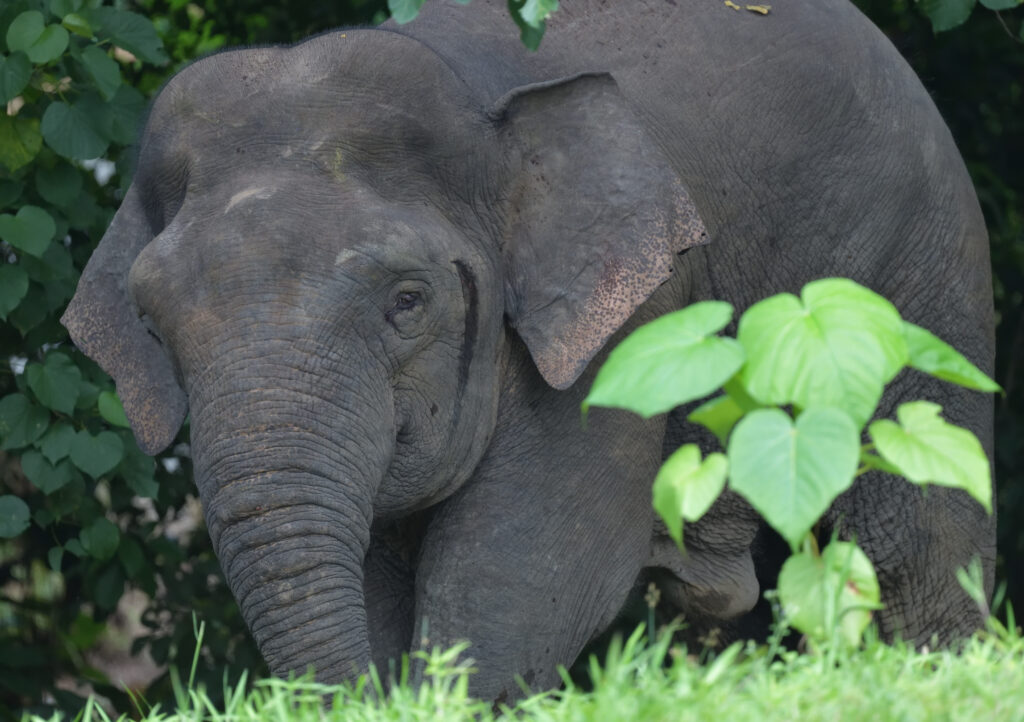
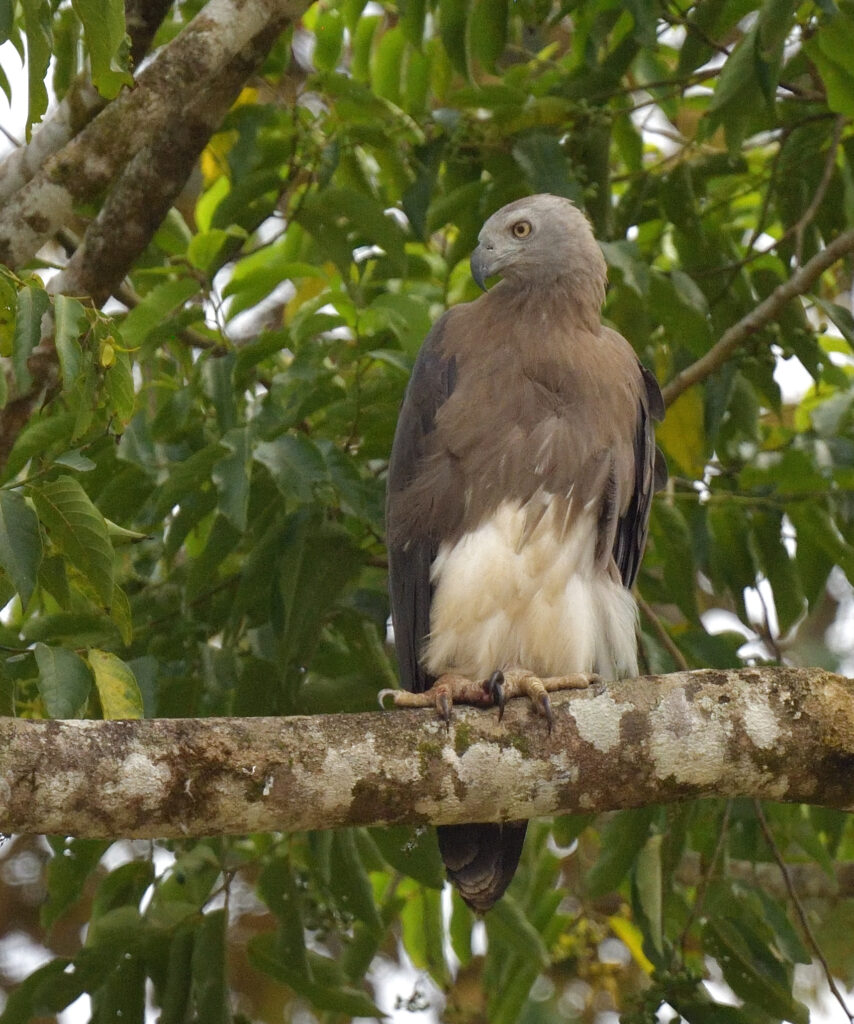
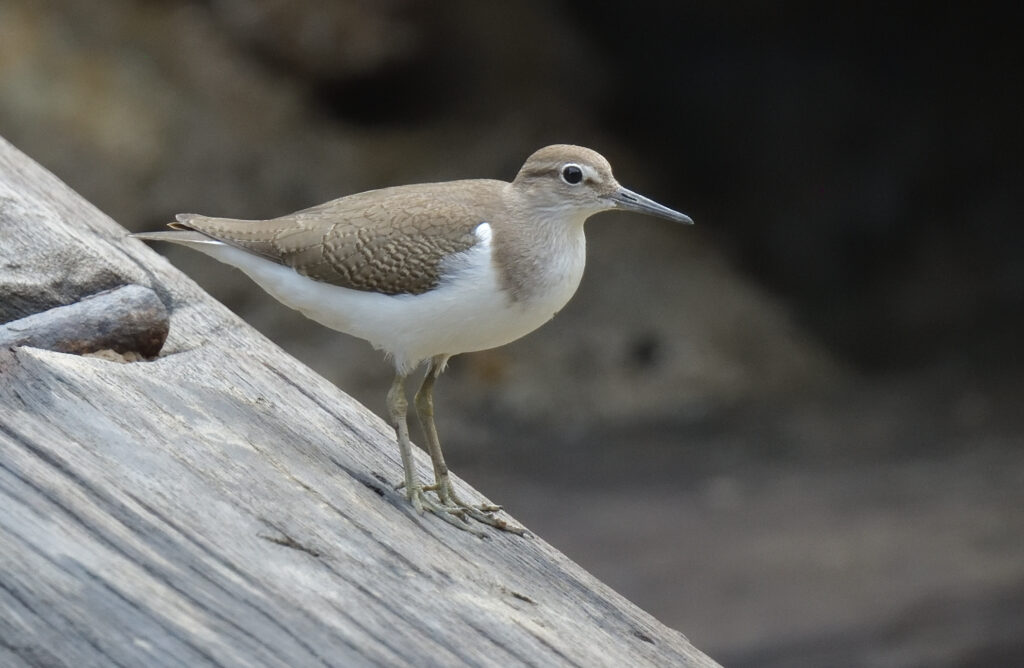
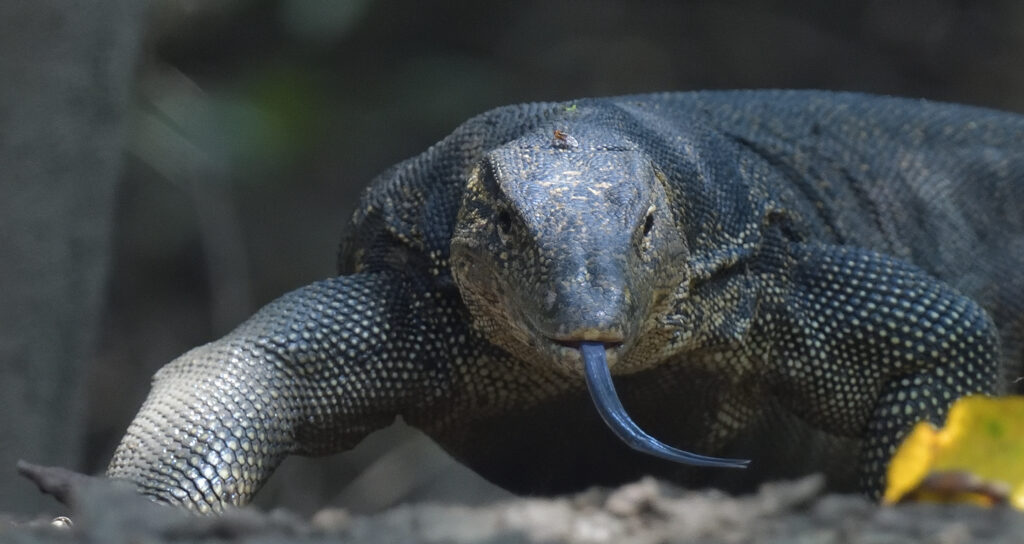
This afternoon, we set off at 3pm in the boat heading downstream, with Imperial Green Pigeons, Slender-billed Crows and a singing Oriental Magpie Robin in the tops of dead trees, along with two Wreathed Hornbills in a tall leafy tree and a couple of White-breasted Woodswallows on riverside wires. Further downstream, we get such close views of a small colony of Glossy Swiftlets building their mossy nests against the side of an outcrop of limestone that their droppings actually land on the boat! Next, we find a Crested Serpent Eagle perched in the same dead tree as a couple of Storm’s Storks and then a mother Orangutan, with a baby hanging upside down in a tree right next to the river. Moving on, we see a group of at least six Oriental Pied Hornbills perched in nearby trees and then a group of at least twelve Bushy-crested Hornbills in another tree, which then fly together across the river! Heading upstream back to the lodge, another hornbill turns out to be an Asian Black and then we spot first one Rhinoceros Hornbill on the left bank and then a second on the right, making five different hornbills in one afternoon! But even this feat is trumped by our last sighting of the day when we notice a Borneo Colugo (aka the Sunda Flying Lemur) clinging to a branch in a sparsely leafed tree beside the river. This is a very strange nocturnal herbivorous relative of the Primates, about the size of a fruit bat, with large bulging eyes and a kite-like outline thanks to a membrane of skin stretching from its neck, via its hands and feet to its tail, enabling it to glide for almost 500 feet from one tree to another! What a remarkable creature and a very lucky find. After dinner, heavy rain puts a dampener on our planned owl walk.
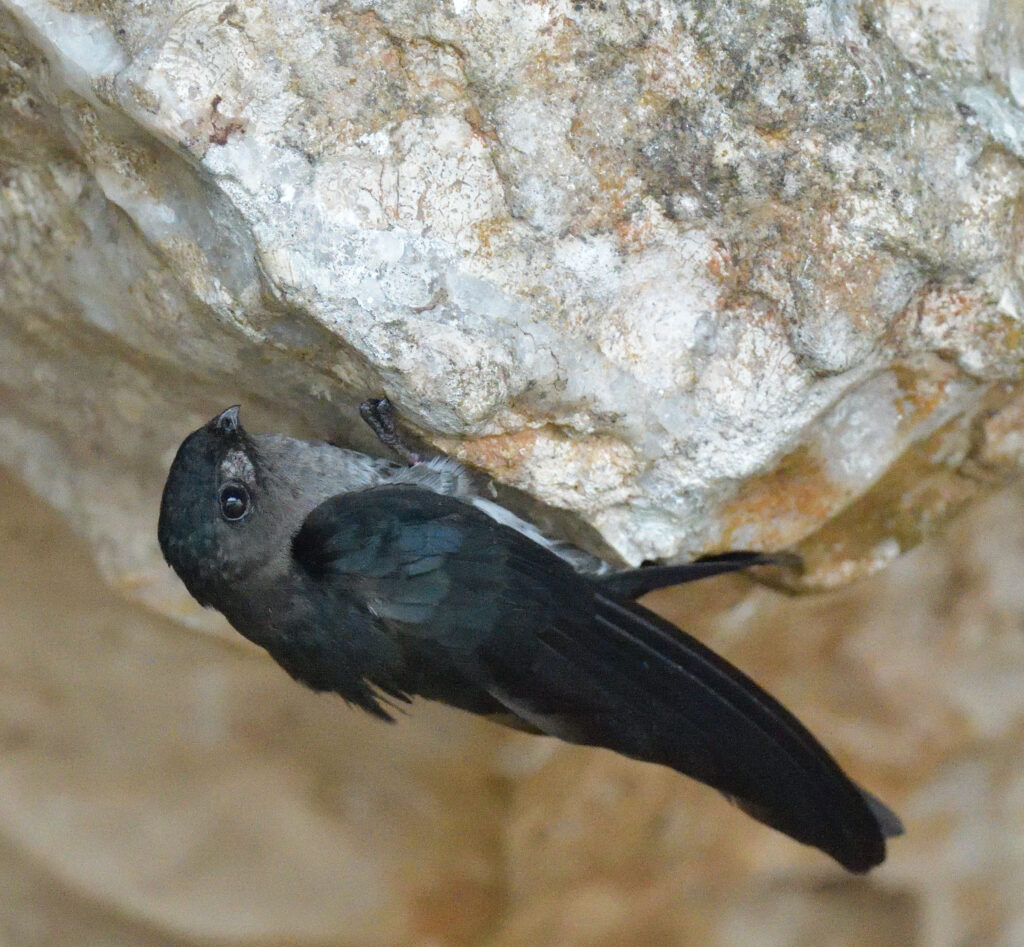

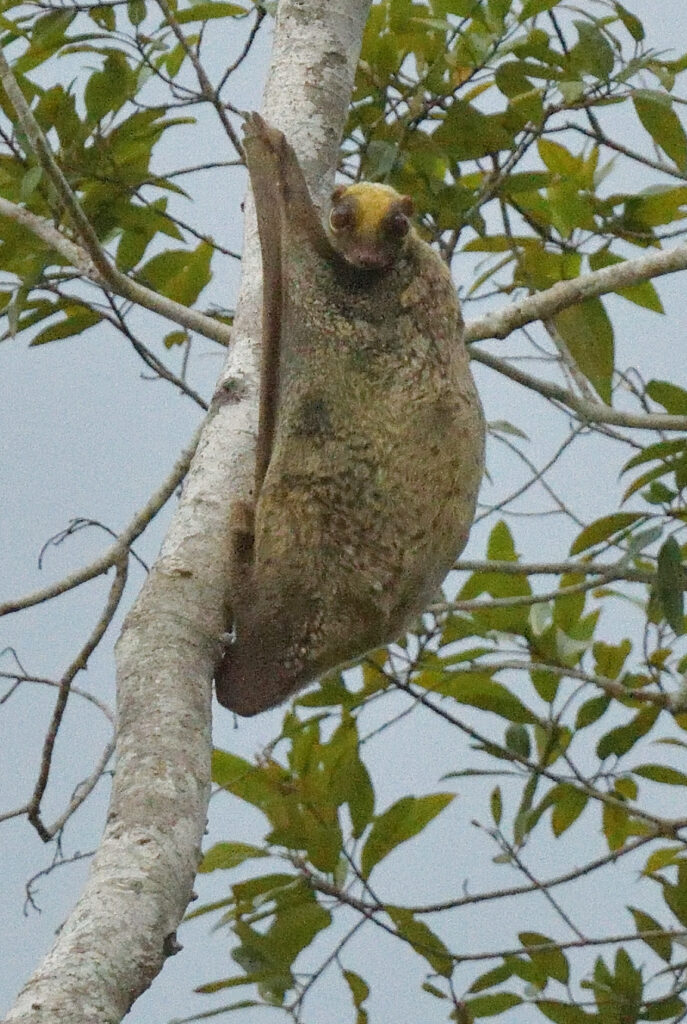
There is a cool mist over the river this morning with a Brahminy Kite flying upstream as we set off downstream again at 6am. Within five minutes of departing, we spot the first of several Stork-billed Kingfishers and after ten minutes we find a row of Long-tailed Parakeets preening on a branch. Our next sighting is a White-breasted Sea Eagle flying by with a fish hanging from its talons and then a second one circles overhead, while a Bornean Gibbon sits resting in a tree. Around 6.30am we find a mixed group of Bushy-crested, Oriental Pied and Wrinkled Hornbills, along with a Silvered Langur and then a single Asian Black Hornbill. Passing a small Saltwater Crocodile near the riverbank, we spot a Wallace’s Hawk Eagle sitting in a treetop and then turn into a very tranquil side channel where we find Rhinoceros Hornbill, Crested Serpent Eagle and Blue-eared Kingfisher. While sitting in the boat alongside the bank, hoping for a calling Bornean Ground Cuckoo, we suddenly have to move out of the way of a substantial Pygmy Elephant swimming along the channel towards us! Once away from the bank, the elephant swims alongside the boat, almost completely submerged while using the end of its trunk as a snorkel! With the elephant safely out of the way, we resume our stakeout for the calling Ground Cuckoo which eventually shows itself up in a tree! So, that’s island endemic number 31! Back at the lodge, we find a twelve foot long Saltwater Crocodile resting on the opposite side of the river.
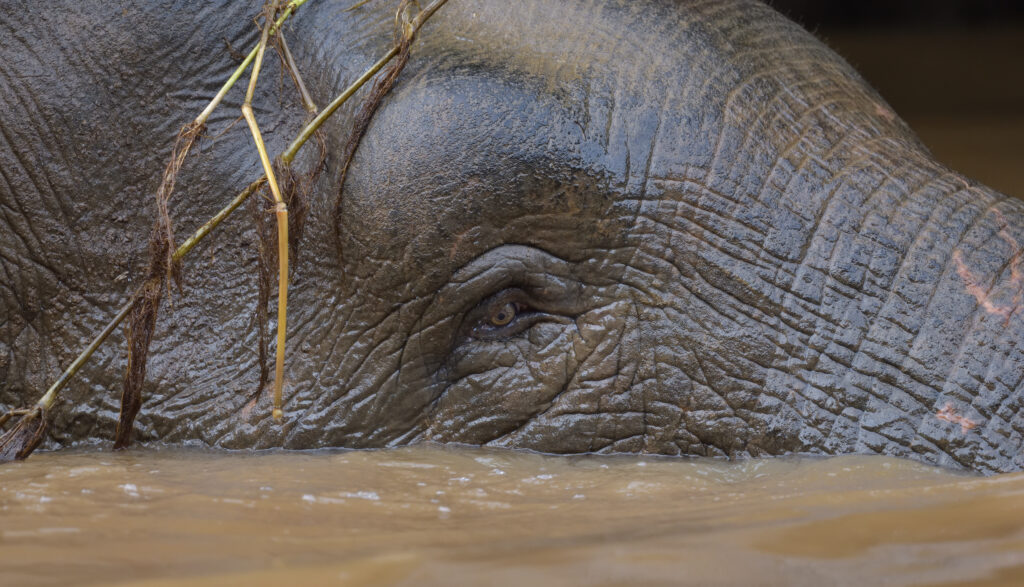
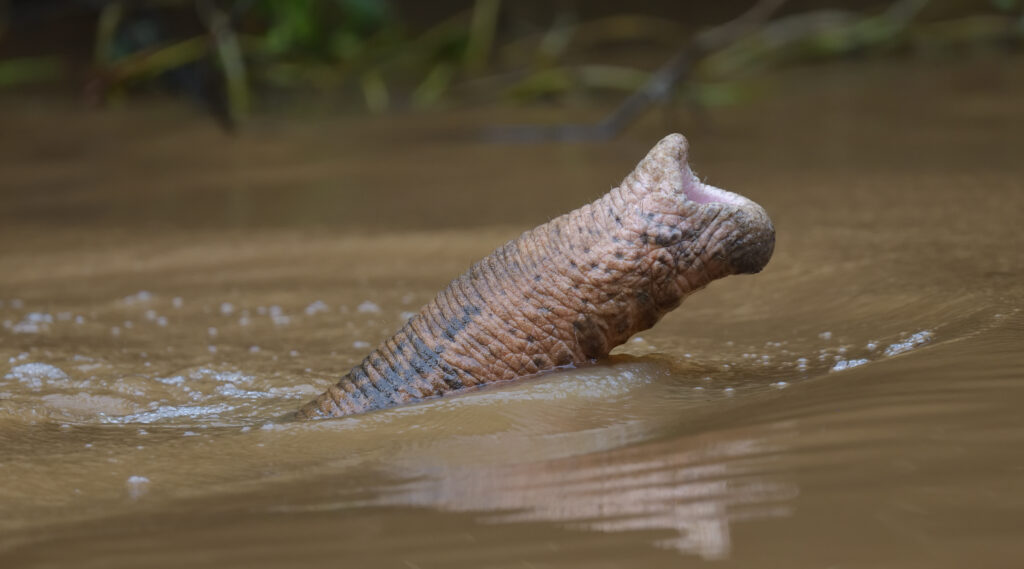
After breakfast, we have a second trip downriver, departing at 9.30am for a nearby side channel, where a very tranquil cruise produces a posing Stork-billed Kingfisher and then Greater Racquet-tailed Drongo, plus Black-naped Monarch which is new for the trip. On the way back along the same channel we find a Water Monitor Lizard reclining on a fallen tree branch.
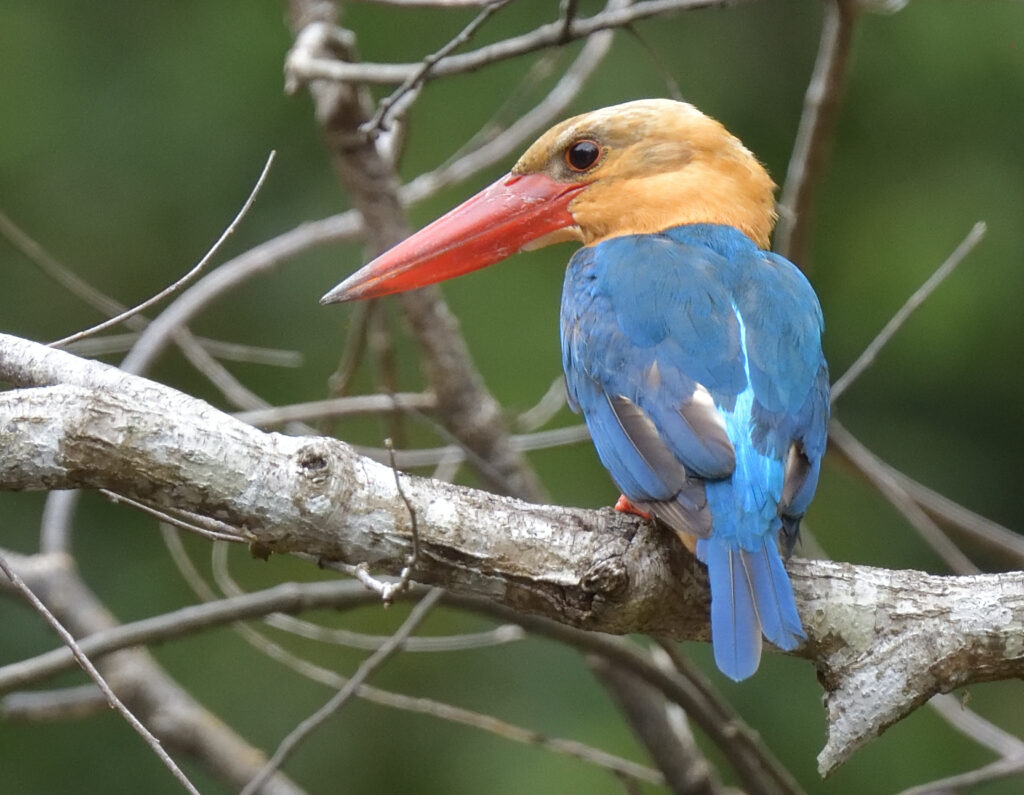
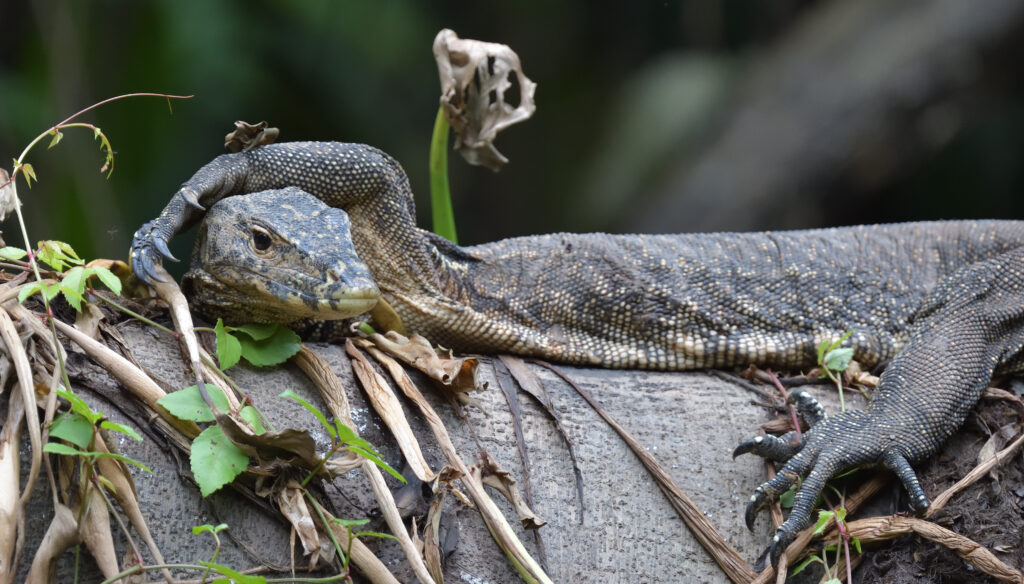
This afternoon, we cross the river at 2pm to rendezvous with our waiting driver for a visit by road to the Gomantong Caves where we literally follow in the footsteps of the great Sir David Attenborough who made these caves famous with one of his legendary wildlife documentaries way back in the 1960s. It’s company policy with our ground agent to issue their clients with hard hats here, making us look like construction workers! In over 26 years of leading groups, birding in a hard hat is a first! Along the boardwalk to the first cave, we find Pied Fantail, a family of endemic White-crowned Shamas and a female Orangutan.
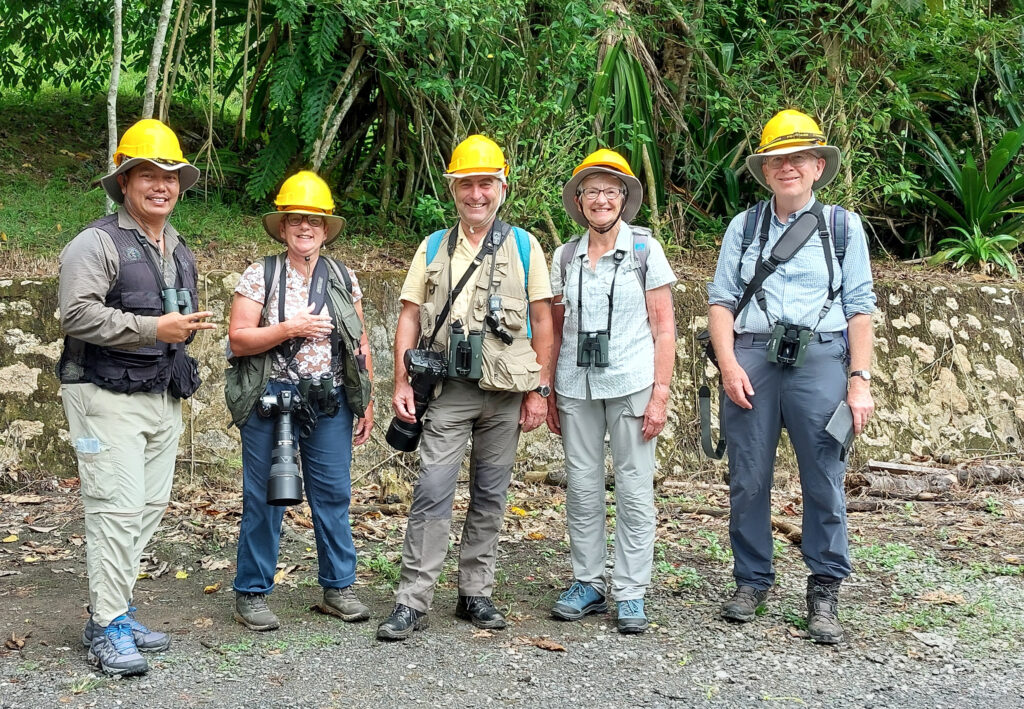
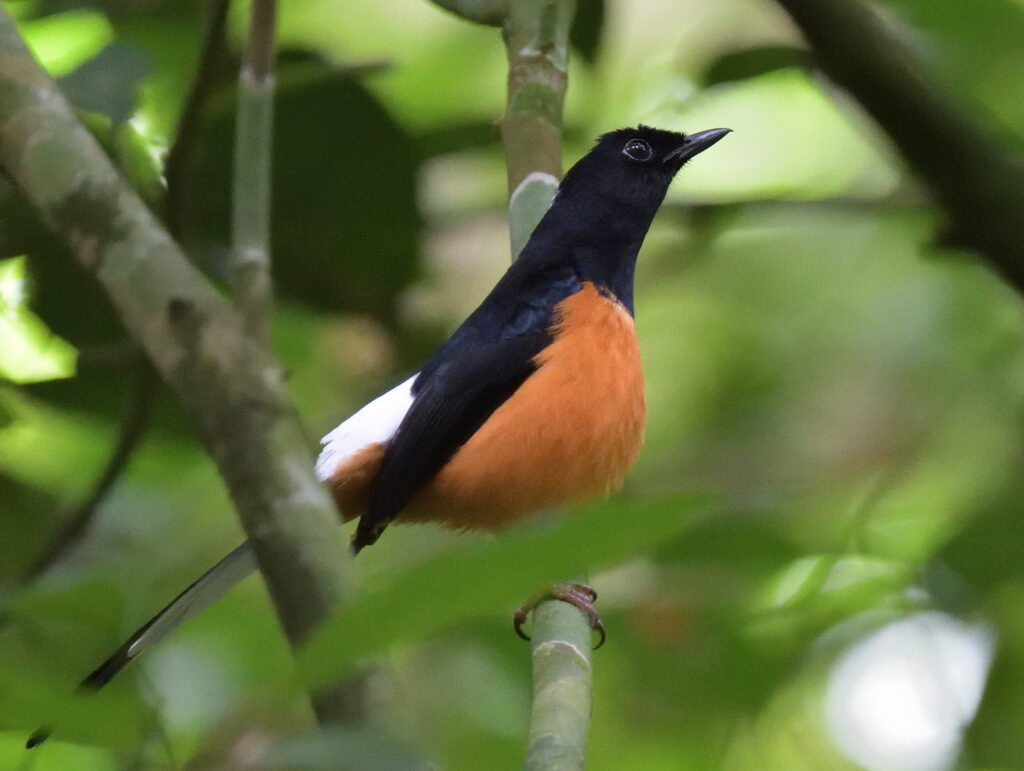
Inside the Black Cave, so called because of the large population of Black-nest Swiftlets, which build their nests against the sides of the cave, which rise to 295 feet above the cave floor, the floor is piled high with guano from the thousands of swiftlets and over a million bats which live in this dim world! Meanwhile, all the guano perpetually raining down from above attracts thousands of feasting cockroaches, and so a tour of this hellish cave is not for the faint-hearted. More creepy-crawlies adorning the cave walls are huge venomous Large-legged Centipedes which prey on any hapless bats or swiftlets which occasionally drop onto the cave floor. Another hazard for the swiftlets and bats are raptors like the Crested Serpent Eagle, sitting on a vine across the top of the cave entrance, waiting to grab any bird or bat which passes within striking distance.
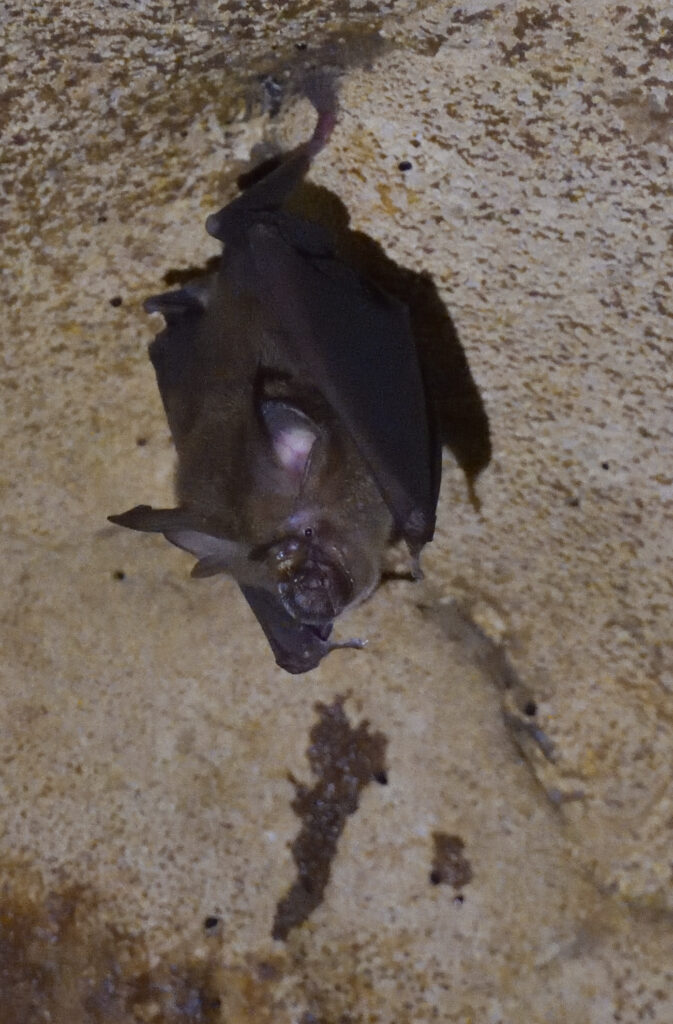

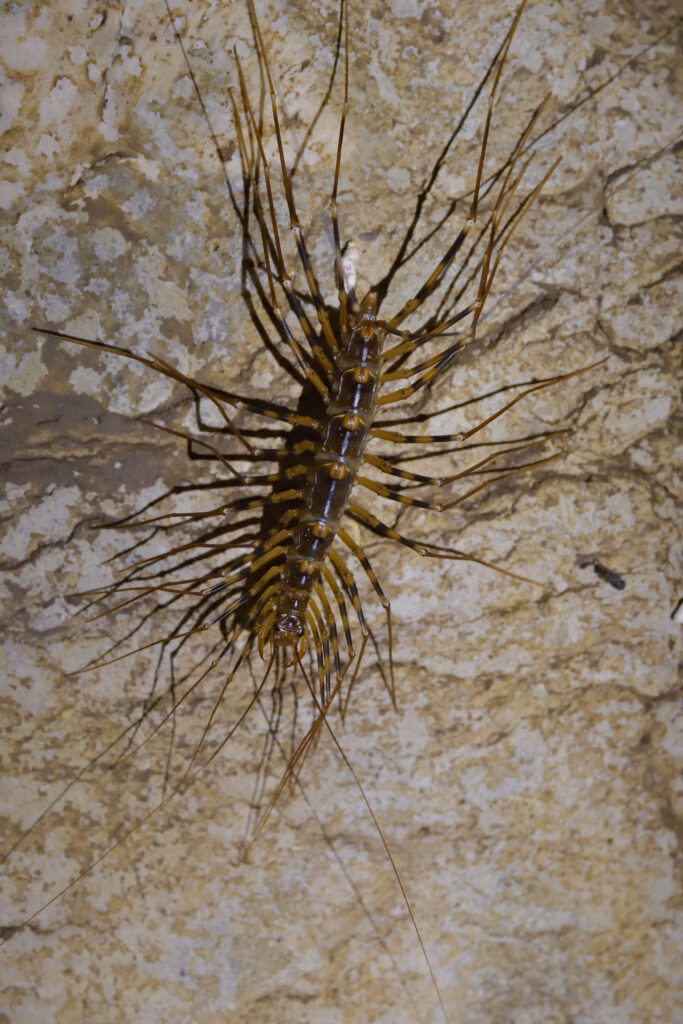
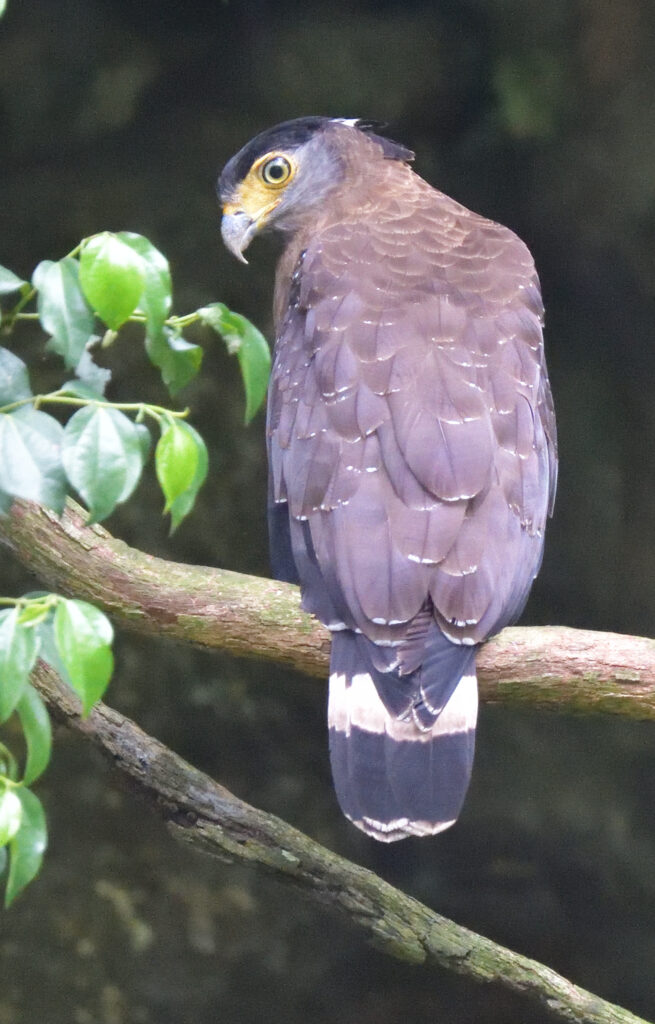
Back in the fresh air, a boardwalk comprising 558 steps leads up a steep slope to the White Cave, where thousands and thousands of White-nest Swiftlets attach nests to the cave walls, made entirely from their own saliva! These are the ‘edible’ nests which command a high price in Chinese restaurants and so the ‘local heroes’ go to astonishingly daring lengths to collect these nests. From the observation platform at the top of all the steps, we spot two Orangutans and a Red Langur feeding on fruits in the trees near the cave entrance. Here, one can watch an amazing spectacle as countless swiftlets noisily fill the air, until the approach of dusk when all the swiftlets fly purposefully into the cave to roost for the night. Meanwhile, at around 5.30pm there is a sudden efflux of innumerable bats in a constant frenetic stream involving so many thousands, at a rate of dozens per second, that it can take almost an hour for all the bats to emerge! With so much potential prey, we also see raptors like Wallace’s and Rufous-bellied Hawk Eagles dashing after the bats, while the most adept attacker here is the Bat Hawk, a crepuscular raptor which specialises in careering into a cloud of bats, just like a large predatory fish would dive into a ‘bait ball’ of smaller fish. As we watch the action, the hawk emerges from the bat cloud with a bat, which is swallowed whole in mid air! Apparently, Bat Hawks will take up to fourteen bats per night!
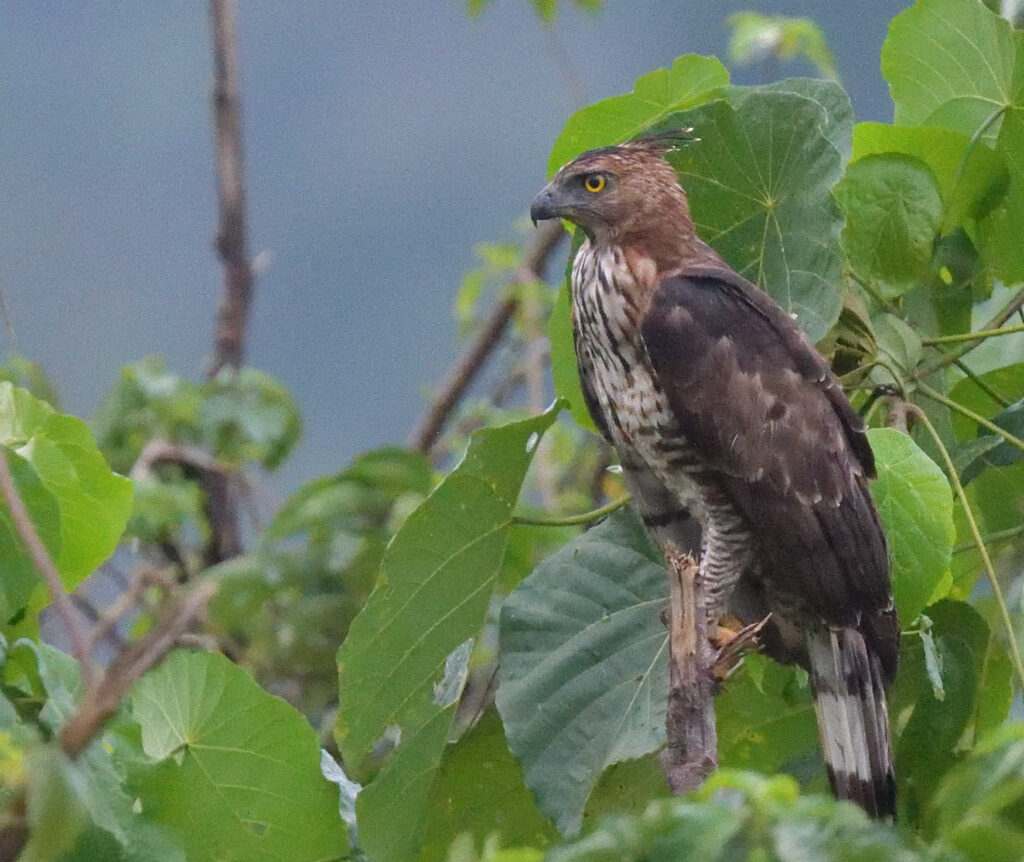
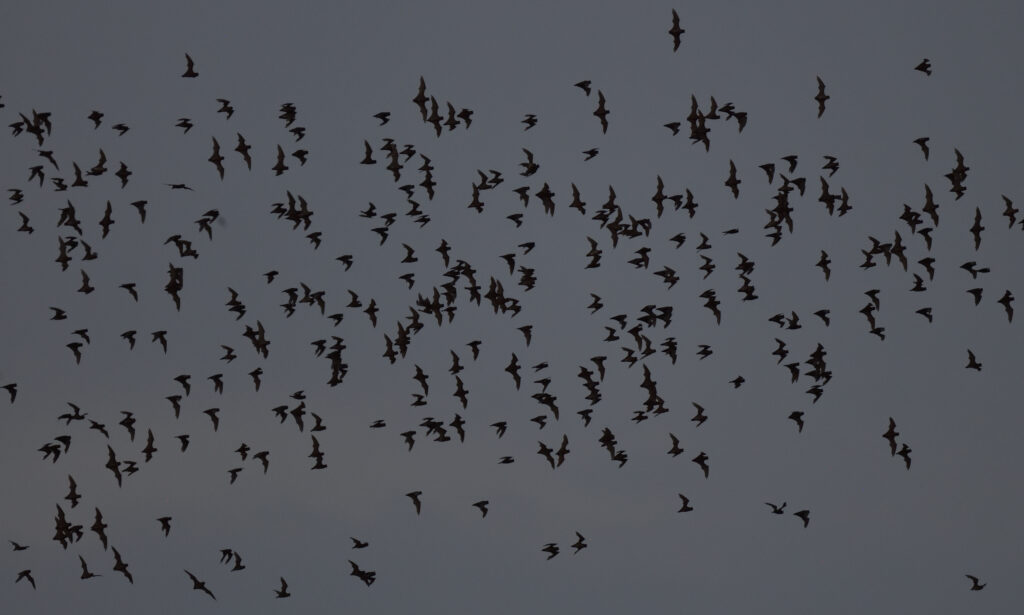
We have a well-earned lie in this morning, until breakfast at 8am and departure at 9, but before we leave we find a pair of Brown Wood Owls roosting in a tree beside the lodge. After a long bumpy ride, we arrive at the Tabin Wildlife Lodge in time for lunch, which coincides with a short but torrential downpour. Here, we meet local guide Paul who briefs us on the cunning plan for our two night stay here. With a lot to pack in, we begin at 3pm with a safari into the forest in an open top four-wheel drive pickup truck, where we soon find Asian Black Hornbill and the endemic Yellow-rumped Flowerpecker, while a large tree, heavily laden with ripe green figs produces Little and Large Green Pigeons.
Setting off along a trail on foot, we find Yellow-breasted Flowerpecker, Brown Fulvetta, Hairy-backed Bulbul, Scaly-crowned and Chestnut-rumped Babblers, a very obliging female Scarlet-rumped Trogon and a female Bornean Blue Flycatcher. Back at the fruiting fig tree, we spot one Rhinoceros and six Bushy-crested Hornbills, as well as a mother and baby Orangutan gorging themselves on the figs, while the baby hangs by one hand, with a third adolescent Orangutan in an adjacent palm tree. As the light begins to fade a flock of at least 100 Large Green Pigeons erupts from the tree to roost elsewhere, a Red Giant Flying Squirrel emerges from its daytime roost and we also spot two Bornean Falconets, which are the world’s smallest raptors, feeding on large butterflies!

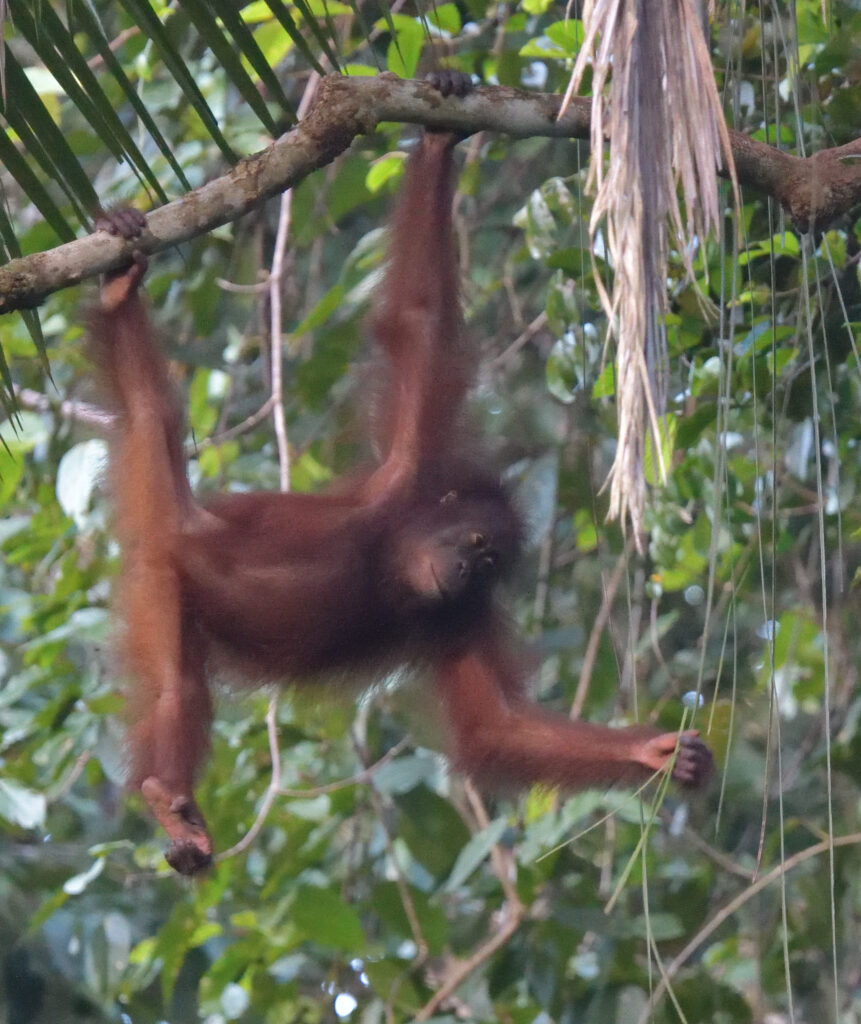
After dinner, we set off on a night drive and spotlight a sizeable Malay Civet while still amongst the lodge cabins, within yards of setting off! Five minutes later Paul fixes his spotlight on a smaller, darker Island Palm Civet and then pinpoints a Red Giant Flying Squirrel, in the same tree as a Slow Loris. Next, we find a Yellow-bellied Prinia roosting on the end of a long stem of grass and then another Island Palm Civet and another Malay Civet. With sightings almost at five minute intervals, the next is a sleek Leopard Cat, though far smaller than a true leopard. Five minutes later, we have another Island Palm Civet and then a Buffy Fish Owl, perched at the side of the track away from any water, while hunting with its large yellow eyes. Next, we find a Crested Serpent Eagle, fast asleep with its head tucked under a wing, and then on the way back to the lodge, the orange eyeshine of a tiny Oriental Bay Owl, along with another Malay Civet, a Brown Wood Owl, a Black Giant Flying Squirrel and three more Leopard Cats! Wow, that was a remarkably productive night drive, made even more memorable by occasional flashes of very distant lightning across an otherwise dark but star-studded sky with a clearly visible milky way.
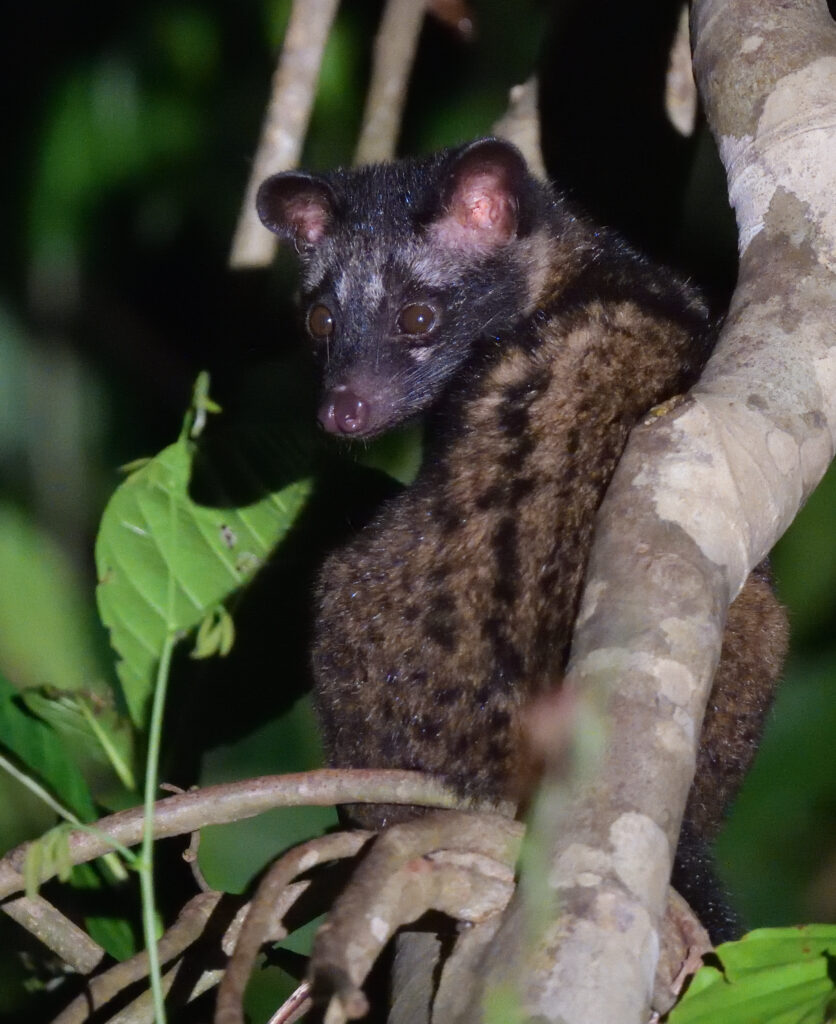
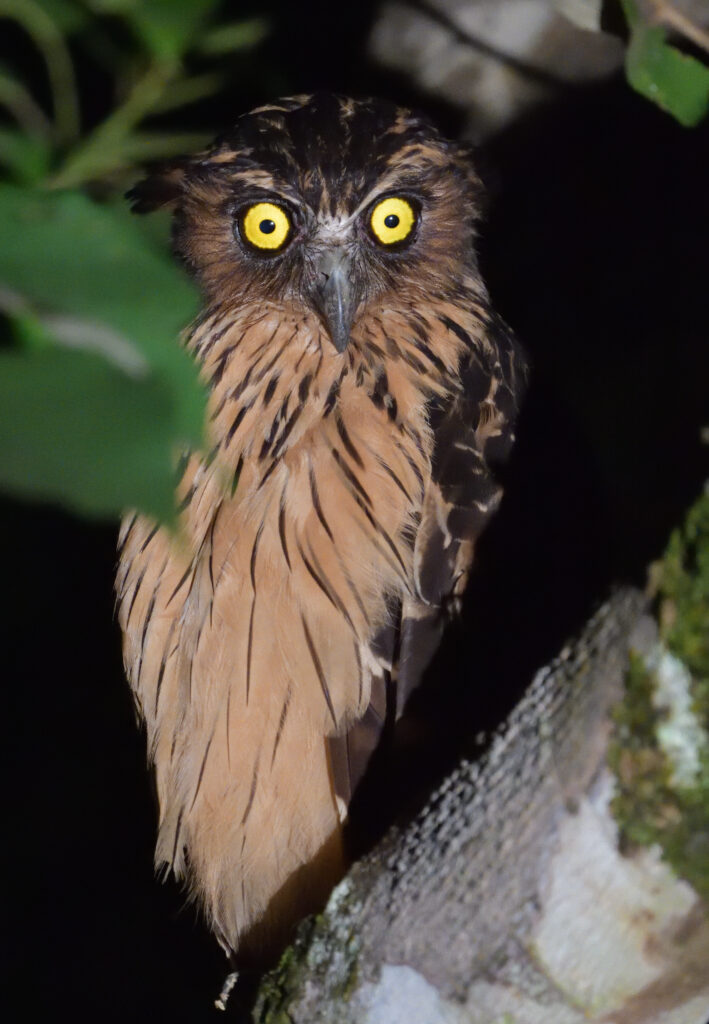
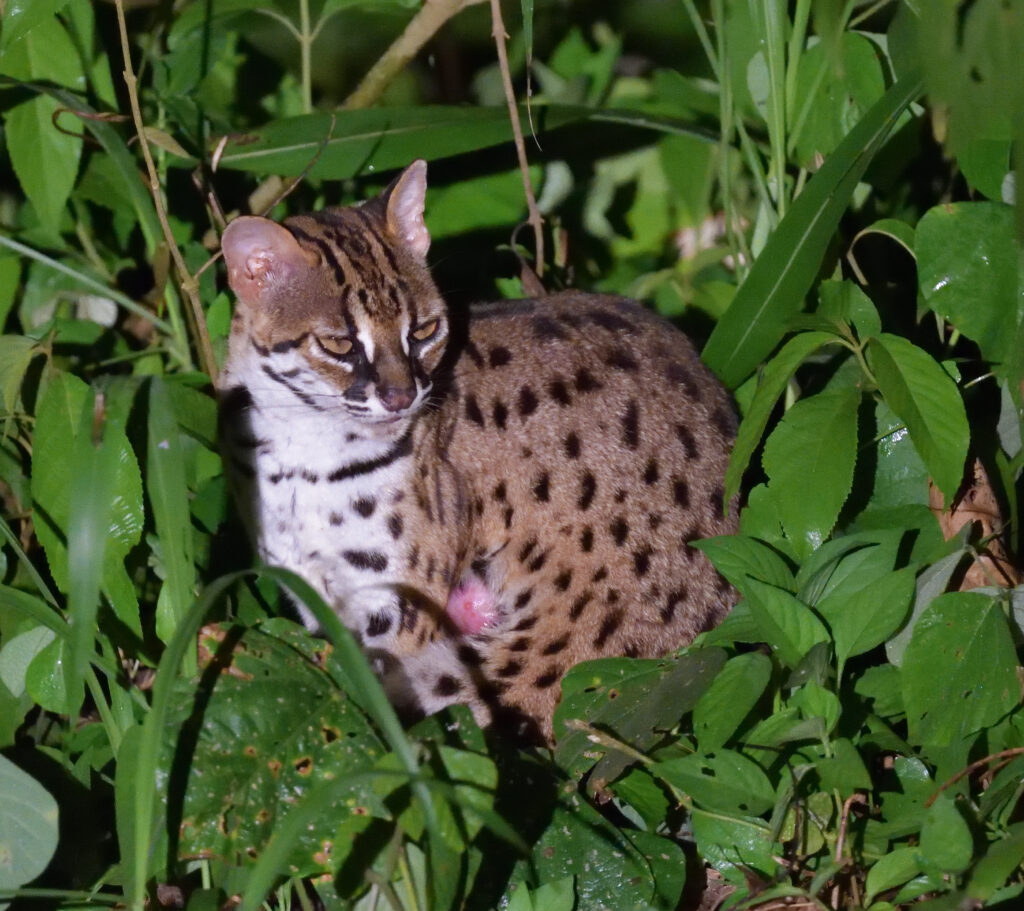
This morning, we set off in the jeep at 6am and begin with a Black-and-yellow Broadbill and a White-crowned Forktail within the lodge grounds. Along the track we spot Dusky Munias and get great views of a male Rhinoceros Hornbill delicately tossing back tiny berries with his massive ivory-white bill. Further sightings include an Oriental Darter and a posing female Scarlet-rumped Trogon, which is our fourth trogon of the trip. Along the Lipad Mud Volcano trail we find several new birds for the trip like Striped Wren Babbler, Banded Broadbill, Sooty-capped Babbler and a pair of Banded Woodpeckers ‘glued’ to the end of a dead tree trunk. At the end of the trail, we reach the mud volcano where hot mud occasionally oozes from underground, creating a low dome of mud devoid of any plant life.
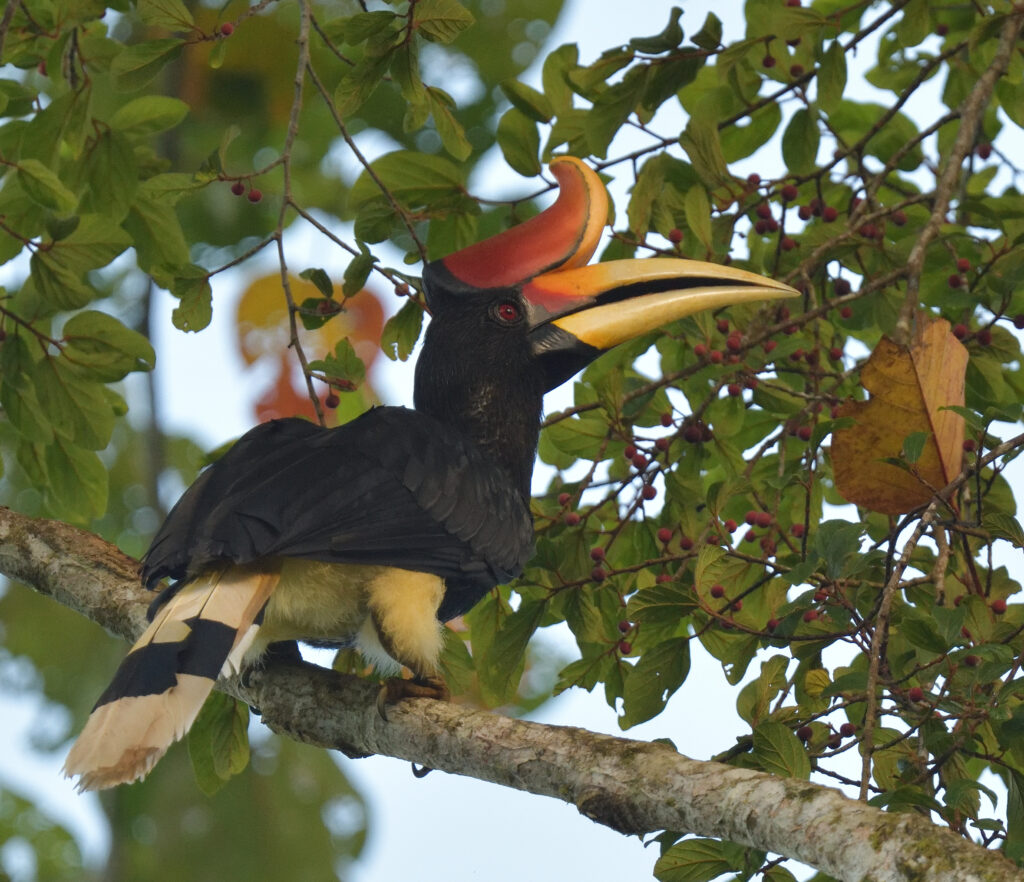
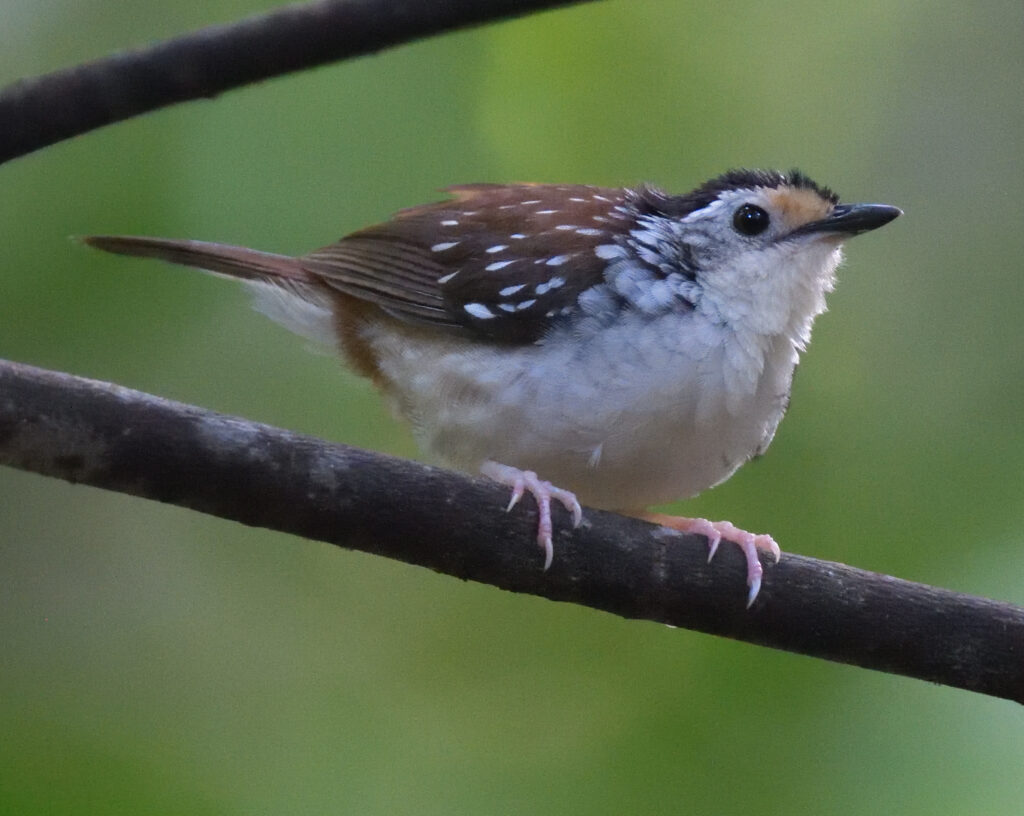
On the walk back along the trail, we find a male Crested Fireback accompanied by two females, as well as a female Asian Paradise Flycatcher, a singing Rufous-chested Flycatcher, and at long last, a pitta; an endemic bright rufous female Blue-headed Pitta, which lacks the blue head.
On the drive back to the lodge for lunch, we also find Pied Fantail, Thick-billed Spiderhunter, a male Raffles’s Malkoha, an overflying Black Eagle, a Crested Serpent Eagle posing on a branch beside the track, a very obliging male Oriental Pied Hornbill, and a tiny male Rufous Piculet, which at just four inches long is one of the world’s smallest members of the woodpecker family.
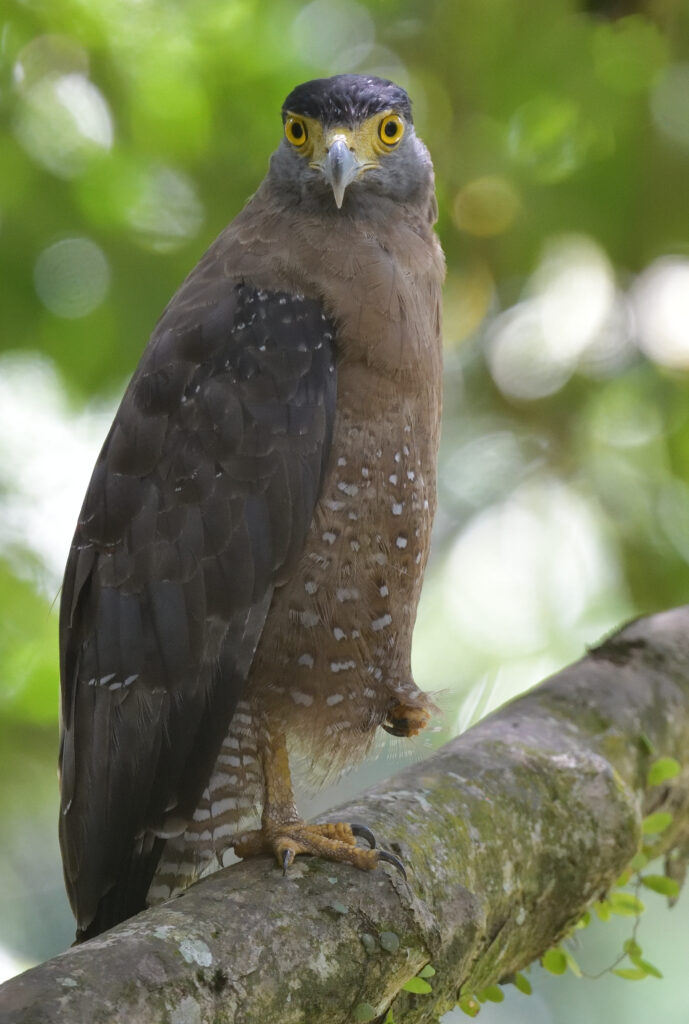

After lunch and some free time back at the lodge, we set off in the jeep again at 4pm and count a couple of Helmeted Hornbills and at least six Rhinoceros Hornbills in the now famous fruiting fig tree. Suddenly, Paul hears the calls of the Bornean Bristlehead, which is one of Borneo’s most highly sought endemic birds, and the only member of its family. Only about 36 bird species worldwide have no other family members! After a short wait we have this medium-sized black bird with a bright red head and stout hooked bill in our sights and then three more pass by with a woodpecker-like flight. As the day light begins to fade, we just have time, after a patient wait, to pinpoint a very mobile Black-throated Wren Babbler, bringing the current tally of Bornean endemics to 38 species.
Around 6pm, Imperial Cicadas begin their brief but very loud sawmill-like call and then it quickly gets dark, so Paul suggests we “wait for a frogmouth”! Sitting in the truck in the dark, looking up at the stars and trying to stay awake, Paul suddenly shines his light and there it is, Blyth’s Javan Frogmouth perched on a bare branch with starring yellow eyes! How did he do that magic trick? Driving back to the lodge, we also spotlight several Greater Mouse Deer, about the size of large rabbits, another Malay Civet and a Reddish Scops Owl.
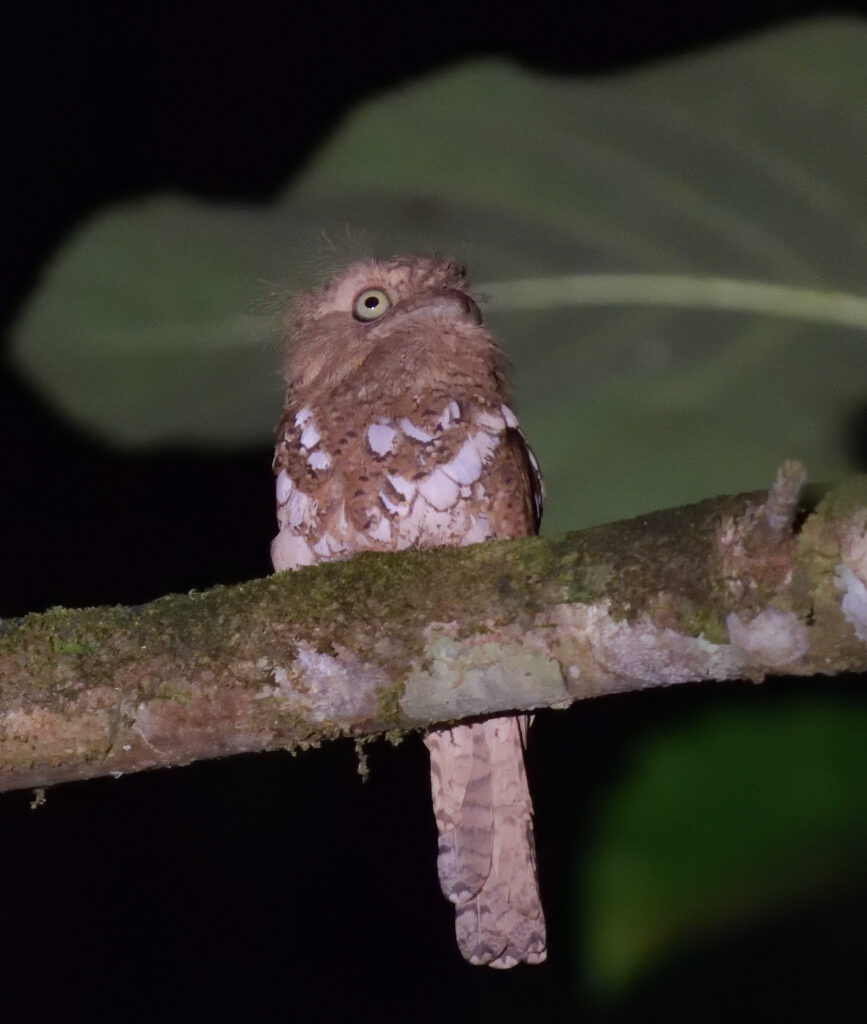
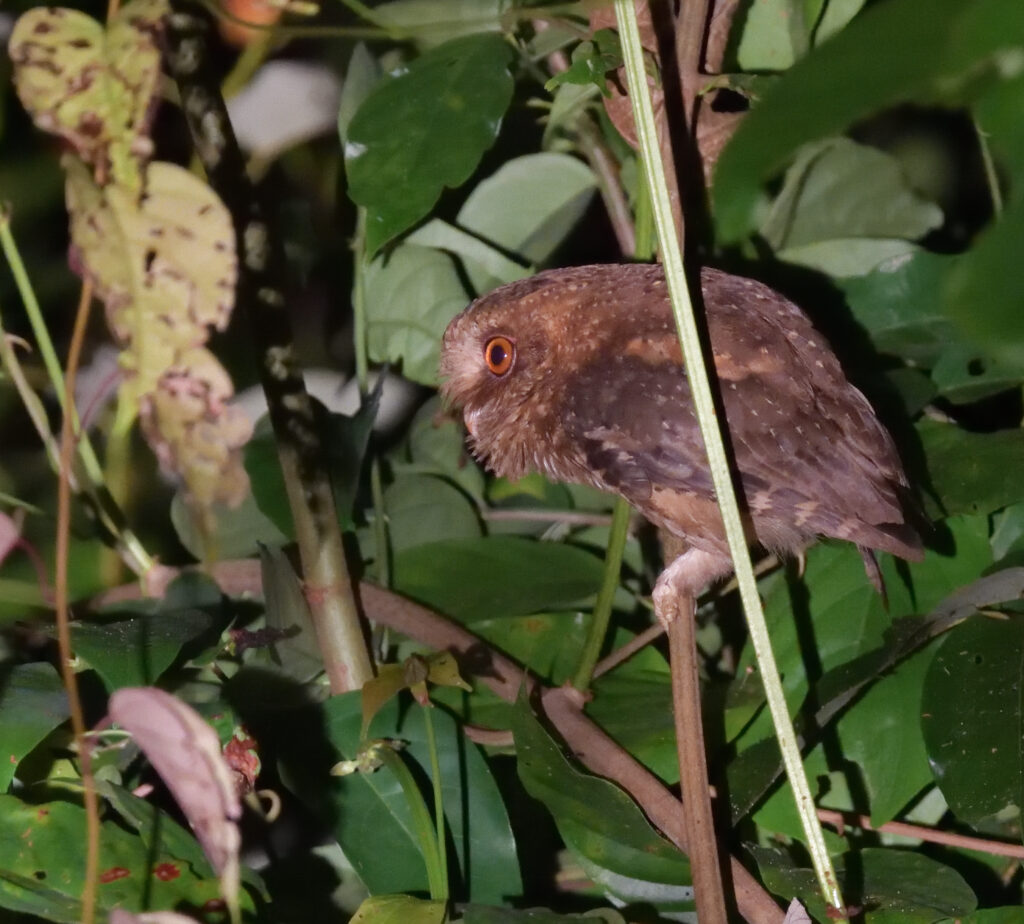
We set off on foot at 6am this morning, over a very wobbly bridge across the small river flowing beside the lodge, to follow a narrow trail into the jungle with occasional shafts of sunlight penetrating the dense canopy above. Judging by the amount of dung on the ground, the trail is used by elephants more than people, although to be fair, one wouldn’t expect to see piles of human poo! Our main target here is another pitta and we hear several distant calls, so eventually Paul disappears into the undergrowth, machete in hand! After several minutes he returns and invites us to follow him ‘off piste’ and within a short distance he points up to an endemic male Black-crowned Pitta sitting in a tree about fifty feet above the ground! We each take turns to crouch down in the only available spot where the bird can be seen through the foliage.
Emerging from the trail back into the sunlight on a wide track, we find the following selection of birds; Buff-necked Woodpecker, Spectacled Bulbul, Purple-naped Sunbird, Fluffy-backed Tit Babbler, with puffed out blue skin cheek pouches each time it calls, Green Iora, Lesser Green Leafbird, Arctic Warbler, Blue-eared Kingfisher, a male Blue-crowned Hanging Parrot and Chestnut Munia, plus Ashy Tailorbird and Yellow-rumped Flowerpecker back in the lodge grounds.
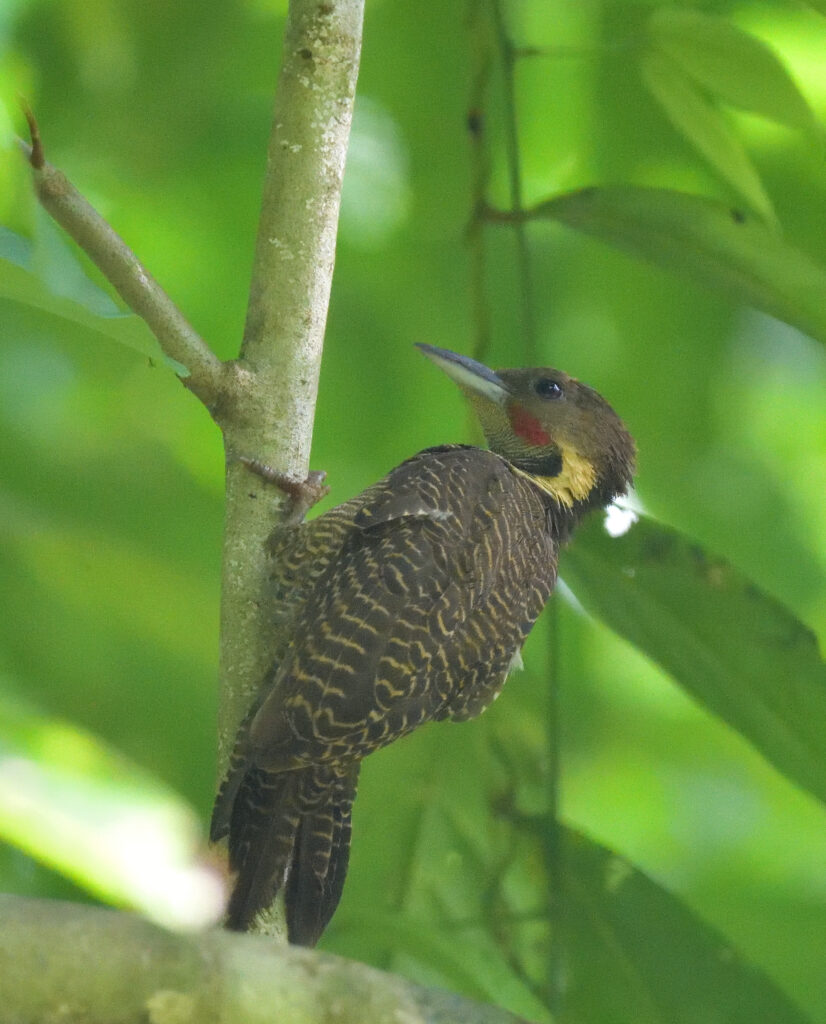

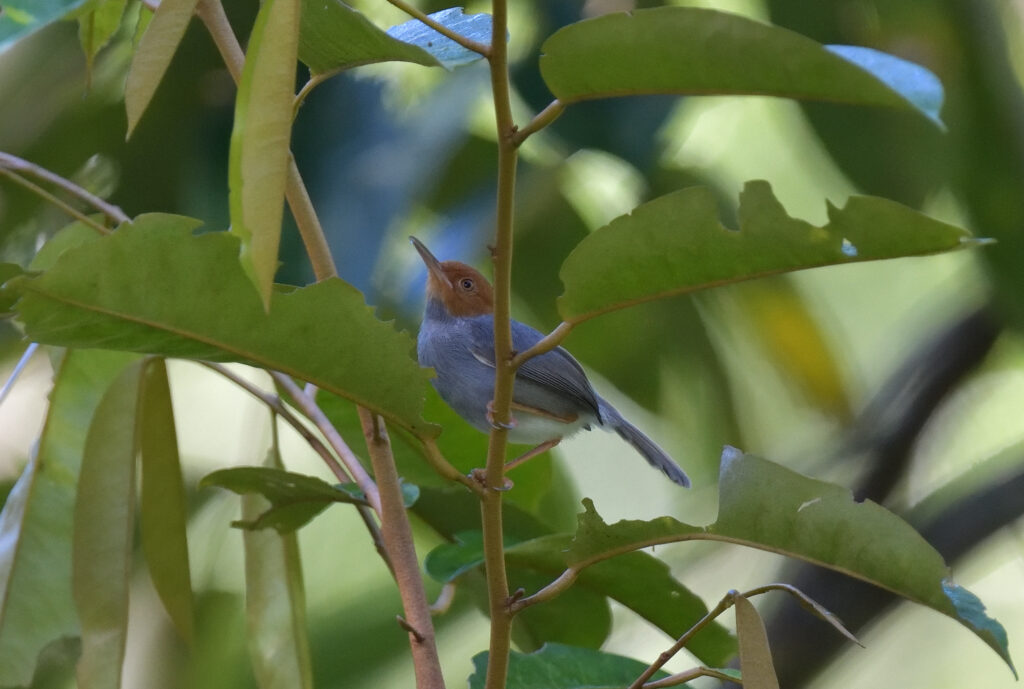
Sadly, it’s time to leave the lovely Tabin Wildlife Lodge and our excellent guide and move on to the Borneo Rainforest Lodge deep within the pristine jungle of the Danum Valley. Along the gravel track to the lodge, the vehicle thermometer reads 32°C, and along the way we pass a three foot long but remarkably slender vivid green Malayan Vine Snake. On arrival at the exceedingly posh Borneo Rainforest Lodge, we meet Cassy, our new guide who suggests an afternoon walk at 4.15pm, but as this is a rainforest, this plan is scuppered by a particularly heavy downpour at 4pm until around 4.45, but just in time for happy hour from a vantage overlooking the Danum River, with a verdant wall of virgin rainforest towering hundreds of feet above the opposite side of the river.
At 7pm, we set off on a night drive in a quiet electric buggy, ideal for listening to the cacophony of pinging tree frogs and stridulating insects. Along the access track to the lodge, we find another Malay Civet, a pair of roosting Chestnut-naped Forktails, curled up like tennis balls, a beautifully marked Sumatran Pit Viper coiled up as if ready to strike at any suitable passing prey and File-eared and Dark-eared Tree Frogs. Back at the lodge, a Barred Eagle Owl flies in to perch on a branch at eye level right outside the open dining area!
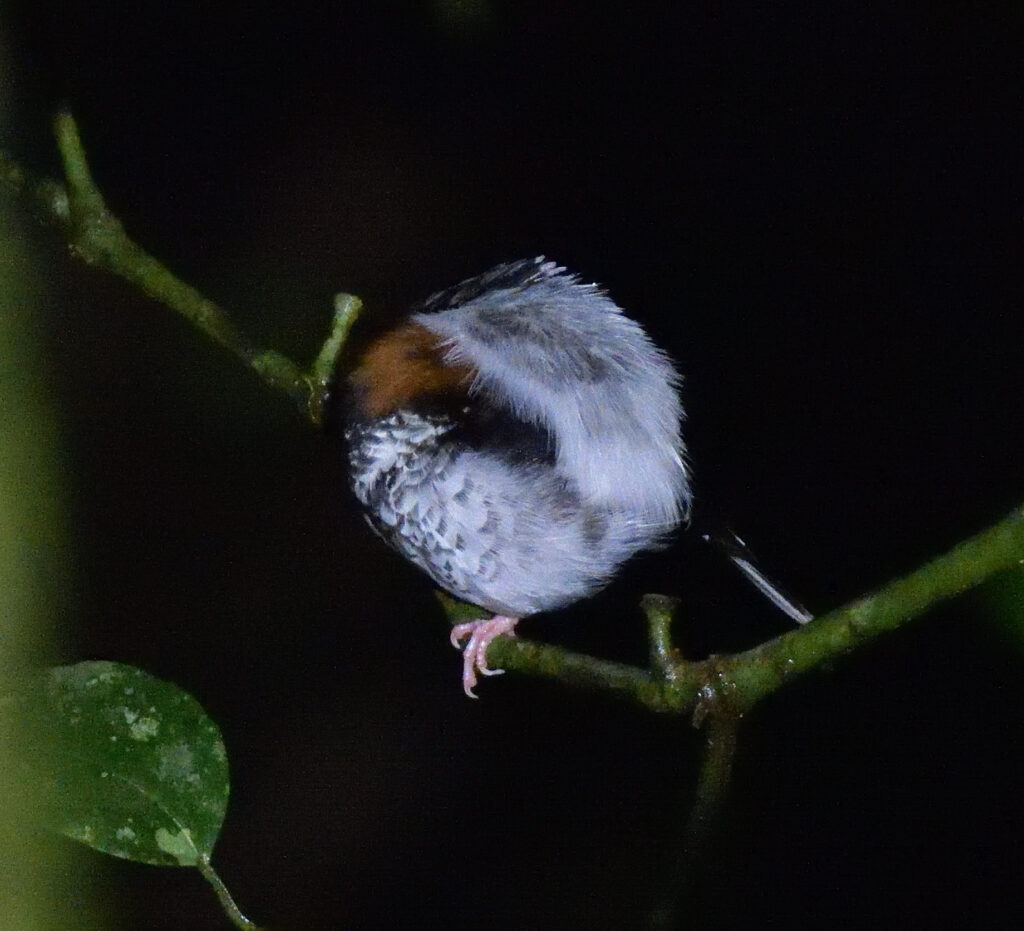
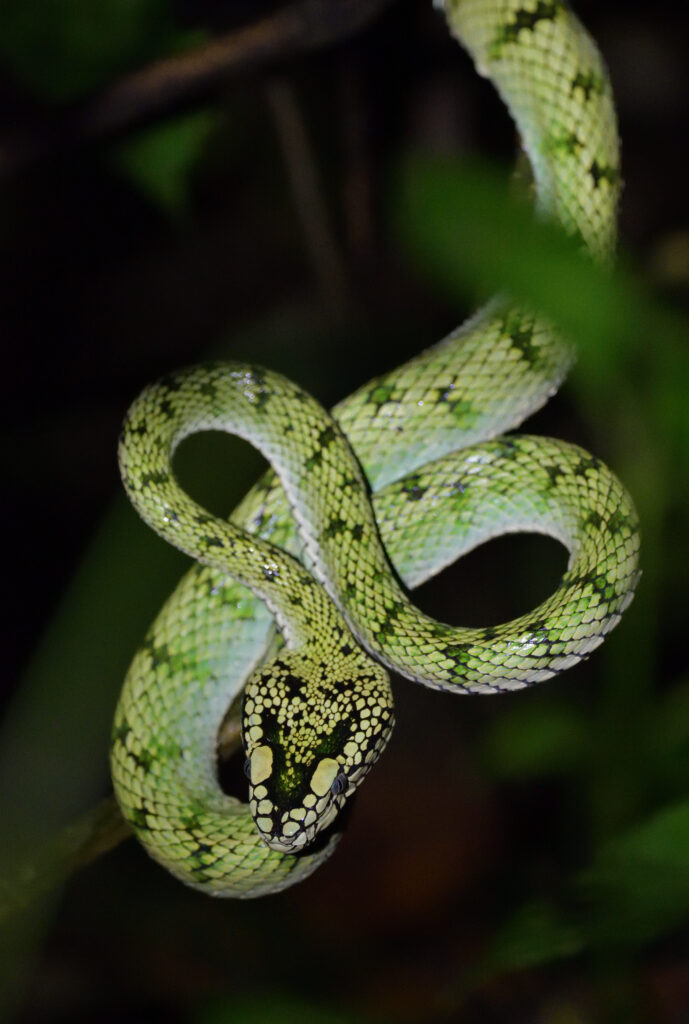
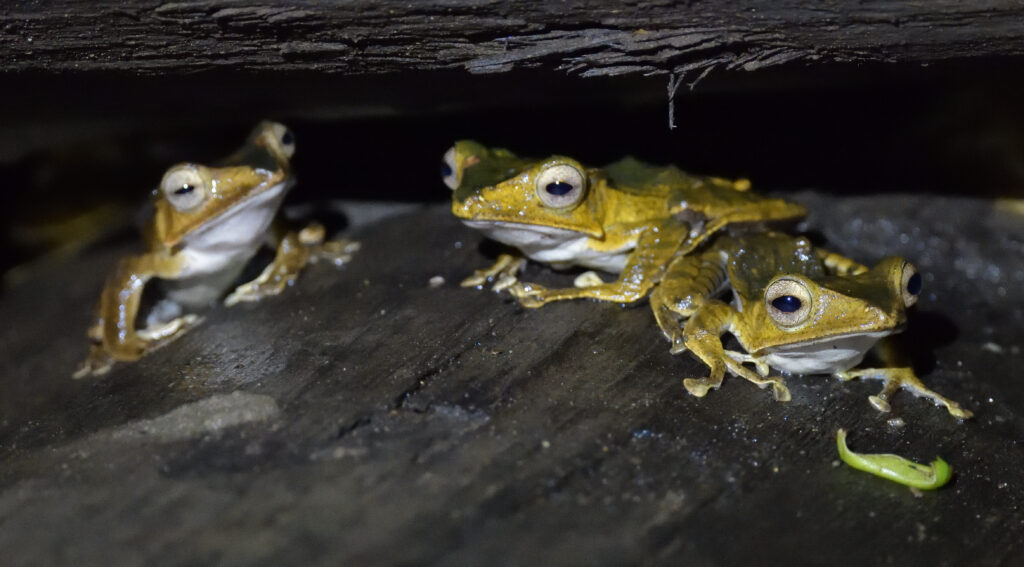
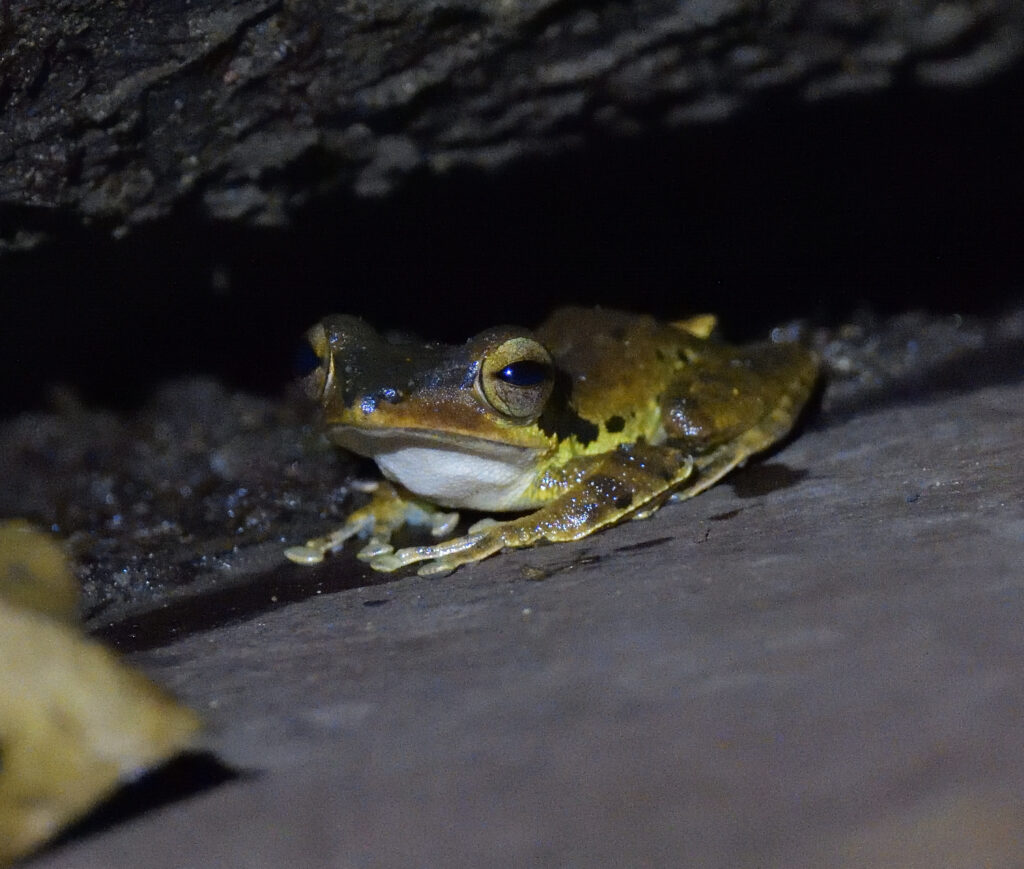
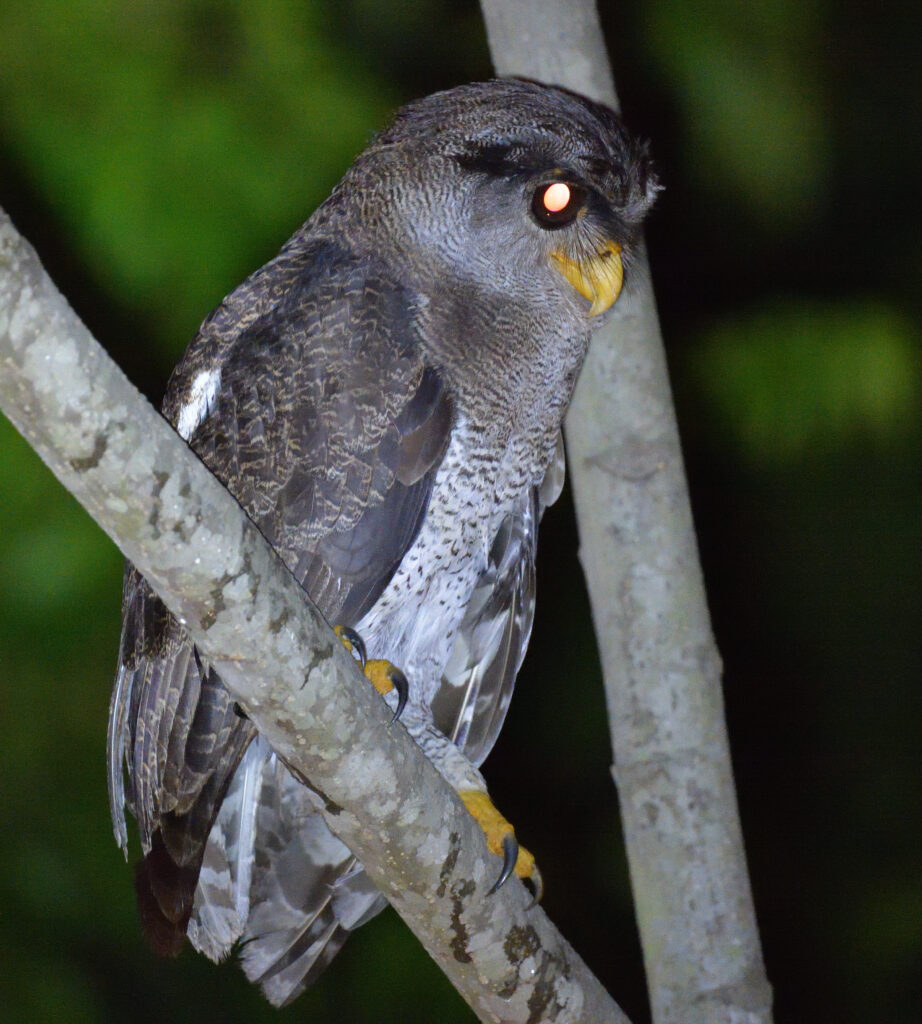
This morning, we set off on foot at 6.15am, spotting early birds like Emerald Dove, Lesser Green Leafbird, Blue-crowned Hanging Parrot, Little Spiderhunter and Sooty-capped Babbler, as well as a very large Cream-coloured Squirrel. At 7.30am, we reach the start of a canopy walkway, leading to a viewing platform 82 feet above the ground, and yet the trees here are easily more than double this height, and on the higher slopes, the treetops disappear into the low-lying clouds. Although this is prime rainforest habitat, it’s difficult to pinpoint birds in such a profusion of foliage, but we do spot Black-headed Bulbul and Raffles’s and Chestnut-breasted Malkohas, as well as a soaring Black Eagle. Back at the start of the walkway Cassy hears the haunting call of a Giant Pitta and after a patient wait, we eventually see it perched on the handrail of the walkway, although it doesn’t stay for long. Moving on, Cassy points out a blooming Tiger Orchid, growing from the trunk of one of the many tall straight tree trunks which make this rainforest so special. Next, she leads us along a narrow trail into the dense jungle, leading to a small clearing of about 75 square yards, and standing proudly in the centre is a magnificent male Great Argus Pheasant. With a long brush-like tail he is four feet in length, and it soon becomes apparent that he has created the clearing himself, as a ‘dancing ground’ to attract females, by picking up debris such as twigs, with his beak and throwing them to the sides. Between bouts of tidying up, he also raises his head and produces a loud bellowing double wail. For me, this ‘triple wow’ bird has to be the star of the entire trip so far!

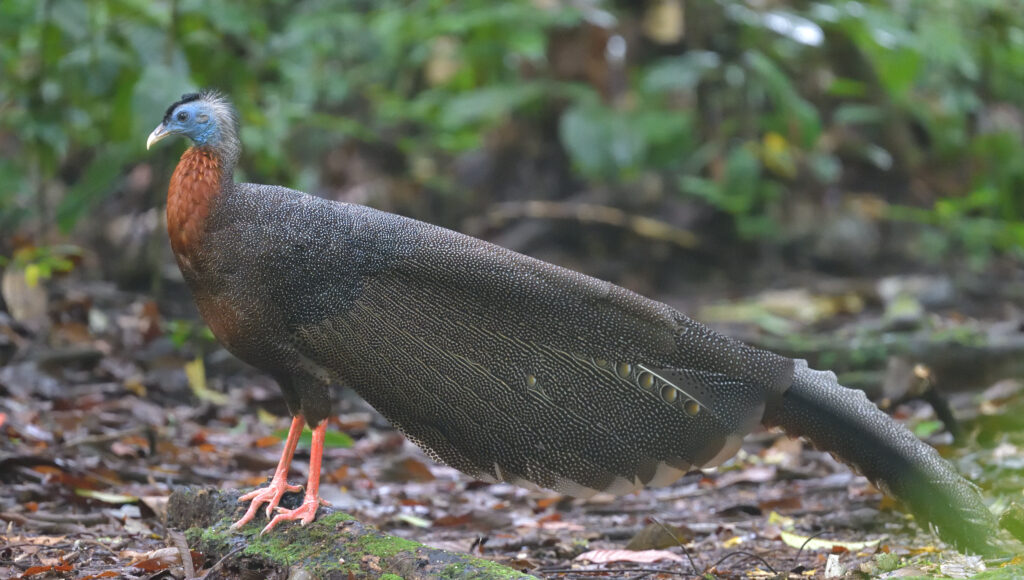
After lunch and another heavy downpour, we set off on foot again at 4pm, starting with a Lesser Fish Eagle sitting on a branch across the river from the lodge. Next, we find a family of Red Langurs with one blonde baby, feeding in trees not far from the lodge. Other sightings include Orange-bellied Flowerpecker, Dark-sided Flycatcher, Asian Black Hornbill and three Red Giant Flying Squirrels which put on a breathtaking aerial display as they glide for hundreds of feet from one tree to another.
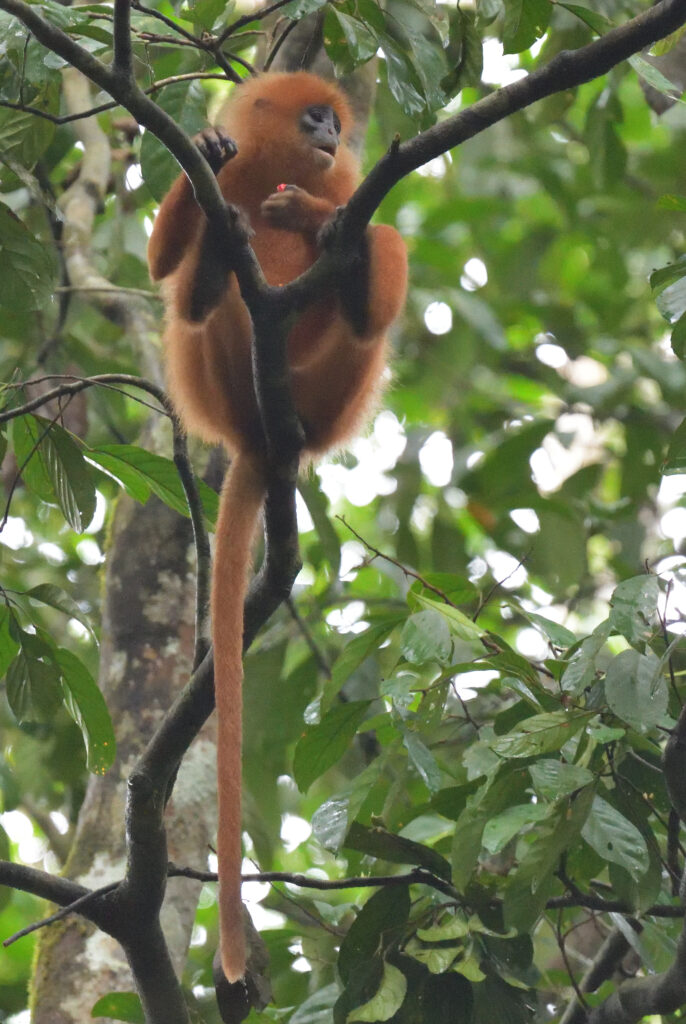

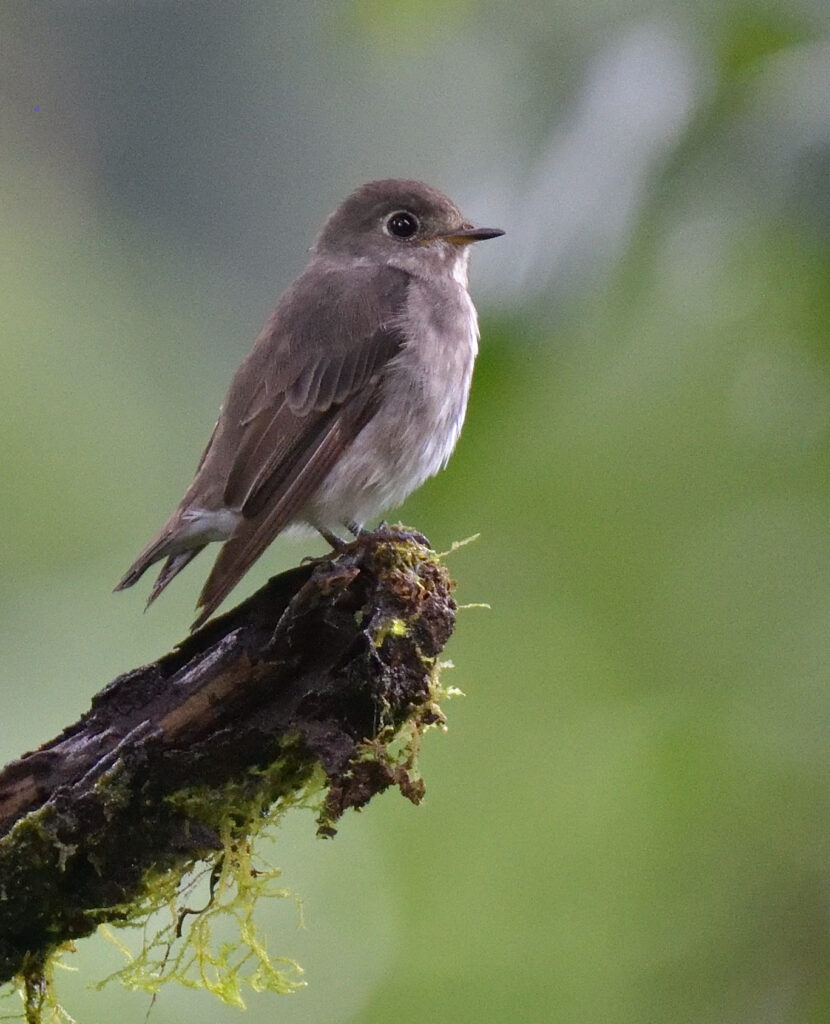
It’s all go here, with an after dinner night walk at 8pm, starting with a couple of Wallace’s Flying Frogs (no I’m not making this up) perched on twigs above a small pond. Next, we find a Guardian Frog with a stripe along its back and hind legs, so called because it carries its tadpoles on its back, sitting in the middle of the track, and then a very small juvenile Triangle Keelback Snake, lying motionless on a large leaf, with a Dark-eared Tree Frog sitting on the leaf below. Finally, on a boardwalk right outside the lodge, Cassy shows us a Blue-headed Pitta, sleeping on a small branch just above the ground, with an incredibly vivid blue belly and crown.
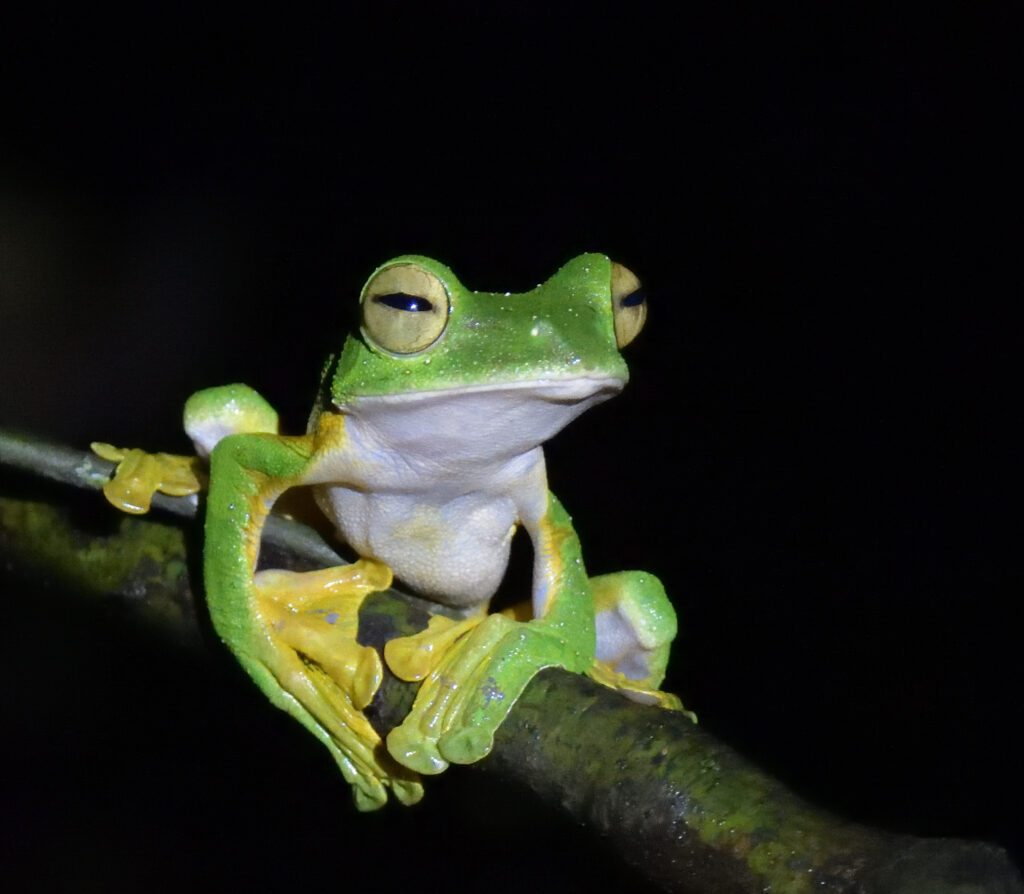
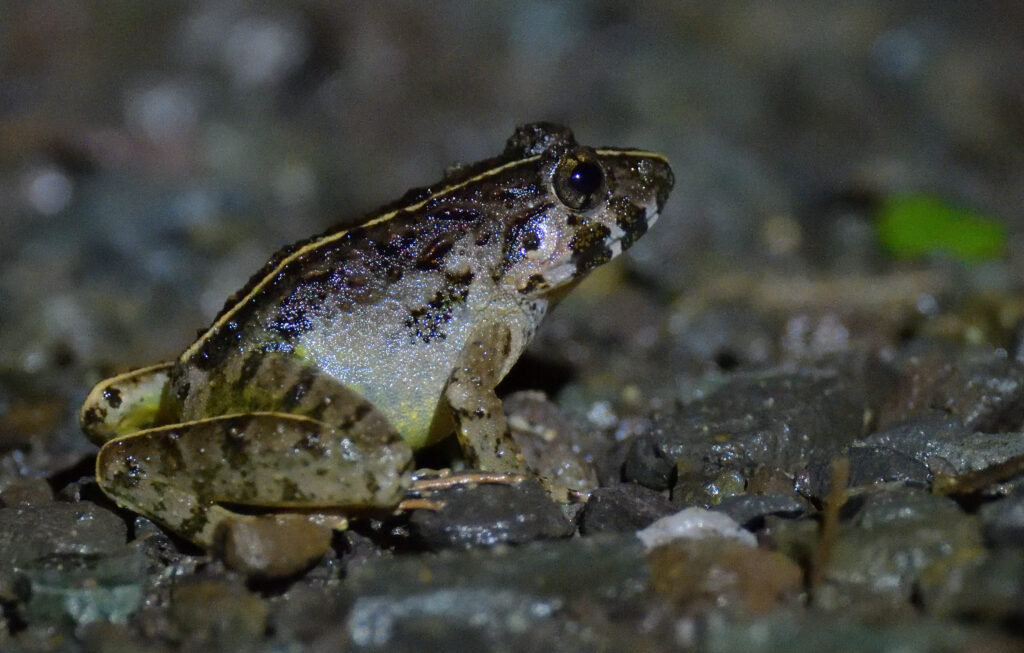
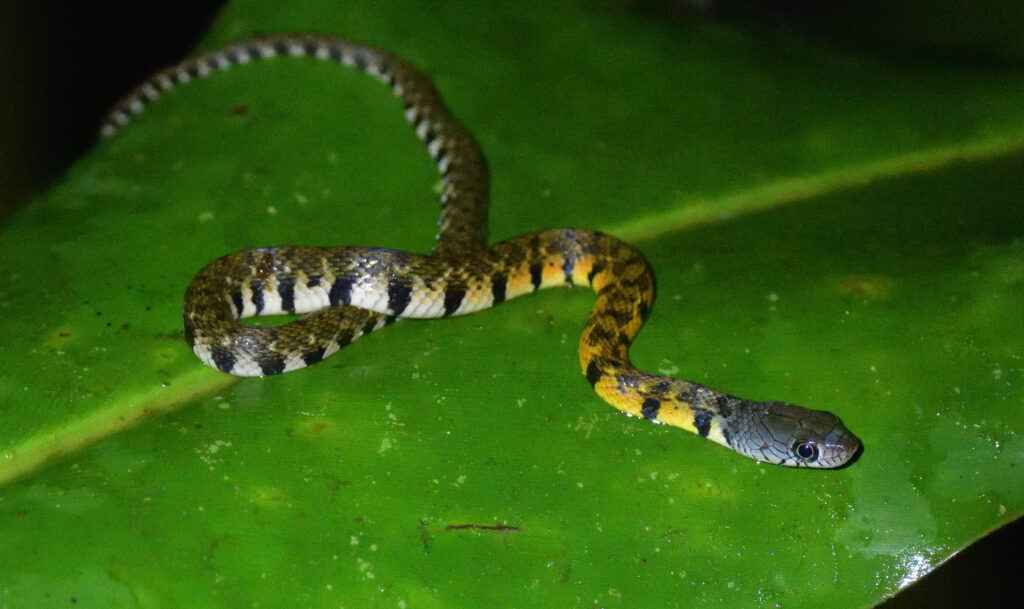

It’s our last morning in this wonderful rainforest and there’s no sign of the Blue-headed Pitta along the boardwalk, but we do find Sooty-capped Babbler and a singing White-crowned Shama. Back on the gravel track leading in and out of the lodge, we find a male Asian Paradise Flycatcher, a female Black-naped Monarch sitting in a tiny nest weaved onto a hanging vine, and a three inch long millipede which, if threatened, can roll itself into a sphere the size of a ping pong ball!
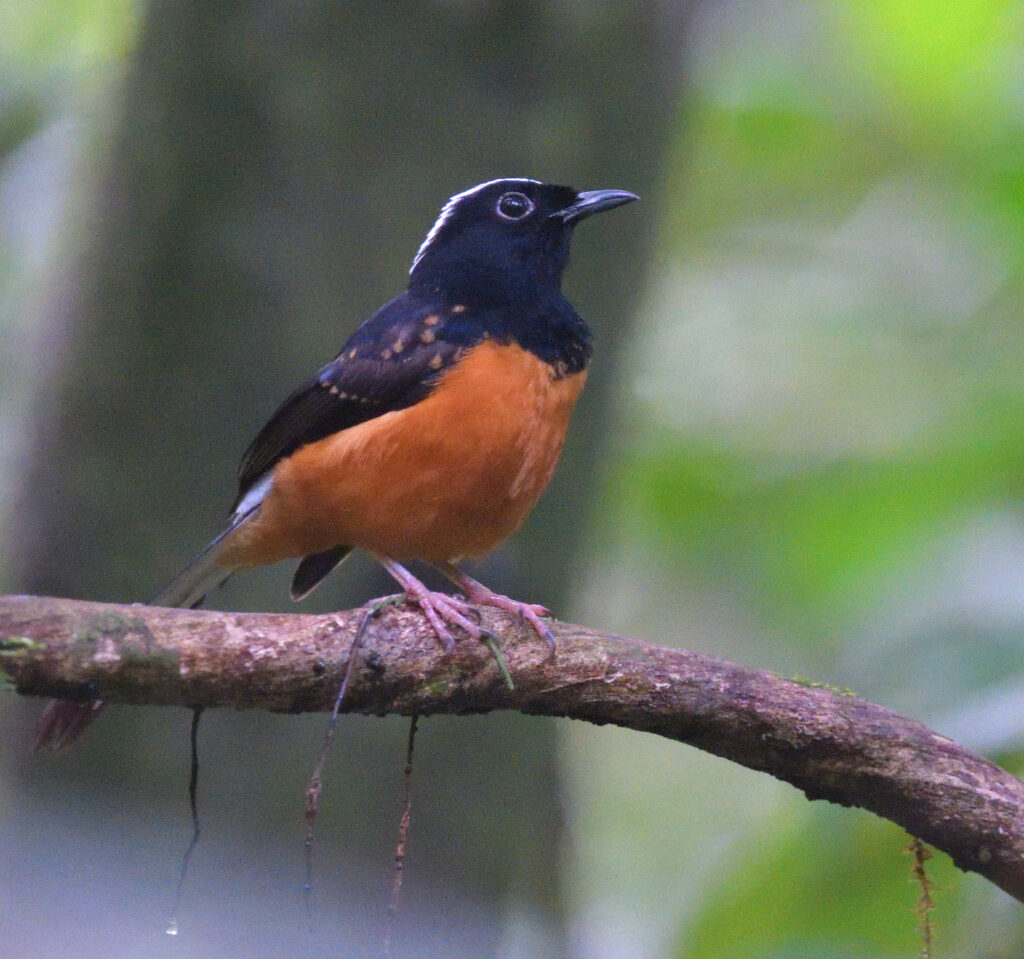
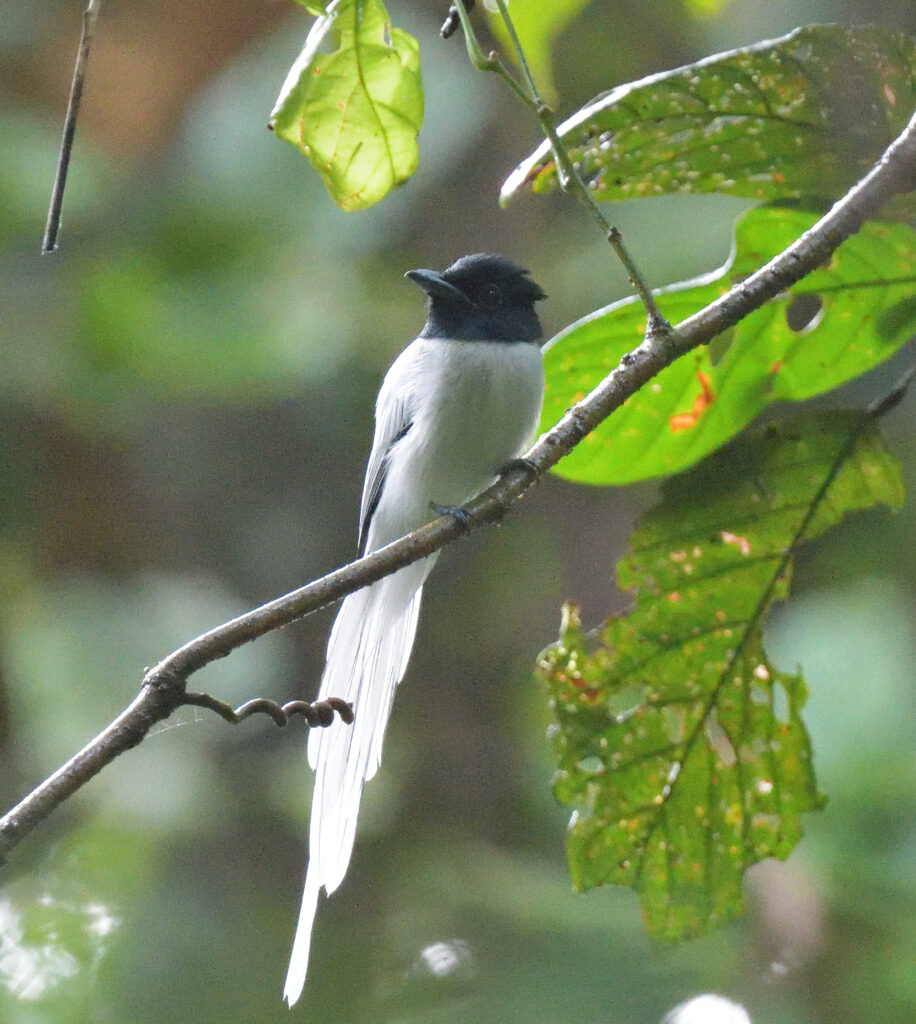
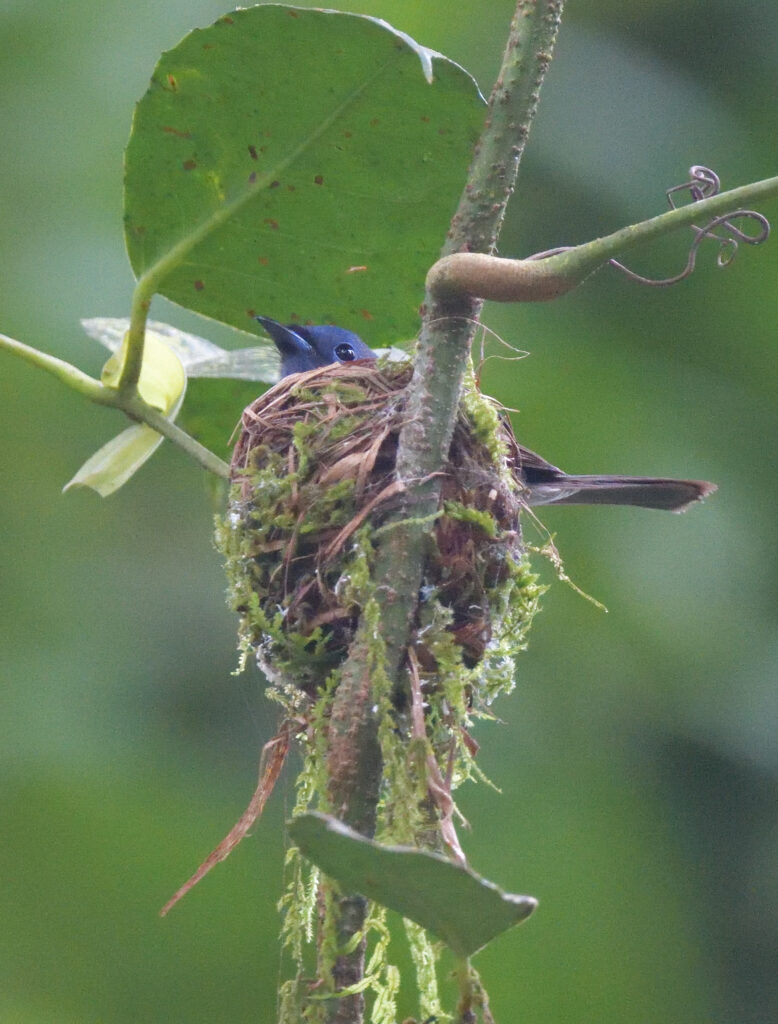

Back on the pitta boardwalk, we find a small group of Bornean Bristleheads and then spend a very relaxing half an hour overlooking the beautiful riverside location outside the lodge watching Glossy Swiftlets flying quickly to and fro, while Bushy-crested and Wreathed Hornbills fly across the river with slow purposeful wing beats. Little Spiderhunters feed on the nearby flowering bushes and our last new bird for the trip here is a brightly coloured male Eastern Crimson Sunbird.
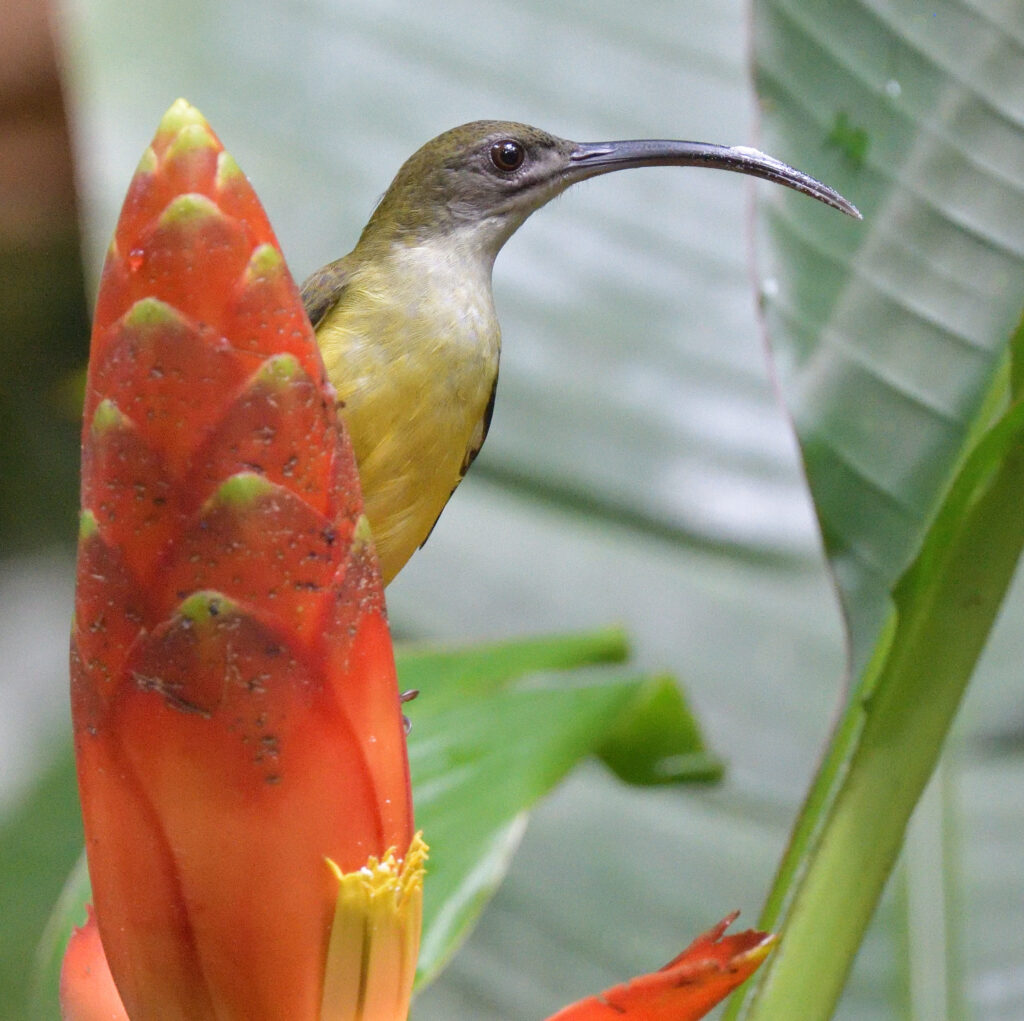
After lunch, we say goodbye to Cassy and the lodge staff and make the long drive back through the towering trees to Lahad Datu airport, for a flight to Kota Kinabalu. From the departure gate, we spot Intermediate Egret, Javan Myna and Paddyfield Pipit, which is new for the trip, making a total of 184 different birds seen, including 39 species found only in Borneo. Along the way, we had seen many spectacular natural highlights, such as the verdant forest scenery, the massive Rafflesia flower, the magnificent male Orangutan, the spectacular emergence of millions of bats from the Gomantong Cave, the swimming elephants and all those stunning exotic birds like the trogons, hornbills, barbets, broadbills, pittas and flowerpeckers, plus the weird Blyth’s Javan Frogmouth and of course, the amazing Great Argus Pheasant.
